

44 Different Types of Tourism That You Need to Try
By: Author Zachary Friedman
Posted on Last updated: March 14, 2024
Categories Travel , Travel Destinations
Home » Travel » 44 Different Types of Tourism That You Need to Try
There are a million different ways to travel. Some people prefer to be pampered in a luxury resort while others don’t even care if they have running water. Some people enjoy exploring crowded cities while others would rather venture as far from civilization as possible. To help you plan your next trip, this list outlines 44 different types of tourism. Hopefully, it inspires you to tour the world a bit differently.
One thing to keep in mind is that not all types of tourism will appeal to every traveler. Some are a bit controversial. Some are dangerous. This article is designed to inform you of your options and give you some ideas for future trips.

1. Adventure Tourism
The goal of adventure tourism is to explore remote destinations, participate in adventure activities, and maybe even take a bit of risk.
Many adventure tourists participate in physically challenging outdoor activities during their trips such as mountaineering, rafting, rock climbing, kayaking, or hiking. The United States, New Zealand, and Canada are popular destinations for this type of trip.
Some adventure tourists visit remote, hard-to-reach, or off-the-beaten-path destinations. West and Central Africa, North Korea, Turkmenistan, and New Guinea come to mind.
Adventure tourism can also mean traveling to regions where there is some risk. This could mean a risk of injury, disease, or encountering unfriendly locals. This is a very niche form of Adventure tourism.
2. Dark Tourism

Dark Tourism, a relatively new term, is defined as travel to an area where death, disaster, or tragedy occurred in the past. People visit these sites mostly for historical reasons or simply out of morbid curiosity. Humans seem to have a natural interest in death and disaster. Dark tourist sites are some of the most visited places in the world.
Dark Tourism Destinations include:
- Museums- The September 11 museum in New York City or the War Remnants Museum in Ho Chi Minh City, Vietnam for example.
- Monuments- The Vietnam Veteran’s Memorial in Washington D.C. or the Monument to the Murdered Jews of Europe in Berlin, for example.
- Memorials- The Kigali Genocide Memorial in Kigali or the 911 Memorial in New York City, For example.
- Battlefields- Taking a tour of World War I, World War II, or the United States Civil War battlegrounds is a popular tourist dark tourism activity.
- Natural Disaster Sites- Visiting Pompeii in Italy or Mount St. Helens in Washington State, for example.
- Concentration Camps – Auschwitz-Birkenau in Poland receives over 2 million visitors per year, making it one of the most visited dark tourism sites.
- Human-Caused Disaster Sites- Touring the Exxon-Valdez oil spill zone, for example.
- Sites Where Murders Took Place – For example, the Jack the Ripper tour in London or Lizzie Borden’s house in Fall River Ma.
- Graveyards- Visiting a celebrity’s gravesite for example.
- Catacombs- The catacombs in Paris is popular among dark tourists.
- Nuclear Disaster Sites- Chernobyl in Ukraine is one of the world’s most popular dark tourist sites.
- Shipwrecks- Wealthy tourists have visited the Titanic. There are plenty of fascinating shipwrecks anyone can dive.
- War Zones- People travel to active war zones. A good example would be taking a trip to Syria today.
- Slums- Dharavi in Mumbai or Kibera in Nairobi are some of the largest and most well known.
Some dark tourism sites are pretty controversial. Visiting war zones and slums cause ethical concerns among some groups of people. This is something to take into consideration before you go.
For more info, check out my complete dark tourism guide.
3. Ecotourism

Ecotourists visit exotic destinations to view pristine, fragile, and undisturbed natural environments. Visiting places that have not been affected by human interference. The goal is to experience these places while leaving as little impact on the environment as possible. Ecotourism is sometimes referred to as sustainable tourism.
Ecotourists aim to leave the environment as it was or better than when they arrived. The focus is on conservation. Ecotourists try to improve the well being of the environment and local people in the region. Ecotourism is quickly gaining in popularity as more and more people become interested in conservation and environmentalism.
One major benefit to ecotourism is that some of the money that tourists bring into the country is put into preserving the environment that they are visiting. This makes for a very sustainable form of tourism.
Popular Ecotourism Destinations
- Costa Rica- This is one of the most environmentally friendly countries on earth. The main draws of Costa Rica are rainforests, volcanoes, and both Pacific and Caribbean beaches. The country also has incredible biodiversity. The Costa Rican government works very hard to preserve nature and the environment through legislation and sustainable development.
- Galapagos Islands, Ecuador- Made famous by Charles Darwin, the Galapagos Islands are famous for their unique wildlife. Ecuador enforces strict guidelines for visitors in order to maintain the natural environment of the islands.
- Antarctica- The least-visited continent and one of the most untouched places on earth. Antarctica is an expensive but rewarding destination for ecotourists. The best way to get there is by cruise from Ushuaia, Argentina.
- Alaska- Also called The Last Frontier, Alaska is known for its vast stretches of tundra and wildlife. Visit national parks, glaciers, fjords, and mountains in this beautiful state. Ecotourism here is becoming increasingly popular.
- The Amazon Rainforest- This rainforest has the highest biodiversity of any place on the planet. Unfortunately, it is being destroyed at an unbelievable rate. Ecotourism practiced properly can help to save this special environment, even if only in a small way. You can visit the Amazon in Brazil, Colombia, Ecuador, Peru, or Bolivia.
4. Voluntourism
Voluntourism is a combination of tourism and volunteering. A voluntourist travels to a destination to do volunteer work. Usually for a charity organization. In their off time, voluntourists usually explore their travel destination like a normal tourist. This is becoming a major part of the tourism industry.
The volunteer work could be building homes, working in agriculture, teaching, etc. Anyone can take a volunteer vacation but you really need to have an in-demand skill for the work to be worthwhile.
This is one of the more controversial types of tourism. Before taking a volunteer vacation, you have to do your homework to make sure that your work will be worthwhile. Sometimes volunteer work can do more harm than good.
Popular Voluntourism Destinations
Volunteering opportunities can be found all over the world. Generally, you’ll find more openings in developing countries than in developed countries. A few of the most popular voluntourism destinations include:
- East and Southern Africa- You will find plenty of voluntourism opportunities in Tanzania, Uganda, and Kenya in schools and small farming operations.
- South and Southeast Asia- Cambodia, Vietnam, and Thailand are popular destinations for voluntourists.
- Central and South America- Mexico, Guatemala, Peru, and Ecuador offer plenty of volunteer opportunities.
There are a few arguments against voluntourism. It takes jobs from locals. If the work is unskilled, it is easy to find local labor. It is also inefficient. Flying across the world to do a job that someone who lives there could do doesn’t make any sense. Many charity organizations are corrupt or scams. Some actually charge people to volunteer. In this case, the volunteer is the customer. Sometimes nothing of value is created and the donations get pocketed by corrupt officials.
If you do choose to do volunteer work abroad while traveling, make sure that you understand and trust the organization that you are volunteering for.
5. Domestic Tourism
Domestic tourism is travel within the country in which you reside. This is sometimes referred to as a staycation. Domestic tourism offers an exciting and unique way to experience the beauty of your own country. You can enjoy domestic tourism wherever you live. Even if you don’t leave your city.
The classic road trip is probably the most popular form of domestic tourism. No matter where in the world you live, you can load up your car, motorcycle, or bicycle and set out on an adventure. Every country has camping and hiking opportunities. Domestic tourism is a fun and inexpensive way to explore your home country.
Domestic tourism is more common in some countries than in others. Generally, domestic tourism is more popular in larger countries. For example, domestic tourism is extremely popular in the United States, Japan, Germany, China, and India.
Domestic tourism is particularly popular in my home country, the United States. Because the country is so large and diverse, you could spend a lifetime traveling here and still not see it all. There are bustling cities, theme parks, sandy beaches, and spectacular national parks to visit. Millions of Americans exclusively travel domestically.
In smaller countries, d omestic tourism options are more limited. Having said that, regardless of where you live, there are dozens of interesting sites to visit within a couple of hours of your home. You could even simply tour your home town. Even if you’ve lived there your whole life, there are sure to be some new places you’ve never been.

Benefits of Domestic Tourism include:
- Domestic tourism is cheaper- Many domestic tourists choose to drive to their destination. This way, the only transportation expense is gas. If you choose to fly, domestic tickets are generally cheaper than international tickets. It’s also affordable to travel by bus or train. This makes domestic tourism far cheaper than international tourism.
- You get to see another side of your country- Domestic tourism allows you to experience your home country as a tourist and meet your fellow countrymen.
- Domestic tourism is easier and more convenient- There is no language barrier or culture shock to deal with. You don’t need any travel documents for domestic tourism. You don’t need to exchange money. Much less planning is required to travel domestically.
Domestic tourism may not be as exciting as international tourism. Staying in your home country isn’t s exotic as visiting a foreign country.
6. Medical Tourism
Medical tourism is travel for the purpose of receiving healthcare. This type of tourism is also called health tourism. A few of the most common procedures people travel for include cosmetic surgery, dental care, and cancer treatment. It is becoming increasingly common for people to travel abroad to buy prescription medications as well.
An entire industry is set up around medical tourism. For example, some doctors and dentists cater to foreigners traveling to their countries for treatment. They often hire English-speaking staff and may even offer hotel and food packages to make the process as easy as possible. The medical tourism industry is booming. This is quickly becoming a major part of the tourism industry in some countries.
There are a number of reasons people participate in medical tourism. Treatment may be cheaper in another country. Treatment options may be better. Sometimes a specific treatment is only available in another country.
Popular Medical Tourism Destinations
- The United States
7. Bicycle Tourism

Bicycle tourism is travel by bicycle. The average bicycle tourist covers about 50 miles per day, camps at night, and cooks many of their own meals. All gear is carried in panniers or bikepacking bags on the bike.
The main benefit of this type of tourism is that you get to see parts of the world between cities. Most travelers just take a bus, train, or plane from town to town and miss out on the rural areas in between. When bicycle touring, you get to see every inch of the country that you’re touring. You can smell flowers and feel the topography of the land as you cycle up and down hills.
Bicycle touring is one of the cheapest ways to travel. Accommodation and transportation costs are cut to almost nothing because you camp every night and have your own transport with your bike. You end up saving a lot of money this way. Some frugal bicycle tourists can travel on less than $500 per month.
There are several different styles of bicycle touring. Some bicycle tourists prefer off-road riding while others prefer to stay on paved paths or roads. Off-road bicycle touring is often called bikepacking. Credit card touring is bicycle touring in comfort. Most credit card tourists pack light, stay in hotels every night, and eat most meals in restaurants. Expedition bicycle tourists travel long distances through exotic countries. Some bicycle tourists spend years crossing continents and cycling around the world.
Top Bicycle Tourism Destinations
- Pamir Highway- This is probably the top bicycle touring destination. Here, you can experience the beautiful mountains of Kyrgyzstan and Tajikistan.
- Patagonia- Travel through the rugged south of Argentina and Chile and explore Torres del Paine, Tierra del Fuego, and many other spectacular destinations in the region. The most famous roads include Ruta 40 and Carretera Austral.
- Trans America- Travel across the United States. Most cyclists ride west to east starting in Oregon.
- US Pacific Coast- Travel from Canada to Mexico through the beautiful coasts of Washington, Oregon, and California.
- Nordkapp, Norway (North Cape)- This is the northernmost point in Europe that can be accessed by road.
- Alaska to Argentina- This long-distance rouge takes you across North and South America. Most cyclists take 18-24 months to complete the route.
- Europe to Asia- This popular route takes you across Eurasia. Many cyclists start their tour in their homes in Europe and end in China or Singapore.
- Cairo to Cape Town- This hardcore trip takes you across the entire continent of Africa. Check out my guide How to Plan a Cairo to Cape Town Trip for more info.
- Round the World- A great bucket list trip for bicycle tourists. Check out my guide: How to Plan a Round The World Trip for more info.
8. Sex Tourism and Romance Tourism
Sex tourism is a controversial type of tourism that involves traveling for the purpose of having sex in different countries around the world. People may choose to do this because prostitution isn’t legal in their home country. Some people wish to fulfill a fantasy that they can’t achieve in real life. Others travel abroad for sex because it is cheaper than in their home country. This type of tourism is much more popular among men but women participate as well.
Popular Sex Tourism Destinations
- The Netherlands
- The Philippines
- Dominican Republic
Romance tourism is travel for the purpose of finding a husband or wife. Someone may participate in this type of tourism if they are unable to find the right person in their home country. Sometimes people who have immigrated abroad return to their home country to find a partner.
9. Motorcycle Tourism

Motorcycle tourism is travel by motorcycle. This is a great way to see the world because you always have your own transportation. This means you don’t have to rely on buses or trains. You can stop wherever you want. The absolute freedom is hard to beat. Maybe the biggest benefit of motorcycle tourism is simply the fact that motorcycles are cool. You will make friends everywhere you go.
Adventure touring bikes are probably the most popular these days due to their comfort and off-road capabilities. You can explore places that the average cruiser or touring bike can’t reach. My last bike was a Suzuki DR 650. I regret selling it.
There are drawbacks to motorcycle tourism. Getting started traveling by motorcycle is pretty expensive. You have to buy a bike, protective riding gear, and learn to ride. This sets you back a minimum of a few thousand dollars before you even hit the road.
Some countries also require that you have a carnet du passage to enter with a vehicle. This is a bureaucratic process and also costs money. Shipping the bike between countries is a hassle and expensive as well. Motorcycle tourism is generally not for budget travelers.
Traveling between continents on a motorcycle is also a hassle. It usually involves putting the bike in a crate and shipping it. You can’t just hop on a plane to your next destination.
If you are on a tight budget, there is one way that you can experience motorcycle tourism on the cheap. Starting at about $150, you can buy your own motorcycle in Vietnam and ride it around much of Southeast Asia. For a step-by-step guide to doing this, check out my Guide to buying a motorcycle and riding through Vietnam.
10. Cultural Tourism
Cultural tourism is a form of tourism where the goal is to seek out cultural experiences. On a cultural tour, you might attend festivals and events, visit historical sites and monuments, explore museums, and galleries, take language classes or cooking classes, and participate in traditional activities.
Cultural tourism is an increasingly popular form of travel as it allows people to immerse themselves in new cultures and gain a more global perspective. Cultural tourism also provides economic development opportunities for locals.
A few different examples of culture include:
- Holidays and festivals
- Food and drinks
- Architecture
Culture is interesting because it varies so widely. In some parts of the world, you can travel just a few miles down the road and people completely change. They may speak a different language, eat different food, and pray to different gods. Human culture is diverse. Sometimes even shocking. This is a big part of the appeal of cultural tourism.
Cultural Tourism Activities
- Visit museums- This is one of the most popular cultural tourism activities. You can learn about the history and view the art of the local people.
- Try local restaurants- Sample the local food.
- Visit churches and other religious centers- Learn about the religious beliefs of the locals-
- Meet people inside their homes- See how people live day-to-day.
- Read books about the region- Learn about the origin of the local people and how their society has changed over time.
- Visit during a local holiday, festival, or celebration- Experience how the locals party and celebrate.
- Study the local language- Learning a few words can help you get to know the local people and understand the culture. Language greatly enhances cultural tourism.
Cultural Tourism Destinations
Every country has a different culture to learn about. Depending on where you come from, you may find some more interesting. A few of the most popular countries for cultural tourism include:
11. Rural Tourism

These days, most of the world’s population lives in cities. Some travelers like to take a break from the fast-paced and stressful urban lifestyle and travel to slower-moving rural areas. This is rural tourism. Rural tourism usually involves living a rural lifestyle, experiencing local culture, and learning local history.
Rural tourism has a lot of overlap with cultural tourism and ecotourism. Because rural areas don’t offer many major tourist attractions, you’ll mostly spend your time learning about and experiencing the rural lifestyle. You’ll also spend much of your time enjoying the outdoors.
One major benefit of rural tourism is that it provides economic opportunities for locals by allowing them to offer services such as farm stays, guided tours, homestays, and meals. This is important because rural areas tend to be poorer than cities.
Rural Tourism Activities
- Learning about agriculture- Wine tours or working with animals are common forms of rural tourism.
- Outdoor activities- Hiking, fishing, hunting, camping, etc. are considered rural tourism
- Relaxing- Read a book, take a walk, or enjoy the sun.
- Getting to know the local people- See culture tourism.
Best Destinations for Rural Tourism
- Much of Africa
12. Tribal Tourism

Tribal tourism involves travel to visit tribes or indigenous people that have had little contact with the outside world. The goal is to experience the culture and lifestyle of the locals. These areas are becoming rarer and rarer as the world becomes more developed and connected. There are only a few regions left on the planet where you can take an authentic tribal tour.
Many of the world’s tribes are no longer authentic. The people wear traditional clothing and basically put on a show for tourists. They may dance and perform ceremonies that their ancestors did. While it is interesting to see, it isn’t really authentic. There are a handful of places left where you can experience a real and thriving tribal culture.
This is another controversial kind of tourism. Many people argue that tourism to these regions is voyeuristic. Like looking at animals in a zoo. Some complain that visiting these tribes degrades their culture. After all, local community will be introduced to modern ways of living and thinking. These are valid points that should be considered before visiting. Is it ethical to visit tribal regions? I’ll let you decide.
Tribal Tourism Destinations
- The Omo Valley of Ethiopia- This incredibly diverse region in Southwestern Ethiopia is home to dozens of unique tribes. For a step-by-step guide to visiting, check out my guide: How to Visit the Omo Valley Independently and on a Budget. It includes everything you need to know about getting there from Addis Ababa, costs, etiquette, hotel recommendations, guides, and more.
- Papua New Guinea- The tribes of New Guinea are some of the most unique culturally. To visit, you’ll most likely have to hire a guide or join a tour group.
- The Amazon- To visit the tribes of the Amazon, you have several options. The best places to start are can Brazil, Peru, or Venezuela. Tours can also be organized from Colombia or Ecuador.
- India- Hundreds of fascinating tribes inhabit the country.
13. Business Tourism
Business tourism is travel for a professional purpose rather than leisure. Some companies send employees abroad for business meetings, conferences, trade fairs, consulting, negotiation, or various corporate events. While participating in business tourism, an employee is still doing work, just away from the office or home. During time off, a business tourist may have time to visit the tourist sites of the region that they are visiting. Various types of tourism can be combined with business tourism.
Business tourism is different from being an expat, digital nomad, or living abroad because it is only temporary. Generally, a business tourist is someone who is working abroad for one year or less. Most business trips last less than a week. Business tourists generally stay in hotels or accommodation provided by the company that they work for.
Business is conducted all over the world. This type of travel is slightly less common than it used to be because of the internet. Many meetings can be conducted online over video. Business tourism is still common.
Some of the most common business tourism destinations include Berlin, Dubai, New York, Paris, Shanghai, Tokyo, and London.
14. Birth Tourism
Birth Tourism is a controversial form of tourism where a pregnant woman travels to a foreign country to give birth to her child. The main reason for this practice is so the child obtains citizenship in the country where it was born. Once the child has citizenship, the parents will generally use it as a means of obtaining citizenship for themselves. The baby is often referred to as an anchor baby.
Laws vary from country to country. In the past, birth tourism was much more common. Laws were much less strict and allowed pretty much anyone born within the country’s borders to become citizens from birth.
These days, most countries either don’t allow birth tourism or don’t grant citizenship to children born there unless they meet specific requirements. Usually, one of the parents also has to hold citizenship in order for the child to be eligible for citizenship. Birth tourism is still common in North and South America but has been abolished in most of the rest of the world.
15. Sports Tourism
Sports tourism is defined as travel for the purpose of watching or participating in a sporting event. This type of tourism could involve professional sports, armature sports, team sports, or individual sports. This type of tourism is one of the fastest-growing in the tourism sector. Some of the world’s biggest events cater to sports fans. These include:
- Olympics Games
- Tour de France
- World Series
- and many more
Anyone who travels to watch a football game, basketball game, tennis match, auto race, etc. is also considered a sports tourist.
Those who travel to participate in sports are considered active sports tourists. The players and coaches and support all fall into this category of tourist. Some tourists travel to participate in extreme sports like skydiving, mountain climbing, mountain biking, surfing, skateboarding. These are also sports tourists.
16. Slum Tourism

Slum tourism, also called ghetto tourism, involves travel to some of the poorest neighborhoods around the world. Tourists come to see what life is like for the poorest people on earth. Mostly out of curiosity.
This type of tourism is not new. It originated in the 19th century in the slums of New York and London where wealthy tourists would travel to see how the impoverished lived in the two cities. These days, slum tourism almost exclusively occurs in the developing world.
Slum tourism is another controversial type of tourism. Many people claim that it is unethical to tour slums because it basically treats people like zoo animals. You are essentially entertaining yourself by touring areas where people are living in extreme poverty. Traveling to people watch just doesn’t sit well with some.
While I understand this argument, these neighborhoods are public places where anyone is free to wander. For this reason, it’s an acceptable activity in my mind. You are simply visiting a neighborhood within a city.

Slum Tourism Destinations
- Kibera in Nairobi, Kenya- This neighborhood claims to be the biggest slum in Africa. For info on visiting, check out my guide: How to Visit Kibera Without a Tour.
- Dharavi in Mumbai, India- Maybe the world’s most famous slums and also one of the biggest. This is where the 2008 movie Slumdog Millionaire takes place.
- Favelas in Rio de Janeiro, Brazil- For safety reasons, visiting the favelas is best done on an organized tour.
- Townships in South Africa- These are segregated communities outside of South African cities that were created during apartheid times.
- Skid Row, Los Angeles, California- This area contains possibly the largest homeless populations in the United States. Around 8000 people live in tents and in the street in this little square of downtown Los Angeles. This is one of the only slum tourism destinations in the developed world.
17. Genealogy Tourism
Genealogy tourism is a type of tourism where travelers visit the places their ancestors came from. This could be recent ancestry or distant ancestry. This type of tourism is much more common in countries with a high level of emigration.
Genealogy tourism is quickly growing in popularity because of the rise in interest in DNA testing from companies like Ancestry.com and 23andme.com. For less than $100 people can find out exactly where in the world their ancestors originated. As the technology develops, these services get more and more accurate. In some cases, they can pinpoint exact villages where your ancestors lived hundreds of years ago.
Some genealogy tourists visit places where they have much more recent roots. For example, if a couple immigrated to another country before having children, their child may wish to visit their parent’s homeland later in life. This is also considered genealogy tourism. In this case, the person may have living relatives in the place that they are visiting.
18. Package Tourism (Group Tourism)
Package tourism is a type of travel where accommodation, transportation, and excursions are combined and sold in a single package. Sometimes meals, drinks, and guides are also included. This can be a private tour or a group tour. A package tour is also called a package vacation or package holiday.
The main draw of this type of tourism is the simplicity. You pay once and the tour operators take care of everything for you. It’s easy and stress-free. You don’t have to worry about finding a hotel, choosing a restaurant, or struggling to figure out public transportation systems. This is a style of tourism many beginner travelers choose to participate in because it requires basically zero planning. This is one of the most popular types of tourism.
There are packaged tours available to pretty much every region. Many travelers choose to take packaged tours to Africa. Check out my guide to overland tours vs independent travel for more info.
Drawbacks to Package Tourism
- It takes away your freedom- With package tours, you’re pretty much stuck on a schedule. You can’t choose your own hotel, restaurant, or activity. Everything is pre-planned.
- Annoying people in your group- If you are traveling in a group, you may end up traveling with people that you just don’t like. Some people are entitled, some are picky, and some are just plain annoying. If you are on a private tour, however, this isn’t a problem.
- Bad guides- I have had some bad experiences with guides in my travels. Many give inaccurate facts, don’t know what they are talking about, or just don’t care about their jobs. Getting stuck with a bad guide on your packaged tour could ruin the whole trip.
- Expensive- Package tours almost always cost more than traveling independently.
19. Culinary Tourism (Food Tourism)

Culinary tourism, also called food tourism, is travel for the purpose of exploring different types of food and drinks around the world. Many travelers consider a destination’s cuisine to be as important as the climate, scenery, or accommodation. The popularity of culinary tourism has exploded over the past decade.
Culinary Tourism Activities
- Trying different restaurants- Some travelers plan their trips by eating at one specific restaurant. For example, Michelin star restaurants are popular tourist destinations.
- Taking cooking classes- Learning how to cook a new cuisine or dish at home is a popular form of food tourism. For example, Thai cooking classes are incredibly popular.
- Food festivals- Around the world, festivals are held to celebrate specific foods. Most large cities hold some type of annual food and drink festival. You’ll also find festivals that celebrate specific foods.
- Trying new foods- Sampling foods that you haven’t tried before is a major part of culinary tourism. This is one of my favorite things to do while traveling.
- Alcohol tasting- Including wine tasting, beer tasting, whiskey tasting, etc. Tasting different recipes of the same foods- Some dishes have many variations around a country. Try them all to find your favorite.

Culinary Tourism Destinations
Pretty much every country has at least one decent dish to try. Having said that, some countries just have better food than others. This could be for a number of reasons. Some parts of the world have benefited from trade and migration. New people come and bring their favorite foods along with them. Over the years, fusions develop and a new cuisine is born. Some parts of the world are just lucky and have unique flavors available in their region. Some of the top countries for food tourism include:
- France- Probably the top culinary tourism destination in the world. France has some of the best restaurants in the world. The quality level of the food here is top notch. Also known for the selection of cheeses and some of the best wines in the world.
- Italy- Everyone loves Italian food.
- China- The country offers an incredibly varied and delicious cuisine. Because the country is so large, Chinese food comes in a staggering number of varieties. Dishes vary greatly from region to region.
- Thailand- Some of the best curries and excellent street food. This is a great tourist destination for culinary tourists on a budget.
- India- This is the top destination for vegetarians. Options are endless. India has some of the best curries and spices. Street food here is also incredible. The food is also very affordable. For meat-eaters, options are a bit limited.
- Mexico- A very complex cuisine. Specialties vary by region. Try Oaxaca for the best Mexican food. For tacos, head to Tijuana. This is probably my favorite cuisine.
- Ethiopia- In general, East African food isn’t too interesting, in my opinion. Ethiopia is different. The country has a very unique and tasty cuisine.
- The United States- Due to a large amount of immigration, you can find restaurants serving pretty much any cuisine you can think of in the US. Portion sizes are also generous. San Francisco and New York are the top food tourism destinations in the country.
- Japan- Another favorite. Some of the finest seafood in the world is found in Japan.
20. Wellness Tourism
Wellness tourism is travel for the purpose of increasing your health. This could be physical health or mental health. Wellness tourism often involves some sort of spiritual activity like yoga, meditation, or prayer for example. This is quickly becoming a major part of the tourism industry.
Wellness tourism is similar to medical tourism with one major difference. G enerally, w ellness tourists don’t have anything in particular wrong with their health. They travel to maintain or improve their quality of life in general. The goal is often to prevent future health problems. This style of tourism focuses on low stress and relaxation. This is the main distinction between wellness tourism and medical tourism.
Wellness Tourism Activities
- Spa treatments- Great for relieving stress and relaxation.
- Cruises- A stress-free way to see the world.
- Resort stays- As the wellness tourism industry grows, many resorts are offering wellness-related activities.
- Medical treatments- Some clinics offer alternative medical treatment to improve health and well-being.
- Meditation- A popular stress-relieving activity that promotes mental health. Yoga- Promotes physical and mental health.
- Exercise- Many people don’t get enough exercise during their normal life. Vacations are a great time to develop new healthy habits. Nature hiking is a popular form of wellness exercise.
- Prayer- Wellness tourism can integrate some religious activities.
While it is generally agreed upon that vacationing is good for health and well-being, it has not yet been established whether wellness-related activities offer any benefit over normal vacation activities. Many of these activities can be fun and relaxing, but offer no benefits after the vacation is over.

Top Destinations for Wellness Tourism
Wellness tourism is currently a very niche market. North America currently has the largest wellness tourism infrastructure followed by Europe. A few top destinations include:
- British Colombia, Canada
21. Recreational Drug Tourism
Recreational drug tourism is travel for the reason of purchasing or using drugs. People travel to use drugs because they are illegal, difficult to obtain, or more expensive in their own country. This is different from medical tourism where people may travel to purchase prescription drugs. In the case of recreational drug tourism, the drugs are not for health purposes, rather just for fun.
Recreational Drug Tourism Destinations
- Peru- Ayahuasca tours in the Amazon rainforest are popular.
This is a very controversial type of tourism because many people around the world are against the use of drugs for moral, religious, or economic reasons.
22. Nautical Tourism
Nautical tourism as a type of travel involving boating. This includes both motor boating and sailing. A few popular nautical tourism activities include:
- Cruising- Travel from port to port by boat. A vacation on a cruise ship can also be considered nautical tourism.
- Sailing- If you know how to sail, you can rent a sailboat at yacht clubs around the world. Sailing lessons are also popular in warm weather destinations.
- Regattas- Travel for boat racing.
- Attending boat shows- Some tourists travel to view classic wooden boats.
Top Nautical Tourism Destinations
Nautical tourism is most popular during the summer and in warm weather tourist destinations. You can go on a nautical tour anywhere where there is a body of water. This includes oceans, lakes, or rivers. The Caribbean and Mediterranean are probably the most popular regions for nautical tourism.
23. Agritourism (Agrotourism)
Agritourism is travel which involves agriculture. Generally, this means visiting a farm or ranch. This style of tourism is quickly growing as people become more and more interested in the foods they eat and where they come from. Sustainability is a big part of agritourism. Agritourism is quickly becoming a major part of the tourism industry. This is similar to rural tourism.
Agritourism Activities
- Farm stays- This generally means staying on a farm and working. Farm work is a good way to clear the mind and learn new skills. It is also a method backpackers and budget travelers use to expand the length of their trip. Websites such as WWOOF International and Workaway allow travelers to work in exchange for room and board. Farm work is a popular option because everyone can contribute in some way.
- Buying meat, eggs, or produce directly from a farm or ranch – Some people like to know exactly where their food comes from. Traveling to purchase fresh or organic food can be made into a vacation.
- Picking fruits and veggies- Visiting a farm and harvesting your own food can be a fun way to spend an afternoon. As a bonus, you know that the food is fresh. Strawberries, pumpkins, and cherries are popular crops you can harvest.
- Working with animals- Collecting chicken eggs, milking cows, feeding pigs, etc.
- Learning new skills- Agritourism can be an educational activity. For example, you could learn about planting seeds, raising animals, harvesting produce, etc. Learning how food is made and where it comes from can be fascinating.
- Wine tasting- Visiting vineyards and learning about wines and how they are made is a popular activity in many regions throughout the world.
- Staying at a bed and breakfast- Vacationing in rural areas offers a different experience from the city. See rural tourism above for more info.
- Beekeeping- Visit an apiary and learn about how honey is made.
Popular Agritourism Destinations
Pretty much every country has agricultural regions that you can visit. A few of the best agritourism destinations include:
- The United States- Farming and ranching is a big part of American culture. The US is the top tourist destination for agritourism.
- Canada- A large country with plenty of rural areas to explore.
- Australia- Many backpackers visit Australia on working holiday visas. They spend part of their time working on farms and ranches. This is a style of agritourism.
- France- The top wine destination in the world.
24. Religious Tourism

Religious tourism is one of the oldest forms of tourism. Religious tourism, also known as faith tourism, is a growing trend, where travelers visit places that are either the birthplace of a major figure in their religious faith, memorialize important events in their religion, or simply experience the culture and spiritual practices of another faith. Pilgrimages can also be considered religious tourism. Non-religious people can also participate in religious tourism by visiting religious sites and learning about the history of various religions.
Religious Tourism Activities
- Pilgrimages- This is a journey that is usually made for religious purposes. This is the most common type of religious tourism. It is estimated that around 300 million people participate in pilgrimages each year.
- Missionary work- Many religions require that their members take time to travel to spread the ideas of their religion.
- Faith-based vacations- This includes cruises, resorts, camps, etc which cater to people belonging to a certain religion.
- Religious ceremonies- Some religions hold meetings , conventions, or ceremonies where members from around the world can get together.
- Visits to holy cities- Vatican City, Jerusalem, and Varanasi are examples of holy cities which are popular with religious tourists.
- Visits to shrines, churches, monasteries, temples, or any religious site- This is a religious tourism activity that non-religious people participate in. Everyone can appreciate the architecture of a beautiful cathedral or ancient religious structure. If you travel to Europe and visit a cathedral, you’re participating in religious tourism.
Popular Religious Tourism Destinations
- Vatican City- St. Peter’s Basilica sees about 7 million visitors per year.
- Jerusalem, Israel- The Western Wall is one of the most sacred sites in Judaism.
- Mecca, Saudi Arabia- Muslims from around the world make the pilgrimage to the Great Mosque of Mecca each year for Hajj. Up to 5 million Muslims make this pilgrimage each year.
- Varanasi, India- Over 21 million religious tourists travel to Varanasi to visit the Kashi Vishwanath Temple each year.
- Mexico City, Mexico- Basilica of Our Lady of Guadalupe receives around 20 million visitors per year.
- Paris, France- Notre Dame Cathedral receives almost 14 million visitors per year.
25. Solo Tourism (Solo Travel)

Solo Tourism is any kind of travel that is done alone. This means without a guide and without any friends or family. You organize everything by yourself including transportation, accommodation, and activities. You choose what you eat and how you organize your days. A solo tour can be a simple weekend getaway or a multi-year sabbatical.
Reasons to Travel Alone
- Getting out of your comfort zone- When you’re traveling alone, nothing is familiar. This is a great experience if you’ve fallen into a routine that you don’t enjoy.
- The feeling of independence- When traveling alone, you rely on yourself for everything. If you get into a situation, you have to find a way to get yourself out of it. This leads to a feeling of accomplishment.
- The absolute freedom- There is no one there to tell you what to do. If you feel like going out for pizza, no one can stop you. If you feel like catching a bus and heading east, that is your decision to make.
- No one else to travel with- Sometimes it’s difficult to find a travel buddy for certain trips. Rather than not going at all, you may prefer to travel alone. For example, when I went to Africa, I knew that none of my friends would have any interest in tagging along so I happily went solo.
Drawbacks of Solo Tourism
- Doing things alone- After years of solo travel, I’ve gotten pretty comfortable spending time with myself. With that being said, I still have trouble going to bars alone. I just don’t find it very fun.
- You have to be more careful- If you get sick or injured while traveling alone, it’s up to you to make sure you make it to a hospital or clinic for treatment. No one else is going to help you. For more info, check out my guide: Is Solo Travel Safe? Avoiding Crime and Scams.
- Some people think it’s strange- There is a bit of a negative stigma to solo travel. For whatever reason, some people just don’t get it.
For help deciding whether or not this type of tourism is for you, check out my guide: Solo Travel Vs. Groups Travel: My Pros and Cons List
Top Solo Tourism Destinations
- Southeast Asia- From my experience, this region contains the greatest concentration of solo travelers. Thailand, Cambodia, Laos, Vietnam, Malaysia, and Indonesia are all popular tourist destinations in the region. Southeast Asia is also affordable and easy to get around. One thing I love about this destination is the street food. It allows me to enjoy the cuisine without having to eat in restaurants alone.
- Western Europe- This is another region that sees a large number of solo travelers. It’s also incredibly easy to get around with the extensive train and bus network. Hostels are available in almost every decent-sized city.
- Central and South America- These regions see a lot of tourists. They are also affordable and easy to get around.
- India- An affordable country to travel with great transportation infrastructure, world-class food, and a fascinating culture.
For more solo travel ideas, check out my guide: The Best Solo Travel Destinations. Also, check out my first solo trip review.
26. Extreme Tourism
This is a type of tourism which involves travel to dangerous areas or participating in dangerous sports or events. In most cases the danger is not real, rather perceived. The goal is an adrenaline rush. Extreme tourism is very similar to adventure tourism.
Extreme Tourism Activities
- Bungee jumping
- White water rafting
- Mountain climbing
- SCUBA diving
- Shark cage diving
Top Extreme Tourism Destinations
Generally, extreme tourism activities take place in the mountains or the ocean. A few popular destinations include:
- New Zealand
27. LGBT Tourism
Also called Gay tourism, LGBT tourism is a type of travel designed for people who are gay, lesbian, bisexual or transgender. Unfortunately, many countries around the world are dangerous or unwelcoming to LGBT people so they must put extra care when traveling or planning a vacation for the following reasons:
- Some countries criminalize homosexuality- This is particularly common in African and middle eastern countries. For example, in Uganda, homosexuality is punishable with life in prison. When I was traveling in Ethiopia, I asked a guy how gay people are treated in the country. He explained to me that the punishment is 18 years in prison.
- Some businesses do not serve gay people- Even in my home country, the United States, there are stories of bakeries refusing to make wedding cakes for gay couples. Around the world, many hotels and restaurants refuse service to gay people.
- In some regions, local people are violent against gays- This happens in many regions across the world.
Popular LGBT Tourism Destinations
- Pride parades
- LGBT friendly cities and neighborhoods
28. Experimental Tourism
In an experimental tour, destinations and itineraries are chosen based on a game, idea, or experiment. This often involves some kind of humor or chance. Examples of experimental tourism include:
- Throwing a dart at a map and going wherever it lands- This is probably the most classic example of experimental tourism.
- Walking down a street and turn in alternate directions at each corner- For example, turn left on the first corner, turn right at the next, etc.
- Going to the airport and buying the next available ticket- Another classic example.
- Going to a popular tourist site and taking a photo in the opposite direction- This gives you a different perspective of your destination.
- Traveling separately to the same city with a friend and finding each other once you arrive- This turns travel into a game of hide and seek.
- Taking a map of the region you are visiting and randomly selecting a location on the map grid then going there- Similar to throwing a dart.
- Visiting multiple locations of a particular business- For example, this experimental tourist has traveled to over 14,000 Starbucks locations around the world.
29. Danger Tourism
Similar to extreme tourism, danger tourism involves travel to dangerous places or participating in dangerous events or activities. In this type of tourism, there is a real risk of injury or death involved.
Examples of Danger Tourism
- Travel to regions that are at war or in states of unrest- Visiting Syria during the civil war or visiting Somalia, for example.
- Travel to regions where terrorists are known to operate- Traveling to Northern Nigeria, for example.
- Participating in extreme sports- Diving with sharks without a cage or wingsuit diving, for example.
- Travel to high crime cities or regions- Visiting Caracas, Venezuela or Tijuana, Mexico for example.
- Traveling through inhospitable regions- Antarctica or the Sahara, for example.
There is a certain level of risk in all travel. Some trips are just on another level. In a danger tour, there is some chance that you are injured or killed.
30. Suicide Tourism
This isn’t a type of tour you want to go on, but I’ll describe it anyway because it is a type of tourism that, sadly, seems to be growing. Also known as euthanasia tourism, suicide tourism is traveling with the intent of committing suicide.
The main reason people choose to travel to commit suicide is because in some countries physician-assisted suicide is legal. Some countries sell drugs over the counter that can be used to commit suicide.
Suicide Tourism Destinations
- Switzerland- The law allows the right to assisted suicide to foreigners.
- The Netherlands- Dutch law permits physician-assisted suicide in some cases.
- Mexico- A particular drug, which is manufactured to euthanize pets, is sometimes purchased by humans trying to commit suicide.
- The United States- Currently Oregon and Washington have laws that allow residents the right to euthanasia under a strict set of circumstances.
31. Disaster Tourism
Disaster tourism is travel to a location where an environmental disaster is currently occurring or has occurred in recent years. This disaster could be man-made or natural. Most tourists choose to visit these destinations out of curiosity. Viewing an area that has been destroyed is interesting in a morbid kind of way. Looting could also be a motivation for criminals.
Examples of Disasters
- Terrorist attack
- Nuclear accident
- Accidental explosion
This is a controversial type of tourism. There are two schools of thought when it comes to the ethics of disaster tourism. Some people believe that it is immoral for tour companies to profit off of the bad fortune of others. Also that it is voyeuristic to essentially people watch during a low point in someone’s life.
Others say that disaster is good because it allows people to see first hand what exactly is happening. This raises awareness and allows people to be empathetic to fellow human beings going through a rough time. Disaster tourism may also stimulate the local economy during a time where money is needed.
Both sides have a point. In my opinion, disaster tourism is fine as long as you aren’t adding to the suffering by making the life of the victims harder. For example, looting during a disaster situation is unacceptable.
Disaster Tourism Destinations
- The site of the 1986 Chornobyl nuclear disaster- This is probably the most famous disaster tourism destination. Even though it’s been over 30 years since the meltdown, the region is still suffering from the effects of radiation. Most tourists visit the site on organized tours from Kyiv.
- New Orleans after Hurricane Katrina- Even after almost 15 years, effects from the hurricane can still be seen in the city. Organized tours take visitors to different neighborhoods to teach about the events and history of the city.
- Pompeii- The city was destroyed during the eruption of Mount Vesuvius in 79 AD. Today, over 2.5 million tourists visit each year.
- The site of the Hindenburg incident- On May 6, 1937, the Hindenburg airship blew up near Lakehurst Naval Air Station in New Jersey. Today, a plaque marks the site of the accident.
32. War Tourism
War tourism is defined as recreational travel to a former or active war zone. The purpose is usually to better understand the history of a particular war or battle.
The most common form of war tourism is travel to battlegrounds from famous wars. At these sites, you’ll find plaques, museums, artifacts, and tours of the actual battle sites.
Some hardcore travelers choose to visit active war zones for the thrill and unique experience. Of course, this practice is incredibly dangerous and controversial.
War Tourism Destinations
- WWI Battlegrounds- Including Verdun, Somme, Ypres, and more.
- WWII Sites- Including the site of the D day landing in Normandy, Oradour-Sur-Glane in France, Warsaw Ghetto, Concentration camps, Anne Frank’s House, Oscar Schindler’s factory in Krakow, and many more.
- US Civil War Battlegrounds- Including Fort Sumter, Shiloh, Antietam, Gettysburg, and more.
- Active war zones- A few possible destinations include Ukraine, Yemen, and Syria. Some sources also consider parts of Mexico to be active war zones in the war on drugs.
33. Urban Exploration Tourism
Urban exploration is a type of tourism that involves exploring man-made structures. Usually, these are places that have been abandoned and left to sit for long periods without any upkeep. These sites are in a state of ruin and decay. Urban exploration can also involve visiting sites that are just hidden or difficult to access.
This type of tourism usually involves trespassing and can result in fines or punishment. There can be some danger involved as well. Dilapidated buildings may not be structurally sound. It would be easy to fall and injure yourself. You could inadvertently expose yourself to asbestos as well as toxic chemicals and gasses. There is a high level of risk involved.
Urban Exploration Tourism Destinations
- Abandonments- Visiting abandoned places of any kind including houses, factories, asylums, amusement parks, schools, etc. are all forms of urban exploration tourism. For example, some tourists visit Detroit to view the large number of homes and factories that were abandoned during the population decline of the city. Japan also has a large amount of abandoned infrastructure due to its rapid industrialization and economic decline of the late 80s and early 90s. The Salton Sea in California is another popular destination to view abandoned homes, roads, and other infrastructure.
- Rooftops- Some urban explorers climb to the top of buildings and structures to enjoy a bird’s eye view of the area. These structures could be in use or vacant.
- Catacombs- A number of cities have underground catacombs including Paris, Odessa, Rome, and Naples. Explorers usually find an entrance and visit parts of the tunnels that are not open to tourists.
- Tunnels- Utility and transit tunnels are popular areas for urban explorers to visit. They seek out an access location, enter the tunnel, and begin exploration. Many large institutions like hospitals and universities have utility tunnels. Large cities have transit tunnels where underground trains run. These tunnels could be in use or abandoned.
- Sewers and storm drains- This type of urban exploration involves finding an entrance to a city’s underground water and waste management system.
34. Budget Tourism (Budget Travel)
Budget tourism involves travel on with a small amount of money. Limiting your budget can be done for the purpose of adventure or simply due to a lack of funds. Budget tourism proves that you don’t have to be wealthy to travel.
Backpackers are the most common type of budget tourist. This style of travel involves traveling by public transportation and staying in hostel dorms most nights. Bicycle tourists, hitchhikers, vagabonds, campers, and hikers can also be considered budget tourists.
The budget depends on where you’re traveling and how many comforts you’re willing to give up. Some travelers can get by on $5-$10 per day. This is what I would consider budget travel. Other travelers consider $100 per day to be a low budget. The average budget tourist probably spends somewhere around $1000 per month on average.
A few ways to cut your travel budget include:
- Hitchhiking- This is a great way to cut your transportation budget. In much of the world, it’s easy to get a free ride between cities. In some places, you’re expected to help with gas money.
- Wild camping- If you travel with a shelter and sleeping bag, you can sleep for free in many places around the world. Sometimes this is legal and sometimes it’s not.
- Foraging- If you’re familiar with the local flora, you can harvest many types of berries, mushrooms, nuts, etc. This can help you cut your food budget.
- Couchsurfing- Another great way to cut your accommodation budget. Several websites exist which can help you find a host including Couchurfing.com and Warmshowers.org.
- Walking and Cycling- Cut your transportation budget by traveling under your own power.
- Cooking your own food- It’s much cheaper to buy groceries and cook for yourself than to eat in restaurants. Even if you don’t have a kitchen, you can cook up some basic meals in your hotel room.
Budget Tourism Destinations
- India- This is the ultimate budget tourism destination. Shoestring travelers can get by on as little as $15 per day while maintaining a comfortable diet and lifestyle.
- Southeast Asia- This is the top destination for budget tourists. It’s fairly easy to get by on $20 per day and live in relative comfort. The cheapest countries in the region include Cambodia, the Philippines, and Indonesia. Thailand, Vietnam, Laos, and Malaysia are also very affordable to travel.
- Central America- This is another incredibly affordable region. It’s possible to get by on around $20 per day in most of the region. Some of the cheaper countries include Guatemala, El Salvador, Honduras, and Nicaragua. Costa Rica and Panama are not budget tourist destinations.
- Eastern Europe- This region isn’t the cheapest but it offers excellent value. Some of the cheaper countries include Bulgaria, Romania, Ukraine, Moldova, Albania, and Macedonia.
35. Space Tourism
This type of tourism involves travel to space for recreational purposes. This could mean orbital, suborbital, or lunar space.
So far, only a handful of people have traveled to space recreationally. Between 2001 and 2009, the Russian Space Agency allowed civilians to travel to the International Space Station in a Soyuz spacecraft. This is no longer an option.
At this time, there are no available space tourism options but there are a few companies working on it. Within the next few years, aerospace companies like Boeing, Space X, Blue Origin, and Virgin Galactic plan to begin offering recreational trips into space.
36. Wildlife Tourism

Wildlife tourism is travel for the purpose of viewing and interacting with animals and plants in their native habitat. Most wildlife tourism takes place in protected areas such as national parks and game reserves.
The best example of wildlife tourism is a safari. Millions of people travel to Africa every year to view elephants, rhinos, giraffes, zebras, leopards, and lions in their natural habitat. A few top destinations include Kenya, Tanzania, and South Africa. Some popular safari parks include Serengeti National Park, Masai Mara National Reserve, Ngorongoro Crater, Kruger National Park, Ambroseli National Park, and Chobe National Park. Another example of wildlife tourism is whale watching.
A few more popular wildlife tourism destination is the Galapagos Islands, Borneo, Madagascar, and Costa Rica.
37. Sustainable Tourism
Sustainable Tourism is an approach to travel that focuses on environmental, social, and cultural conservation. It involves minimizing the negative impacts of tourism while maximizing its potential for benefiting local communities and providing an enjoyable experience for tourists.
Sustainable tourism emphasizes awareness of environmental challenges, caring for both people and the planet by reducing the consumption of natural resources, supporting local economies, and preserving local culture. The goal is to create a better environment for future generations.
38. Educational Tourism
Educational tourism is a type of tourism where the goal is to learn something new and broaden your horizons. This could be formal education through a university or school. For example, study abroad is a form of educational tourism.
Traveling to learn another language could also be a form of educational tourism. Many people travel to Latin America to take Spanish language courses.
Traveling to learn a new skill could also be a form of educational tourism. For example, maybe you’re traveling to take surf lessons, ski lessons, or SCUBA diving lessons.
Traveling to learn about history or culture could also be a form of educational tourism. Maybe you’re visiting museums, battlegrounds, or attending a cultural event with the goal of learning.
39. Mass Tourism
Mass tourism involves thousands or even tens of thousands of people traveling to the same destination for the purpose of tourism. They could be traveling to a resort, city, or a particular event. Mass tourism is one of the most common types of tourism.
For example, a good example of mass tourism is Disney theme parks. Around 161,000 people visit a Disney park per day. Cruises are another good example of mass tourism. The largest cruise ship can hold almost 10,000 passengers.
Some cities also attract massive amounts of foreign tourists. For example, Venice is probably the best example. Bali, Barcelona, and Amsterdam also experience mass tourism.
Events such as Carnival, Oktoberfest, and Mardi Gras also attract mass tourism. Religious events such as Hajj can also be considered mass tourism.
40. Music Tourism
Music tourism is travel for the purpose of attending music festivals or watching a musical performance. If you travel to see your favorite artist perform, you’re a music tourist. A few of the most popular music tourism destinations include Memphis, Berlin, Havana, London, Vienna, and Tokyo.
41. Wine Tourism
Wine tourism involves travel for the purpose of tasting, drinking, and buying wine. During a wine tour, you could visit different wineries, sample different wines, walk around the vineyard, or even learn about wine making. It is a type of food tourism. Wine tourism is also known as Enotourism, oenotourism, or vinitourism.
A few of the most popular destinations for wine tourism include France, Italy, Portugal, Argentina, Greece, Australia, Spain, New Zealand, Georgia, South Africa, and the United States.
42. Beach Tourism

Beach tourism involves visiting beaches, coastal cities, and beach resorts with the intention of enjoying the beach, sun, sand, and water sports. This is one of the most common types of tourism. Millions of people travel to the beach every year.
A few of the top beach tourism destinations include Spain, Thailand, Australia, the United States, Brazil, Mauritius, the Bahamas, the Philippines, and more. There are thousands of spectacular beaches around the world.
43. International Tourism
International tourism is travel to another country. It is an important aspect of the global economy, as tourists contribute by spending money on hotels, restaurants, transportation, and entertainment. International tourism is a major part of the tourism industry. In addition to money, international tourism also brings culture, knowledge, and understanding. This can help to bridge divides between nations and cultures.
Whenever you travel to another country, you are participating in international tourism. Even if you just cross over the border for a day. International tourism is generally more expensive than domestic tourism.
International tourism is also known as outbound tourism when leaving your home country. It is considered inbound tourism for the country you’re visiting. Many travel agencies specialize in international tourism.
The top 10 most popular international tourism destinations include:
- The United Kingdom
44. Atomic Tourism
This unique type of tourism involves traveling to learn about the atomic age to learn about history. For example, you could visit an atomic test site, museum, missile silo, delivery vehicle, nuclear disaster site, nuclear power plant, or a memorial.
A few of the most well-known atomic tourism sites include the Chornobyl Exclusion Zone, Hiroshima Peace Memorial Park, Bikini Atoll, The National Museum of Nuclear Science & History, the Nevada Test Site, the Trinity Site, Hanford, and more.
Final Thoughts
According to the World Tourism Organization, “Tourism is a social, cultural and economic phenomenon which entails the movement of people to countries or places outside their usual environment for personal or business/professional purposes.”
As we have seen, there are many different types of tourism. The tourism industry is a major part of the global economy. Traditional vacations to a resort or the beach are great but sometimes it’s nice to try something a bit different. Hopefully, this list of 44 types of tourism helps you expand your horizons while planning your next big trip.
One thing to keep in mind is that you don’t need to plan your whole trip around one type of tourism. For example, maybe you’re a foodie but you also want to give surfing a try. You can be a food tourist and extreme tourist in the same trip. Simply choose a destination that allows you to do both. Mexico would work great for this example.
I’m pretty open-minded. Personally, I always like to try something different when I travel. I believe that tourists should be able to go anywhere they want, see anything they want, and do anything they want as long as they don’t harm anyone or cause any damage to the natural areas. I always try to choose a destination that allows me to experience something that I’ve never experienced before.
What are your favorite types of tourism? Share your experience in the comments below!
Pin it for later!

More from Where The Road Forks
- 17 Free Airline Stopover Options
- The Ultralight Travel Packing List For Men
- 30 Free Things to do While Traveling
- Bus Vs Train Vs Plane Travel
Zachary Friedman is an accomplished travel writer and professional blogger. Since 2011, he has traveled to 66 countries and 6 continents. He founded ‘Where The Road Forks’ in 2017 to provide readers with information and insights based on his travel and outdoor recreation experience and expertise. Zachary is also an avid cyclist and hiker. Living as a digital nomad, Zachary balances his professional life with his passions for hiking, camping, cycling, and worldwide exploration. For a deeper dive into his journey and background, visit the About page. For inquiries and collaborations, please reach out through the Contact page. You can also follow him on Facebook.
Sharing is caring!
Sign me up for the newsletter!
Sunday 7th of January 2024
What an interesting read! I’d never thought about some of these. Sober travel is also very popular these days and has some popular destinations.
Zachary Friedman
Friday 12th of January 2024
Thanks for reading. Sober travel is a great idea! I'll add that one to the list

The 21 types of tourist attractions
The different types of tourist attractions make up an integral part of the structure of the tourism industry . People travel far and wide to visit a particular tourist attractions. Visiting said attractions could be the reason for their trip, or it could be a byproduct of their trip.
There are many different types of tourist attractions. Some are large, some are small. Some are busy, others are quiet. Some are privately owned travel and tourism businesses and others are public enterprises.
In this article I will tell you all about the different types of tourist attractions, and give you lots of examples to inspire your future travels too!
What is a tourist attraction?
Why are tourist attractions important, what is the role of tourist attractions, products and services offered by tourist attractions, national parks, entertainment parks, wildlife attractions, museums and art galleries, unique built attractions, historical or heritage attractions, spectating sport attractions, participating sport attractions, stadium tours, festivals and parades, exhibitions, entertainment venues, to conclude: types of tourist attractions, further reading.
Before we delve into the ins and outs of the different types of tourist attractions, we first need to understand what a tourist attraction is.
A tourist attraction, often also referred to as a visitor attraction, is a place of interest that is commonly visited by tourists.
A tourist attraction will usually have value to the tourist in one of the following areas-
- Historial significance
- Cultural value
- Political significance
- Natural or built beauty
- Amusement and fun
Tourist attractions make up an important part of the visitor economy. The visitor economy comprises the activities and expenditure involved in supplying products and services for visitors by both the private and public sectors.
Tourist attractions contribute significantly to the tourism industry. They typically reap economic benefits of tourism and/or promote the local culture, heritage and environment. This can often result in increased environmental preservation- a positive environmental impact of tourism .
It is important, however, that tourist attractions are well-managed. If poor management occurs, tourist attractions can have adverse impacts on the local society, economy and (most commonly) the environment. It is imperative, therefore, that proper tourism planning is undertaken and that sustainable tourism measures are adopted when developing and managing the operations of a tourist attraction.
Tourist attractions are an important part of the tourism industry.
Some tourist attractions are there predominantly to provide entertainment, such as theme parks and zoos.
Other tourist attractions provide entertainment as well as other aspects, such as education . Examples of educational tourist attractions might include museums and exhibitions.
Other types of tourist attractions may facilitate recreation, hospitality and special events.

Different types of tourist attractions will offer different types of products and services.
Products and services are directed towards what the types of customer that is expected to visit will like.
Some tourist attractions offer rides or experiences. You can go snorkelling in the Atlantis aquarium in Dubai or ride Space Mountain at Disney Land, for example.
Some attractions offer information services, such as guidebooks, information boards, guided tours, interpretation and translation services and educational talks.
Some tourist attractions offer hospitality services, for example renting out areas for a wedding or a conference.
Many tourist attractions have gift shops and catering options for their customers.
Types of tourist attractions
There are many different types of tourist attractions that are found around the world.
Generally, tourist attractions can be separated into four main categories: natural, man-made, sport, events. I will discuss these four categories below.
Natural types of tourist attractions
Natural types of tourist attraction are attractions that are naturally occurring. In other words, they are not built by man.
There are many types of tourist attractions around the world that are natural. In many cases, areas surrounding natural attractions have been developed for tourism because of the natural attraction that is on offer.
Here are some of the different types of tourist attractions that are deemed natural attractions.

National park examples: Dartmoor, Brecon Beacons, Lake District, New Forest.
A national park is an area that is protected due to its cultural heritage, varied wildlife and/or beautiful countryside. National parks are popular types of tourist attractions.
There are clear boundaries showing where the park begins and ends. ,And laws exists to protect the nature and wildlife so that it can all be enjoyed by current and future generations.
The overarching aim of a national park is for people to be able to continually benefit from everything nature has to offer, without destroying it.
There are 15 national parks in the UK.

Want to learn more? Take a look at my articles everything you need to know about UK national parks and the best national parks to visit in the UK .

My favourite national park : The Peak District
A friend of mine lives in and writes about the Peak District and I am always surprised at how many wonderful things there are to do here!

Beach examples: Brighton Beach (Brighton, UK), Copacabana Beach (Rio de Janeiro, Brazil), Bondi Beach (Sydney, Australia), Santa Monica Beach ( California , USA).
Many people choose to go on holiday in search of a beach – meaning that beaches are popular types of tourist attractions!
Beach tourism is particularly popular amongst populations who live in predominantly cooler climates, such as Brits and Russians. Many tourists seek warm weather and soft sand and head to exotic shores to satisfy their desires.
Beaches are one of the most popular types of tourist attractions around the world.
Beaches can be busy or they can be quiet and secluded. Many beaches in popular tourist areas suffer from overtourism . The typical package holiday and the mass tourism industry are generally associated with beach tourism.

My favourite beach: Boulders Beach, South Africa
Visiting Boulders Beach was SUCH a treat! It is famous for its resident penguins and getting to see them up close was a really special experience!

Cave examples: Blue Grotto ( Italy ), Waitomo Glowworm caves (New Zealand), Reed Flute Cave (China), Cave of the Crystals (Mexico).
There are many spectacular caves around the world and are popular natural types of tourist attractions.
Caves are natural voids in the ground. Some caves are small and other caves are large. These voids are typically created through weathering and erosion . Many caves have water inside, some of which are known as cenotes .
Caves are often home to many different species of bats, mice, rats and various insects.
Many people choose to visit caves in order to take a look at the natural formations or to undertake active pursuits, such as caving, diving and canoeing.

My favourite cave: Manjanggul Cave
Despite its name, Manjanggul Cave is actually a lava tube, and it’s the biggest one in Asia. Located in ‘South Korea’s Hawaii’- Jeju island , this is a remarkable natural attraction to visit. This was the first, and only, time I have ever needed to use an umbrella indoors!

Cliff examples: White Cliffs of Dover (UK), Torres del Paine (Chile), Preikestolen (Norway), The Cliffs of Moher ( Ireland ).
Cliffs are another examples of one of the popular types of tourist attractions.
A cliff is essential a land edge, whereby the land juts out above the sea. A cliff usually encompasses a steep rock face.
People may choose to visit cliffs to enjoy the scenery. They may do this by having a picnic, taking a gentle stroll or committing to a multi-day hike.

My favourite cliff: Cape Point
Cape Point is the southeast corner of the Cape Peninsula. It is a beautiful mountainous area at the extreme most southwestern tip of South Africa . The views are stunning and it is a great place to relax for an afternoon.

Mountain examples: Mountain ranges – the Himalayas (Nepal), the Drakensburg Mountains (South Africa), the Yellow Mountains ( China ), The Canadian Rockies (Canada). Singular mountains – Kilimanjaro (Tanzania), Everest (Nepal), Aconcagua (Argentina).
Mountains are some of the most popular types of tourist attractions.
A mountain is a natural elevation of the earth’s surface. A mountain usually has a peak. Mountains are bigger than hills and the top of the mountain is usually 2000m or more above sea level.
Mountains usually come in ranges (multiple mountains), but sometimes are lonesome.
Tourists choose to visit mountains for a number of reason. They may simply want to enjoy the scenery or they may be in search of cool weather. Many tourists choose to visit mountains for hiking or skiing activities.
Mountains are natural attractions that must be looked after. There have been many negative stories of erosion due to skiing and litter left behind by hikers.

My favourite mountain: Mount Kilimanjaro
Climbing Mount Kilimanjaro was one of the biggest achievement of my life! The climb is physically and mentally challenging, but making it to the top was the best feeling ever!

Hills examples: Palatine Hill (Italy), Glastonbury Tor (UK), Chocolate Hills (Philipines), Anantagiri Hills ( India ).
Hills are popular areas for tourists to visit, and hills can make great types of tourist attractions.
Many people will choose to visit hills for the scenery or for active types of tourism , such as kite flying or hiking.

My favourite hill: Glastonbury Tor
Did you know that a tor is a type of hill?
Glastonbury Tor is famous for the annual music festival and has become something of a landmark in the area. Whilst I haven’t ever attended Glastonbury festival, me and my girls did enjoy our blustering climb up to the top!

Waterfalls examples: Niagara Falls (USA/Canada), Victoria Falls (Zambia/Zimbabwe), Iguazu Falls (Argentina/Brazil).
Visiting a waterfall is on many people’s travel to-do list! Many destinations have waterfalls that attract tourists.
Some waterfalls are big and others are small.
Some waterfalls are easily accessible and others are found in remote destinations.
The area around some waterfalls is very developed for tourism (such as Niagara Falls), and for others the area is not developed at all.

My favourite waterfall: Dudhsagar Falls
Dudhsagar Falls is one of the best waterfalls in Goa , India. I loved this waterfall because it was surrounded by nature. The monkeys came to play on our walk to the falls and we could get in and swim with the huge fish that lived in the water beneath the waterfall. This was an amazing experience!

Island examples: Malta, Bali (Indonesia), Jamaica (Caribbean), Isla of Wight (UK), Koh Samui (Thailand), Phd Quoc Island (Vietnam), Cape Verde.
Island tourism is a popular type of tourism and is an example of one of the most popular types of tourist attractions.
An island is a piece of land that is separated from the mainland by water.
Most islands have beach areas for tourists to enjoy.
Some islands are large, like Australia, and others are small, like the Gili Islands . Groups of islands are called an archipelago.
There are many islands that are popular for tourism, such as Bali, many of the islands in the south of Thailand and the Caribbean, amongst many others.
Visiting and staying on an island can often cost the tourist, and the local, more than if they were staying on the mainland. This is because of added transport costs for both people and goods. So, for example, the price of a loaf of bread is increased because the ingredients have to be put on a boat or place in order to reach the island, which costs money.
My favourite Island: Bali
Bali is the most populated tourist island in Indonesia . Popular with Australians and Chinese tourists, it also attracts visitors from around the world.
Bali is one of my happy places. I love the peaceful atmosphere- the yoga, the sound of the waves, the smell of incense. The beaches are great and the food is delicious.
I’ve been twice and I can’t wait to go back again!

Example forests: Daintree Forest (Australia), Redwood National Park (USA), Sagano Bamboo Forest (Japan), Great Bear Rainforest (Canada).
A forest is one of the popular types of tourist attractions.
There are Forrests all over the world, although the flora and fauna differs according to the geographical location, they are share one thing in common- trees!
Many tourists choose to travel to forest areas. Some travellers will visit for a short time and others may stay for days or weeks.
There are many tourist facilities and resorts that have been developed within forests . In the UK the Centre Parcs chain is probably the most well-known. These holiday parks feature chalets and villas in a forest area. There are many activities such as rock climbing and mountain biking. There are also many facilities provided such as swimming pools and restaurants.

My favourite forest: Monteverde Cloud Forest
Visiting the Monteverde Cloud Forest in Costa Rica was a once in a lifetime experience! We were literally living in the clouds! We spent our days amongst the nature, watching the humming birds, looking for sloths and talking gentle walks through the forest.
Purpose built or man-made types of tourist attractions
Many types of tourist attractions are purpose built. This means that the attractions are not natural, and were created by man.
Man-made tourist attractions can be separated into two groups: Attractions that were made for tourism purposes and attractions that were made for other purposes but has since been used for tourism.
Purpose built types of tourist attractions are attractions that have been purposely developed for tourism. This could include a wide range of types of tourist attractions, such as a theme park, a zoo or an art gallery.
Here are some examples of man-made tourist attractions.

Entertainment park examples: Sea World, Florida (USA), Disney Land, Paris ( France ), Wet and Wild Gold Coast (Australia), Big Fun Play Centre, Calgary (Canada),
There are many different types of entertainment parks around the world that are common examples of types of tourist attractions.
Theme parks are very popular built tourist attractions. They are built with the sole purpose of providing entertainment for visitors.
Theme parks are usually quite large. Sometimes you will pay a one-time fee to enter with unlimited access to rides. Other times you may be required to pay for individual rides. Many of the large theme parks are renowned for being busy and having long queues for rides.
Another example of an entertainment park is a waterpark.
Waterparks can be both indoors and outdoors, although outdoor waterparks are usually larger, with more rides and facilities. Holiday parks like Centre Parks offer indoor waterparks as part of their offering to tourists.
In warmer climates, such as in Spain or Florida , there are many outdoor waterparks. Waterparks often feature wave pools, lazy rivers and a variety of slides and playgrounds.
Play parks are areas that have playing equipment for children.
The facilities offered at play parks can vary widely. Some play parks may have water areas, others are completely dry. Play parks may have small rides, such as train rides. They may also have horses or donkeys to ride. There will likely be playgrounds as well as other activities such as archery or canoeing.
Soft play areas are another example of play parks. Soft play areas consist of indoor playgrounds. They usually have ball pits, slides and sometime bouncy castles. Soft play areas are popular with young children. Many countries have impressive soft play attractions such as China and Canada .

My favourite entertainment park: Peppa Pig World
My daughters love Peppa Pig, so when we heard that there was a Peppa Pig world we knew that we just HAD to go!
Peppa Pig World is a section within a larger theme park, called Paulton’s Park. Paulton’s Park is located in the New Forest in the south of England.

Wildlife attraction examples: San Diego Zoo (USA), Monkey Island, Sanya (China), Atlantis Aquarium, Dubai (UAE), Tiger Temple, Chiang Mai ( Thailand ).
There are many types of tourist attractions that involve the use of wildlife .
Some of these are natural areas, such as grazing lands when you go on a safari. However, most of these are purpose built tourist attractions.
There are many types of wildlife attractions that make use of the concept of animal tourism. Some are better managed than others. When you are visiting an animal-focussed attraction it is important that you do your research and only visit if the animals are well treated and cared for.
Zoos are a popular type of wildlife attractions.
Zoos are areas whereby animals are kept. They usually have a wide range of animals, many of which are exotic, such as lions, elephants and monkeys. Tourists are allowed to enter the venue and look at and/or interact with the animals.
Some zoos have very small cages and the treatment of the animals is poor. This is unethical and I do not recommend visiting such zoos.
Farms are similar to zoos, but they generally have larger enclosures and keep only animals that naturally live in the country. In the UK, zoos generally feature animals such as cows, goats, sheep and chickens. Some farms that allow visitors are working farms.
Aquariums are also tourist attractions that enable tourists to see wildlife.
Aquariums feature marine life, such as sharks, sting rays, turtles and a wide range of fish. Some aquariums have large tanks and allow visitors to interact with the marine life by snorkelling or diving. Other aquariums may only have small tanks for their fish, which is unethical.
Lastly, there are a number of attractions around the world that use animals as their focus.
Some destinations will transport animals to the area to encourage tourists to visit. A common example of this is monkeys.
There are attractions that use tigers or lions, such as Tiger Temple in Thailand. Here you can get up close and personal and have photos taken with the tigers.
Thailand is also well-known for its elephants, with many tourist attractions featuring elephant rides or elephant conservation.
Some destinations, such as Mexico create tourist destinations which enable you to swim with dolphins and other marine life.
If you are considering visiting an attraction like this, do your research first and make sure that the organisation demonstrates ethical practices.
Animal tourism is a controversial issue and is one that is frequently debated. Whilst these attractions can be very profitable and have positive economic outcomes, they can, if not managed sustainably , have negative impacts on the animals.

My favourite wildlife attraction: Krabi Elephant Sanctuary
The ethical elephant sanctuary in Krabi, Thailand rescues elephants who have been mistreated in the logging or tourism trades. The sanctuary provides elephants with a better quality of life than they have previously known and allows tourists to visit to help fund their operations.
The sanctuary offer tours and allow you to get up close and personal with the elephants. Elephant riding is cruel and this is not allowed.
Museum and art gallery examples: Egyption Museum, Cairo ( Egypt ), Louvre, Paris (France), Tate Modern, London (UK), Van Gogh Museum, Amsterdam (Netherlands).
Museums and art galleries are usually purpose-built for tourism and are also examples of types of tourist attractions.
Museums and art galleries are found all over the world. These fall into different categories of the types of travel and tourism organisations . Some museums and art galleries are publicly funded or subsidised and others are privately owned, and therefore incur a cost to the visitor.
Museums and art galleries vary considerably in size. They can also have different intentions, some are based on history, or science, or culture amongst a wide variety of other subject matter. Some museums offer niche or unusual products- I was shocked to find out on my trip to Jeju in South Korea that the island has more sex museums than any other place!

My favourite museum: War Remnants Museum
My visit to the War Remnants Museum in Ho Chi Minh, Vietnam is an eye-opening experience.
I didn’t know much about the Vietnam war, but what I did know had come from Western sources. This was my first exposure of informational bias. I heard about the war from the perspective of the Vietnam people, rather than the American’s. I learnt about the torture practices and the deformations caused to future children as a result of agent orange.
I will never forget the images from that day- where American tourists were walking through the museum is sheer horror, tears running down their faces as a result of what they were learning.
Now, it is important to state here that this museum has an inevitable bias too. And that the whole and true story is rarely presented by one side. What this experience taught me, was that there are two sides to every story, and our media outlets and school textbooks may not always present an objective and whole picture.

Unique built attraction examples: The Grand Canyon glass bridge (USA), Nevis Bungy Jump (New Zealand), F1 car driving, Abu Dhabi race track (UAE).
There are many other purpose built types of tourist attractions around the world that do not neatly fit into any of the above categories.
As tourists, we desire things that are innovative, new and different. This is why many unique tourist attractions have been built around the world.
In Costa Rica they have taken advantage of the natural habitat and built extensive zip line networks through the forests.
In China they have built a large number of glass bridges. This makes for a unique and thrilling experience when visiting many of the beautiful natural areas that the country has to offer.
In Sydney they offer tourists with the opportunity to climb the Sydney Harbour Bridge- now that is a cool experience!
There are also tourist attractions which facilitate a range of adrenaline-rising activities, such as sport car racing, deep sea diving, skydiving or wing walking .

My favourite unique built attraction: Glass Bridge at Yanoda Rainforest
The glass bridge in the Yanoda rainforest, close to Sanya in China was a really cool tourist experience.
You get to walk out over the forest and admire the views from the glass bridge. This was great… but the best part was when we reached the end and the glass beneath us!! No, it didn’t actually crack, it was a simulation, my seeing the face on my husband when it happened was absolutely HILARIOUS! If only I caught it on camera…

Heritage or historical attraction examples: Blue Mosque, Istanbul (Turkey), Buckingham Palace, London (UK), Macchu Picchu ( Peru ), Ankor Was (Cambodia).
Some man-made types of tourist attractions are not purpose built for tourism. Instead, they have been adapted for the purposes of tourism.
There are a wide range of buildings, areas and places that have historical or culturally significance. These places are often restored or protected and then displayed to tourists.
Historical or heritage-based tourist attractions include castles, famous walls, ruins, towers, monuments, religious buildings, houses and palaces.
These types of tourist attractions are often beneficial because they help to preserve cultural and heritage, which is a positive impact of cultural tourism .

My favourite heritage and historical attraction: Pyramids of Giza
The Pyramids of Giza in Cairo, Egypt are simply incredible. Nobody knows the exact history behind why and how they were built, and that’s part of the mystery!
We climbed down into the tombs and learnt all about the Egyptian pharaohs, which was super interesting!
Sport attractions
One of the most popular types of tourist attractions are sport events. Sports attractions make up an important part of the sports tourism industry.
Whilst a sporting attraction may not always comprise a permanent infrastructure, like many of the types of tourist attractions that we have discussed so far, sporting events are most certainly attractions in their own right!
There are three main types of sport-based attractions: spectating, participating and stadium tours.

Spectating attractions examples: Football World Cup, Wimbledon Championships, Six Nations Rugby, Olympics.
Many people choose to visit sport attractions because they wish to spectate at a sporting venue. They may not realise that these are types of tourist attractions, but in actual fact, they are!
There are many different sports around the world that welcome spectators. These range from large, international events (such as the Football World Cup or Wimbledon), to small localised events (think local cricket team or school swimming competition).

My favourite spectating sport attraction: Wimbledon
I am not a huge tennis fan, but the atmosphere at the Wimbledon Championships was fantastic!
Quintessentially British, I enjoyed drinking Pimms and eating fresh strawberries whilst watching the game. The sun was shinning too. What more could you ask for?

Participating sport attraction examples: Yoga retreat, Bali (Indonesia), golfing holiday, (Spain), diving holiday ( Egypt ), London Marathon (UK).
Other people visit sports attractions in order to participate in sport.
People may choose to participate in sport by doing a sports camp, which is particular popular with children and young people in the USA.
Other people may opt to go on a yoga holiday or a golfing trip, for example.
Other people may travel to a destination for a specific sporting event that they hope to take part in, such as a swimming competition or a running race.
There are many different sports attractions that invite tourists from around the world to participate in sport.

My favourite participating sport attraction: Tough Mudder
The Tough Mudder race that I competed in was a day to remember! Tough Mudder is not for the faint hearted- a half marathon in knee-high mud with extraordinarily challenging obstacles such as being squeezed through a ‘birth canal’, carrying heavy rocks and diving into ice water, this was a memorable endurance!
Nonetheless, it was such an achievement when I completed in and I look back on this day with fond memories. But, it is pretty safe to say that I will not be signing up for a Tough Mudder again any time soon…!

Stadium tour examples: Barcelona Olympic Stadium (Spain), Manchester United Stadium (UK), Maracana Stadium (Brazil), Melbourne Cricket Ground ( Australia ).
The last example of sports attractions is stadium tours.
Stadium tours are popular around the world, particularly with people who are fans of teams who were/are based at these locations.
Stadium tours are also popular if there was a particularly famous event that occurred there.
Stadium tours occur in in both active and pre-used stadiums. Tours in disused stadiums tend to run more frequently and these stadiums are often transformed into museums, which exhibitions and information displays.

My favourite stadium tour: Barcelona
Barcelona’s Camp Nou stadium is the largest in Europe, with a capacity of over 99,000 people. Whilst I m not a big football fan, it was pretty impressive to see where the players change, marvel at the many trophies on display and see the sheer size of this stadium!
Special events
There are many special events that take place around the world that be be classed as types of tourist attractions.
Special events come in all shapes and sizes and there is no end to the different types of special events that can be organised. However, the most common types of special events are either markets, festivals and parades, exhibitions or entertainment venues.

Market examples: Grand Bazaar, Istanbul (Turkey), Camden Market, London (UK), Damnoen Saduak Floating Market, Bangkok (Thailand), Marrakesh Souks (Morocco).
There are different types of markets, which are popular types of tourist attractions. Some markets are intended for local use (i.e. fruit and vegetable markets or fish markets) and others are intended for tourists (i.e. souvenir markets).
There are many places throughout the world that are famous for their markets. Some tourists may visit especially because they wish to visit the market. And for others, visiting a market may be a byproduct of their trip.
Markets come in different sizes. Some are large and others are small. Some markets operate everyday and others are only operational on particular days of the week or month.
Markets also look different in different places. In some areas there are indoor markets and in some places they are outdoors. Some take place in the street, others in an organised venue. Some take place in more unusual locations, such as on a river!
Markets are commonly associated with the concept of bargaining or haggling. They usually specialise in produce that is grown/made locally, i.e. leather in Morocco. Some are regulated more than others and you may find counterfeit or copied products here.

My favourite market: AP Plaza (aka Shanghai fake market)
Visiting the Yatai Xinyang Fashion and Gift Market in Shanghai is an interesting experience, even if you don’t enjoy shopping!
This market is famous for its excellent copies and fake products. Whether you want a pair of Christian Louboutins, an England football shirt or some custom-made designer glasses, you can get it all at this market. It offers good quality and excellent value for money. And you get to practice your haggling skills too…

Festival and parade examples: Harbin Ice and Snow Festival (China), Glastonbury Festival (UK), Rio Carnival (Brazil), Holiday Festival (India), Songkran (Thailand).
Festivals and parades are important components of tourism .
There are many different festivals and parades that take places at different times of the year in different countries.
Many people will travel from around the world to either spectate or take part in such events.

My favourite festival: San Fermin
San Fermin , commonly referred to as the Running of the Bulls is a famous festival that takes place each summer in Pamplona, Spain. Famed for its bull running and fighting, the event also has a lot more to offer- jazz classes, karaoke, all-night parties, children’s games, meals, fireworks and lots more- this event is great fun to attend.
Whilst I didn’t feel all that comfortable about the way that the bulls were treated during this event, this festival is an important cultural tourism event in Spain, and it was great to learn a little bit more about Spanish heritage and to help keep the tradition alive!

Exhibition examples: Tate Modern, London (UK), ITB Berlin, (Germany), Tutankhamun Exhibition, Cairo ( Egypt ), Ryoji Ikeda: continuum at Centre Pompidou (France).
Another one of the major types of tourist attractions is an exhibition. An exhibition is a display of art of interesting artefacts. Exhibitions usually take place in museums or large buildings. Most commonly, exhibitions consist predominantly of artwork.
Exhibitions can be permanent, they can travel from place to place or they can be temporary.

My favourite exhibition: International Silk Art Exhibition
I was pleasantly surprised when I visited the silk museum in Hangzhou , China. It was fascinating to see all of the garments that were created over the years and I really enjoyed learning about the history of the Silk Road.

Entertainment venue examples: Sydney Opera House (Australia), Holywood Bowl, LA (USA), Paradiso, Amsterdam (The Netherlands), Harpa Concert Hall (Iceland.
The last of the types of tourist attractions that I will discuss in this article is entertainment venues.
Entertainment venues are popular tourist attractions. There are different types of entertainment venues. Venues can be large or small. They can be permanent or temporary. They can propose built or otherwise.
Some entertainment venues have duel purpose. Or they may have been built for a different purpose than what they are used for now.
For example, The O2 Stadium, which now holds concerts and other entertainment events, was originally built as the Millennium Dome. The Millennium Dome was an exhibition centre, housing artefacts to celebrate the turn of the new millennium. However, this attracts was not successful and the building was subsequently redesigned and used for alternative means.
Likewise, following the 2012 London Olympics, there was no longer a need to have so many stadiums for public use. So West Ham United Football Club purchased the stadium and transformed it for their personal use. This was an excellent example of sustainable practice and was one of the reasons that the London Olympic bid was successful!

My favourite entertainment venue: Joya Resident Cirque Du Soleil
Cirque Du Soleil is an inc credible acrobatics show that traditionally travels around the world using temporary entertainment venues. However, one of the few resident shows, where they have a purpose-built permanent infrastructure in place, is near Cancun in Mexico.
I thought that the venue, and the show, was absolutely fantastic. We sipped cocktails before the show with live entertainment along the purpose-built river. We then sat in the venue, which had been designed with moving stages, props and acrobatic equipment installed in order to provide for an incredible experience.
As you can see, there are many different types of tourist attractions throughout the world. Whether they are natural or man-made, large or small, all types of tourist attractions make a valuable contribution and play an important role in the tourism industry. What’s your favourite type of tourist attraction?
If you enjoyed this article on the different types of tourist attractions I am sure that you will enjoy these too-
- 21 Types of Tourists Around The World
- The 3 Major Types Of Airlines + How They Work
- 50 types of transport from around the world
- 150 types of tourism! The ultimate tourism glossary

25 Different Types of Travel
Traveling is highly customizable. All of the different types of travel can be considered when holidaying alone, with friends or family. Travel is all about exploration, discovery, and relaxation.
But not all types of travel combine all of these elements. Some types of travel such as luxury travel are specifically made for pampering while other holidaying types are all about fun with friends.
Here are the most popular types of travel.
Table of Contents
1. Adventure travel
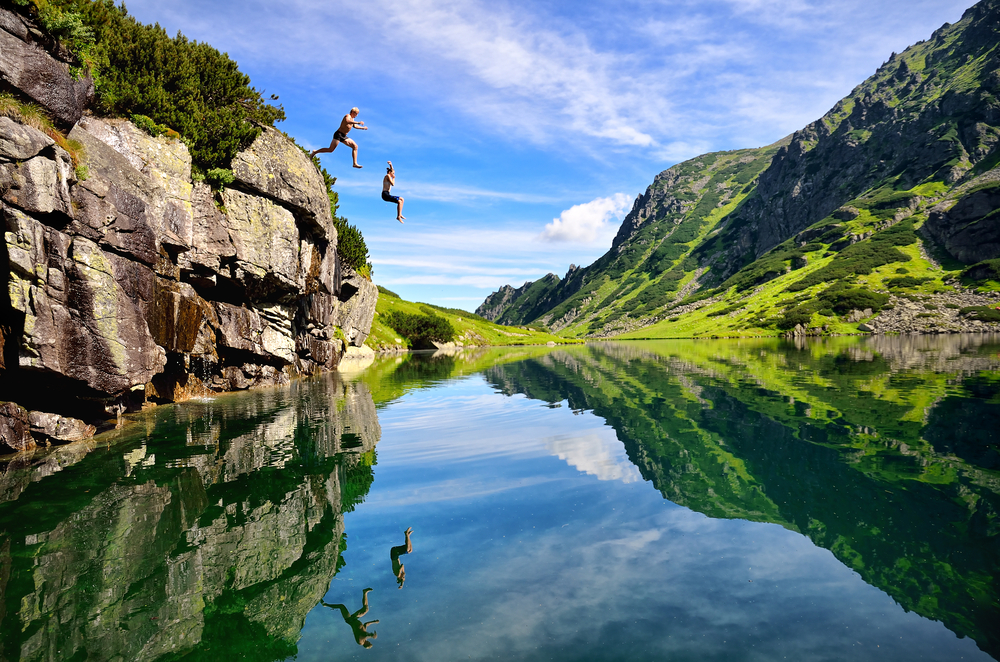
Adventure travel is one of the first types of experiences considered by active people with a free spirit. All types of adventures can be experienced around the world and many can simply be the reason for travel in the first place.
For example, some of the best adventure travel destinations are bungee jumping in China and Southeast Asia. Tall bridges, great companies, and plenty of other adventure-seekers are typically seen here.
The main benefit of adventure travel is that it satisfies the need for active travel. Adventure isn’t found locked in a beach resort for days and weeks. It is found by going out, exploring, and trying new things in new places.
- One of the least boring types of travel
- Plenty of adventures to choose from even in remote locations
- Suitable for solo and group travelers
- Often includes multiple connecting flights
2. All-girls vacation

The classic all-girls vacation is one that is highly popular even today. It involves a group of girls, typically siblings or friends traveling together. Many of these vacations involve traveling to popular holiday destinations such as islands, resorts, or large cities.
Girls travel together for fun and safety reasons. Many of these groups can even book flights and accommodation together for a discounted rate. Fun, meeting new people, and seeking new places are among the main benefits of such vacations. Girls traveling together also develop stronger bonds and memories to last a lifetime.
Some of the most popular all-girl travel destinations include Paris and Rome. These historic cities have plenty to offer from classic architecture to good food or even to top fashion stores to shop at. Girls won’t need more reasons to choose such a destination.
- Plenty of destinations to choose from throughout the year
- It develops strong friendships
- The option to seek discounted accommodation rates
- Typically harder to stick to a planned itinerary
3. Back to the roots travel
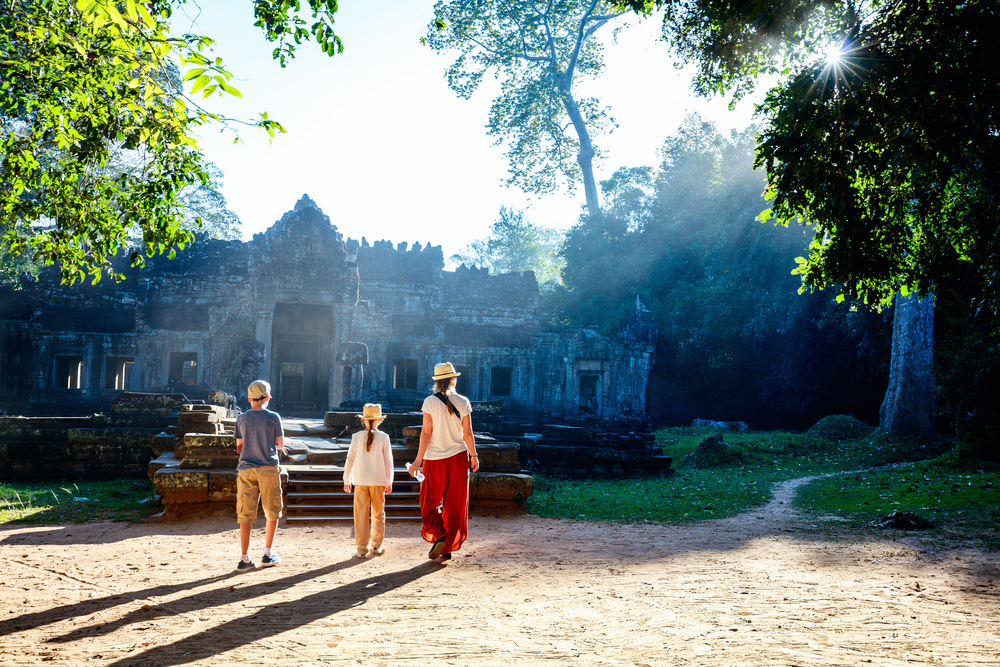
Western cultures are more diverse today than ever. This develops a new type of travel for those who want to discover their roots. Traveling back to the roots is a type of travel that involves self-discovery. Second, third, and later generation migrants are typically those who are typically traveling back to their families’ country of origin.
One of the best parts about this type of travel is that it can seem familiar through cultural references, even when far from home. Many go back to their countries to see the way of life of their parents and grandparents.
They might even meet up with old relatives and see the places family seniors used to live in. For most of them, this is the time to get a better understanding of their identity which can be interpreted as a self-discovery or growth type of travel as well.
- It involves a deep cultural immersion
- A type of travel typically for families
- It can feel deeply personal
- It normally involves taking a long flight
4. Backpacking trip
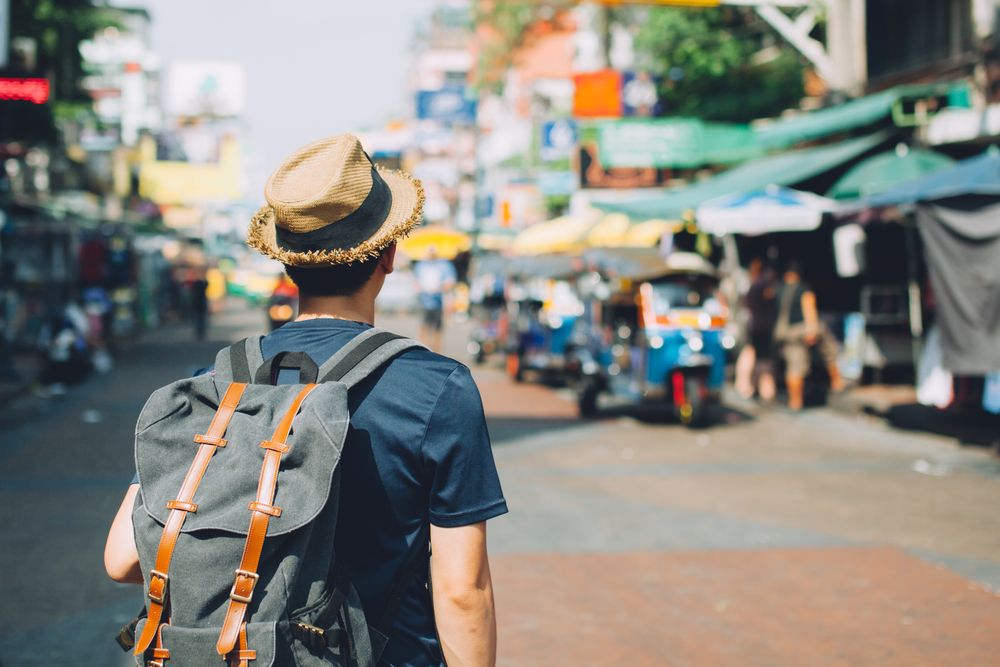
Backpackers are some of the happiest travelers even if most are on a budget. A backpacking trip is typically a bit more affordable and still culturally rich. Many backpackers sleep in hostels where they pay less and earn more.
Backpacking travel is typically popular with young travelers. Both solo and group travelers can go backpacking. Popular backpacking destinations include Europe and Southeast Asia. Other popular destinations are Australia, South Africa, and parts of South America.
It’s generally considered an adventurous type of travel but backpacking can also be relaxing. One of the main advantages of this type of holiday is that travelers are often going at their own pace, with no set itinerary to follow.
Unlike guided travel, backpackers prefer to map out their attractions and activities they want to have while traveling. As a result, most backpackers are typically seeing more of what they feel attracted to rather they simply visiting attractions and doing things mapped out by a travel company.
- Great for solo and group travelers
- A bit more affordable than other forms of travel
- Backpacking trips can be organized in nearly any country
- Not the most glamorous type of travel
5. Business travel

Business travel is not the time to relax but it’s the time to work. People travel for different reasons and in most cases, it’s all about the work. This type of travel can last from 1 day up to a few weeks, depending on what you need to take care of.
Attending a conference is a type of business travel. But many professionals on a business trip are typically staying for multiple days so they have the time to work deeply on one or multiple projects.
Business travel is seen both inside the country and abroad. Almost all business travel costs are covered by the employer. This involves flight tickets, gas, meals, and accommodation.
Business travel expenses can be high and in most cases, there’s no flexibility for things such as travel dates and the proximity of the accommodation. At the same time, the reward is getting the job is done which can earn the employer more money in the future.
- It has a professional profile
- Ideal for suits and formal outfit lovers
- It can be a type of travel that develops new skills such as better communication
- There’s limited to no time for visiting and sightseeing
6. Camping travel
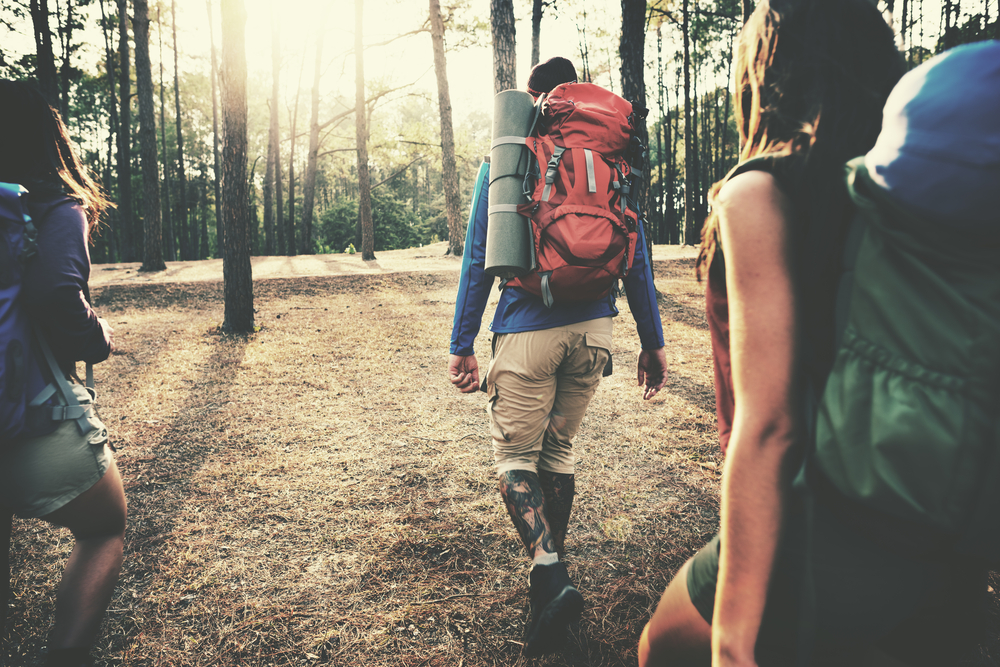
Camping is one of the best ways to reconnect with nature. Busy lifestyles, constant stress, and the high rises of large cities often make people disconnected from nature.
This is where the new type of camping travel emerged from. People want to stay in nature and take part in outdoor activities with this type of travel.
There are few drawbacks to camping travel as this is one of the ideal types of holidays to consider for better health, improved mood, and even for extra fun. From groups to families and even solo campers, there are plenty of great destinations to choose from around the world.
Nature is diverse and camping travelers are some of the most blessed holidaymakers when it comes to the diversity of landscapes they can enjoy. It is also one of the cheapest types of travel which means campers are normally on holiday a bit more frequently than other types of travelers.
- Ideal for outdoor adventures
- A bit more affordable than other types of travel
- One of the most health-beneficial forms of travel
- It lacks luxury and sometimes basic amenities
7. City break travel
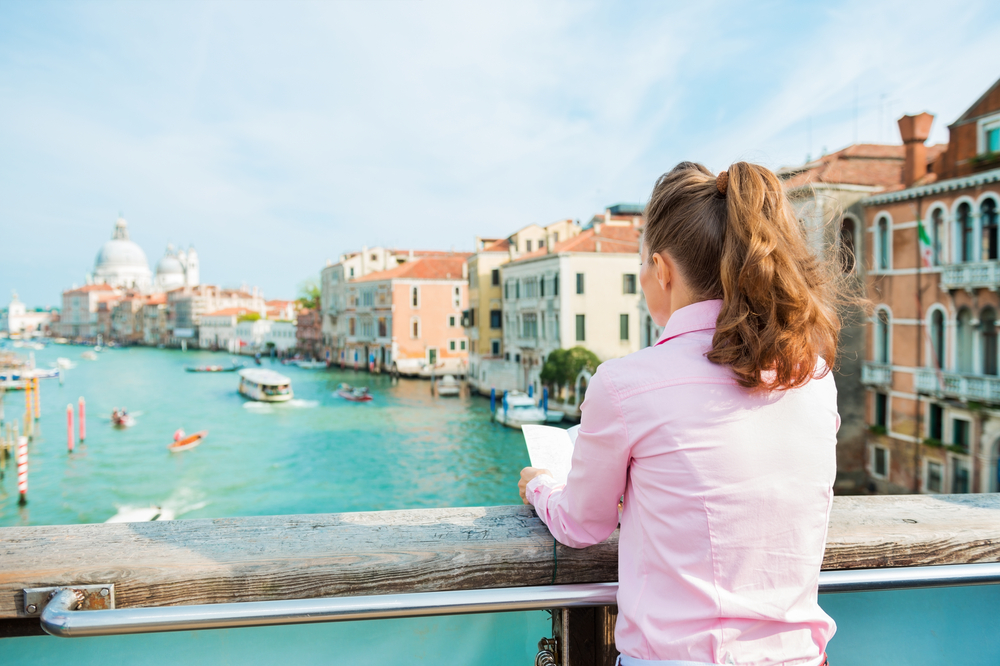
City break travel is ideal for all of those who like urban culture, culinary art, museums, concerts, sporting events, and other such events. Many of these are easily found in cities and the type of travel around these metropolitan areas has flourished over the past few decades.
New York City is one of the most sought after city break travel destinations. It offers a glimpse of the world through its diversity and people can easily come back and see more of the city with the next holiday.
Toronto is the most popular city break destination in Canada. People from all over the country come here to see some of the most important Canadian attractions, great markets, top restaurants, and even to stay here for a few days before departing to another country through one of Canada’s largest airports.
London, Berlin, and Paris are some of the most popular European city break destination cities. These cities offer a historic perspective that blends with the new for all types of tastes.
From famous landmarks to fun group activities, these large European cities are always busy on weekends when people have the free time to travel from other European countries or other continents.
- Recommended for urban lifestyle fans
- Great for shopping
- Easy access to top amenities such as hotels and restaurants
- Typically short as a city break lasts only a few days
8. Cruise travel
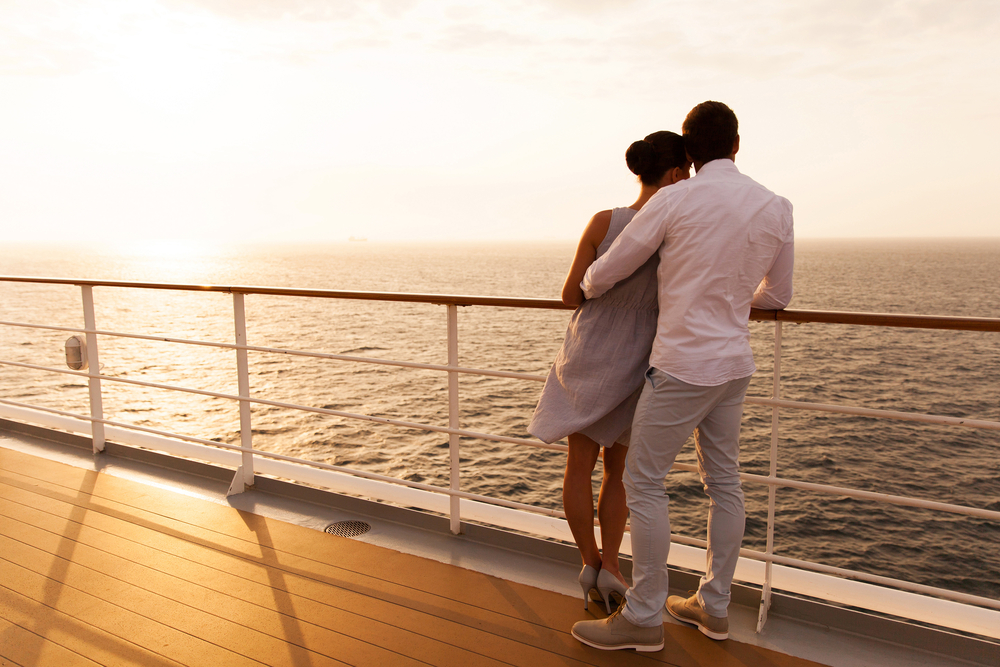
Cruise travel is ideal for sea fans and those who want to see exotic places. A typical cruise ship takes its travelers through different countries in trips that last weeks at a time. It features certain stops in port cities and it allows travelers to see some of the most attractive port cities around the world.
Some of the best cruise travel operators are known for offering all-inclusive services. Food, accommodation, and even drinks can be included in the price of the holiday. Port fees are typically excluded and extras such as spa or massage sessions might also be paid for separately.
However, cruise travel is one of the most relaxing means of travel. It offers great activities for seniors such as live bets, live music, and cooking classes. Cruise ships are typically large and most of them can come with a dedicated lounge and sunbathing areas for the ultimate relaxation holiday.
- Ideal for relaxation
- Plenty of food and drinks to choose from
- Ideal to see exotic locations
- Typically reserved to seniors
9. Event travel

Traveling for events is not unusual anymore. Large concerts, sporting events, gatherings such as business meetings, meeting family for Christmas, and other such events are perfect for traveling. One of the most important aspects of even travel is the event itself which dictates arrival and departure dates.
Your accommodation and eating plans are also shaped by this event. In some cases, you can find accommodation next to your event, such as when sleeping in a hotel in a financial district for business events.
A good reason to go on event holidays is for all of the fun things you can squeeze in alongside the main event. Apart from going to the main event, you can check out smaller events, local restaurants, or other fun activities.
Looking for guided tours can be a good way to meet others as well. Many event travelers can feel a bit isolated and meeting other fellow travelers is always a plus. Furthermore, the best way to travel for an event is to look at souvenirs and shopping you can do outside of the typical shops you have in the area where you live.
- Ideal for short travel periods
- High chances of meeting others attending the event
- It typically requires a small budget
- Not the freest time to see local attractions
10. Family vacation

Family vacations are ideal whole the kids are pre-teens. Children grow fast and real chances of bonding with them as parents tend to fade away rather quickly as most parents can attest.
Family vacations can be fun for everybody with the right planning. It is also the best time to create memories that last a lifetime.
Many families go on summer holidays together, particularly to the beach. Some families are inclined to travel during the winter as well, especially around Christmas time.
One of the best reasons to consider family vacation is the large choice of family-friendly holiday destinations. With the choice of Disneyland locations and plenty of family-friendly hotels growing each year, it seems there are a lot of great options to choose from.
A good family trip can also cost a lot. Buying plane tickets for all family members and booking apartment hotels can add up to the cost of the holiday. But saving a small amount each month for family holidays is the best way to financially afford such trips as groups each year.
- Ideal for child-parent bonding
- Fun locations to choose from
- Plenty of discounts when booked in advance
- Higher cost than other types of travel
11. Gap year travel
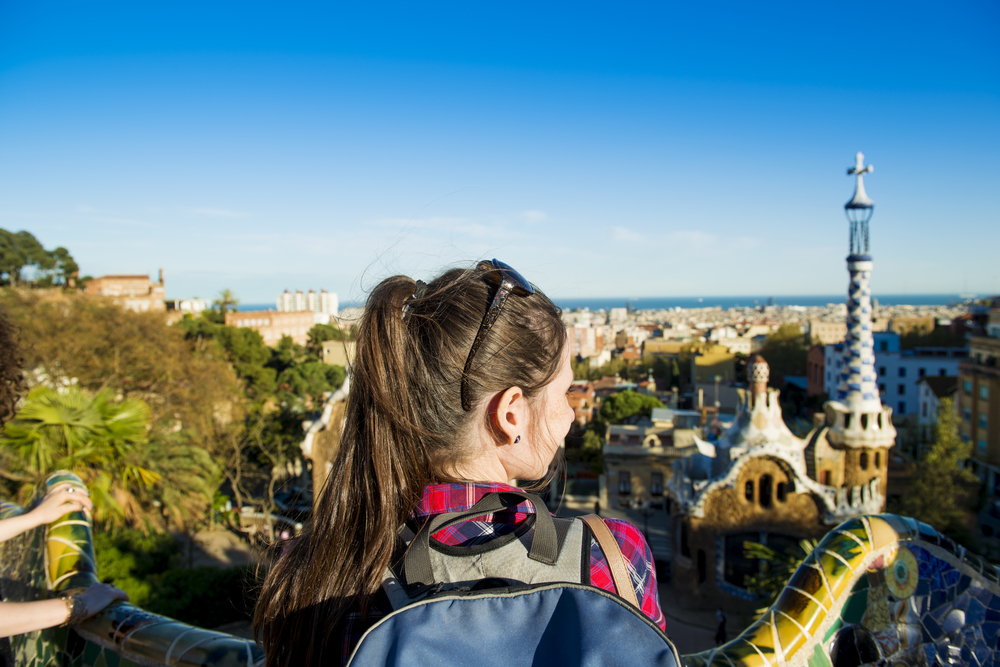
One of the most interesting types of travel without a clear purpose is gap year travel. This is the year to find yourself, to learn new skills, or simply to experience a new culture. Everybody sees a gap year differently and this is why many youngsters even get a job during a gap year travel.
Taking a gap year is something many debates before but few regret after. This type of travel is generally the first experience with a new culture, a new country, new places, and new customs. It is the time to learn and to live, experiences that are typically postponed when going to college.
Popular gap year travel destinations are found around the world. Taking a gap year travel holiday to an English-speaking country is very common. Going to Canada, Australia, or to the UK is a route many gap year travelers feel comfortable with.
Some of the most daring gap year travelers go to non-English speaking countries such as Thailand, Vietnam, or even India. As one of the most populous countries in the world, India has multiple cultures and it offers a new type of experience around the corner regardless of the type of travel experience you want to have.
- Ideal for self-discovery
- Typically easier in English-speaking countries
- It can last up to a year
- Usually expensive for students
12. Group travel
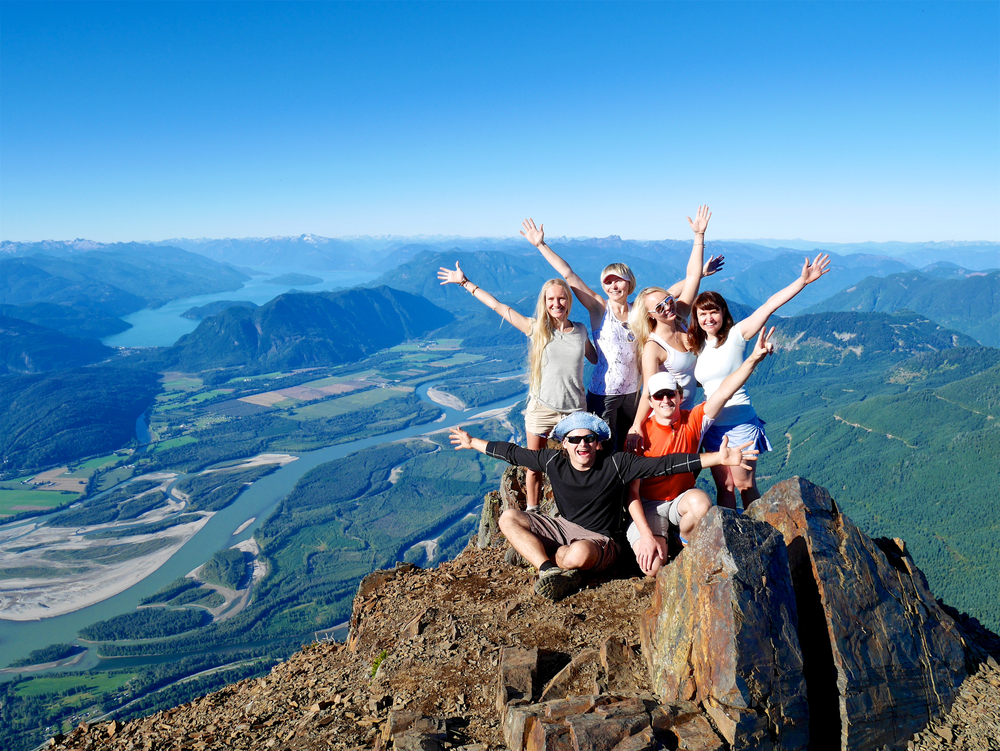
Group travel is fun, adventurous, and never boring. Traveling in groups of a minimum of 3 people to groups of tens is always seen around the world. Group travel is specific both to the youth and to senior travelers. There’s typically an itinerary to follow and things to experience as a group.
Higher safety is one of the main advantages of group travel, even in remote places. Some destinations are so remote that only group visitors are allowed. Take Bedouin camping as an example. Camping out in the middle of the desert is a type of experience normally reserved for groups.
Another aspect of group traveling is the friendships and communication skills developed during the holiday. Meeting new people and getting to know how other travelers think can even be considered an educational experience.
Group travel destinations can be found in almost every country. From large cities to countryside destinations, there are plenty of group travel destinations to consider. As an organizer of group travel, you can frequently ask for discounts for meals and accommodation.
Another good reason to go with a group is when you need help. An unskilled hike is always going to be safer in the first outdoor expeditions with skilled hikers than going at it alone. The same applies to almost anything you might need during your holidays such as gear or medication.
- Typically based on an itinerary
- Fun and recommended to meet new people
- Made for travelers of all ages
- Difficult to organize
13. Luxury travel
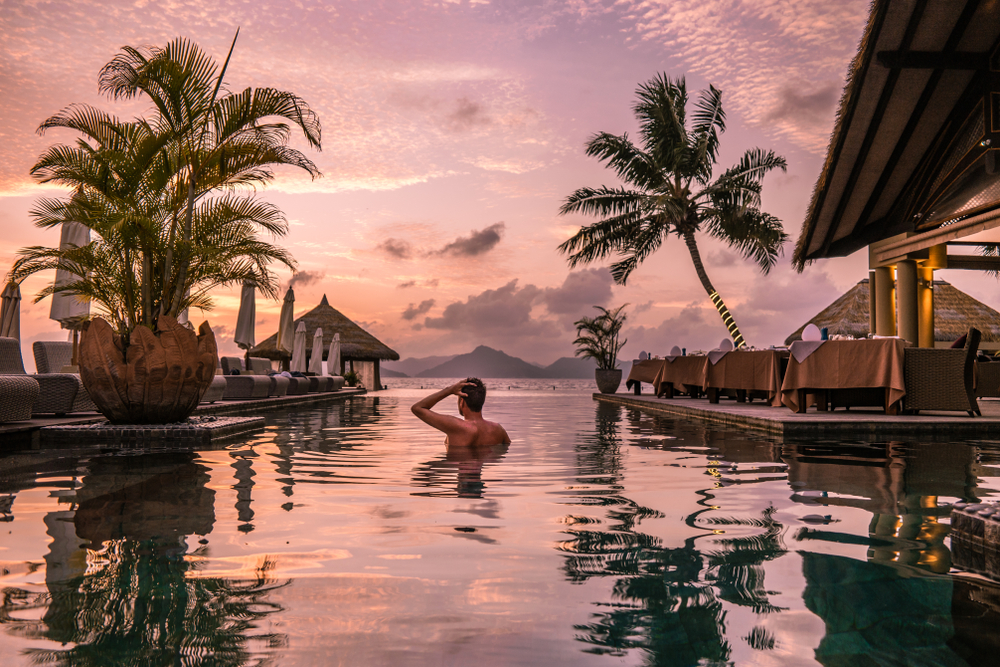
Some of the most pampering experiences can be enjoyed with luxury travel. This type of travel is both organized and made by a traveler’s itinerary. The idea of luxury travel mostly involves checking into a resort or a luxury hotel with all types of included extras such as meals and drinks.
Luxury travel involves relaxing at spas, having a massage, taking a helicopter ride, or simply enjoying a break in some of the most remote exotic islands in the world.
This type of travel isn’t affordable. Its luxury appeal mainly comes from the exclusive form of holidaying. It can be the type of travel to consider if you want to be alone with your partner, without noisy children or too many other people around you to disturb your peace.
Luxury travel destinations can offer all types of services which can even include transportation. Some of the most prestigious luxury resorts in the world arrange airport pick-up, airport drop-off, day breaks, and plenty of other fun activities for their guests.
This type of holiday is typically enjoyed in warm climates but it can also be seen in some of the cooler temperature countries of the Northern Hemisphere.
- Highly exclusivist by nature
- The best time to sample the finest foods and destinations
- Not the most affordable type of travel
14. Package holiday travel

Those who don’t like to worry about the logistics of a holiday can choose one of the package deals offered by travel agents. These deals include accommodation, meals, and travel arrangements. You book a package holiday to resorts or to places where only certain tour operators have access.
Popular package holidays are offered to the Maldives, Cancun, or Turkey destinations. They are similar to all-inclusive deals where you get all of the basics covered without having to spend extra.
These holidays can be expensive or affordable, depending on the type of travel you’re after. For example, cheap family package holidays are typical in popular beach or mountain resorts. You can arrange such travel for your entire family without having to purchase tickets for each family member and then worrying about finding local restaurants or local transportation.
Package holidays can also be expensive and exclusivist. Organized package holidays beyond the Arctic Circle are an example that these types of escapes aren’t always cheap. But they also show package holidays can be very specialized, which is always fun and adventurous.
- Ideal for busy travelers
- Made for solo travelers and families
- Available in both cheap and luxurious packages
- Little room for flexibility with accommodation
15. Road trip

Road trips are the best holidays for those who love driving and creating their itinerary. This type of travel has been around since the invention of motorized vehicles, and probably even sooner.
You typically go on a road trip with one or multiple cars, by yourself, with friends or family. A rod trip is a chance to travel long distances and see everything you can see until you reach your destination.
Route 66 and Bolivia’s ‘Death Road’ are some of the most popular road trips in the world. If you want to drive across the US, Route 66 is one of the most popular roads you can consider. Connecting the East Coast to the West Coast, this popular route is one with many legends. A good car is crucial for this trip as you will cover more than 2.600 miles.
But a road trip doesn’t have to take weeks to qualify as a road trip. You can even have a 1-day road trip which involves driving a car or an RV to a destination and returning home later in the evening.
The best way to enjoy a road trip is to look for new driving locations or to check new attractions whenever you are driving on a route you’re already familiar with.
- Generally affordable
- Travelers can stop at various points along the trip
- Easy to travel in small groups
- It can get tiresome without only one designated driver
16. Romantic gateway
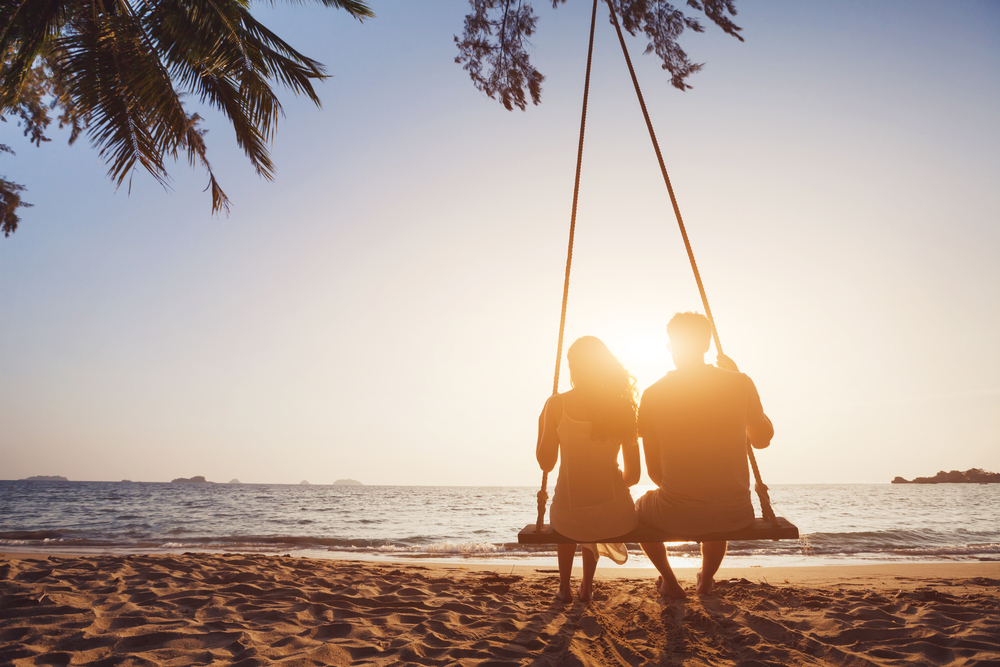
One of the most impressive types of travel for couples is the romantic gateway. This is the ideal time when you can reconnect to your partner and travel at the same time. The romantic gateway is the perfect opportunity to experiences new things as a couple.
Most romantic gateways can be organized anywhere around the world. From the classic travel holiday to Paris to the most idyllic Maldives escape, couples can book a holiday for two easily.
A romantic gateway is typically enjoyed at a slower pace. It’s rare to see these types of holidays packed with attractions and multiple stops.
Instead, a romantic gateway involves paying more attention to dinner time, romantic accommodation, and possibly to romantic activities such as walks, train rides, or couple’s classes. You can easily add more activities to these holidays after discussing them with your partner.
By definition, romantic holidays might involve traveling. Couples who organize their travel always look for plane seats that are next to each other, which might be more expensive with some travel companies.
Others who buy package romantic gateway travels don’t need to worry about the organizational part of the trip.
- Ideal for newlyweds and other couples
- Generally relaxing even in short travel periods
- Fun to plan
- Some popular destinations as Paris can seem expensive
17. Siblings vacation

Traveling with siblings isn’t new. But this type of travel can be ideal for siblings that are already adults and who know life isn’t going to allow them to travel easily again as each of the siblings gets married.
Young siblings can travel around the world together but they can also travel with their families once they’ve settled into family life.
One of the ideal ways to travel for siblings is by choosing a destination that is fun for everybody. This can include traveling inside of the country or abroad. The best part is this type of travel is highly beneficial asides from what you get to visit and experience.
Siblings are naturally close to each other and this type of experience can bring them even closer. For most, the fun of planning and simply going to a certain destination can be more intense than reaching that destination. Siblings can benefit from group travel discounts.
Most importantly, siblings can plan different accommodation options group traveling with strangers don’t offer. The same versatility is seen in the travel itinerary which tends to be a bit stricter in group holidays.
- Excellent and rare siblings bonding time
- The possibility to go anywhere
- There’s no room for friends or relatives in the group
18. Slow travel

Slow travel is a new concept that involves spending more time in one or multiple places. Typically seen as a cultural experience, slow travel represents an opportunity to see and experiences things and places that a normal tourist wouldn’t.
This involves eating at different places, typically with the locals, or visiting new places that aren’t among the top must-see tourist attractions.
Slow travel is ideal for people who have the time and the desire to dig deep into a certain culture. This type of travel is mostly seen abroad. 1-month or 2-month trips to India are an example of how slow travel can look like.
During this time, travelers often interact with the locals and they can even stay with locals to get to know their way of life better.
Highly observational but still interactive, slow travel is an alternative to mass-level travel that puts a strain on the same resources, typically on large capital cities that get the most tourists.
When you have a month to spend in a country, you venture off the beaten path and away from the classic capital city destination holiday.
- The perfect cultural exchange experience
- Recommended for solo travelers or small groups
- It takes travelers to new destinations tourists don’t typically see
- It requires more free travel time
19. Solo travel
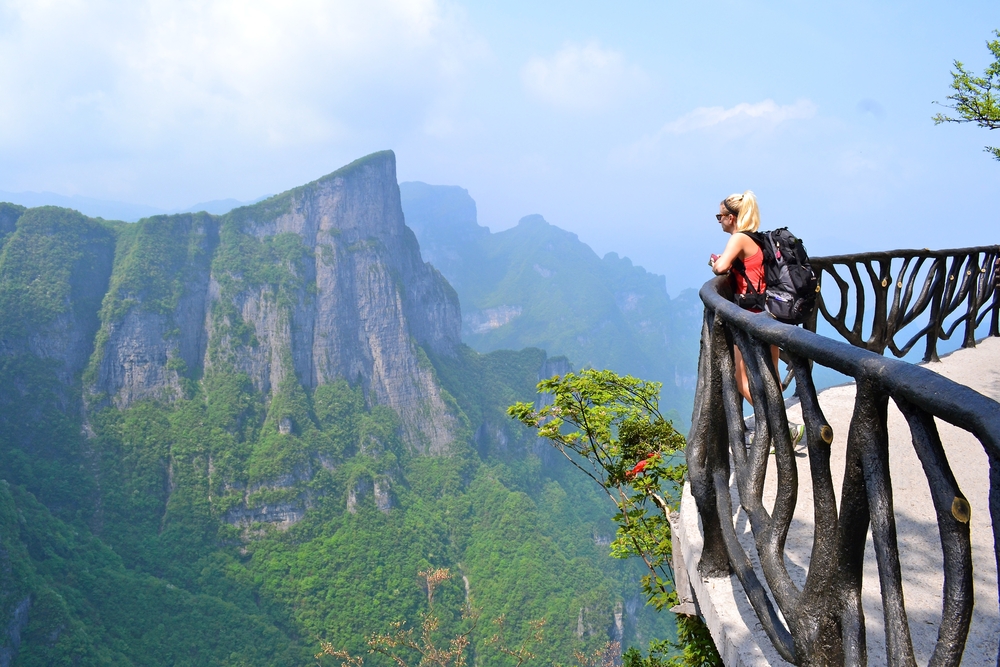
Solo travel has exploded in popularity mainly due to busy lifestyles that rarely allow groups to take the time to travel together. While it was a bit strange to see solo travelers before, these types of travelers are now constantly seen among the crowds in popular destinations around the world.
Solo traveling involves a level of adventure and a general self-drive to do things properly without asking for too much help. Almost all solo travelers know what to pack, where to go, which transport solution to rely on and how to get around in the city or location of their choice.
This makes solo travelers some of the most self-driven travelers and certainly good group leaders for when they decide to travel in groups.
Solo travel destinations are typically found in safe countries where an individual on his on the street is not under imminent threat. This type of travel requires proper planning but with a bit of work ahead, it can be highly rewarding.
The benefits of solo travel include checking all of the landmarks and attractions you want to see without skipping any of them. It also involves eating the food you want without sacrificing what the group wants.
One of the best parts of solo travel is that it forces you to interact and to communicate with locals, which is always a better way of traveling.
- Ideal for motivated individuals
- Perfect when you want to see specific attractions
- Little dependence on a specific travel schedule
- It can feel isolating at times
20. Staycation

A staycation involves staying at home and seeing the area where you live through the eyes of a tourist. Ideal when you’re on a tight budget, a staycation can be perfect to meet new locals, see new places, and enjoy new food locally.
Even those without a travel budget can enjoy a staycation. A bit simpler and better than a complex holiday with expensive air travel, it can be just the solution needed to rediscover the area where you live.
This is the perfect time to see new restaurants, new art exhibitions, visit local artists, and get involved in your community through the eyes of a tourist as if you would be seeing these things for the first time.
A Staycation is also popular during a pandemic lockdown when travel restrictions are the highest
- Ideal for those without a traveling budget
- It can help you rediscover local attractions
- A type of holiday to consider for the entire family
- It still can’t replace meeting new cultures
21. Student exchange

Traveling to become an exchange student is very popular today. The most famous student exchange program is EU’s Erasmus. This program allows students from any member state to live and study up to an academic year at another university in another country.
This is what separates the program from others by involving students from other cultures in the same field of study.
A student exchange program is ideal for those who want to seek academic excellence and to see how other peers work towards a similar career. It can also be a comparing experience to see how other professors teach and how they prepare students for the marketplace.
One of the perks of this type of travel is that it tends to get higher social, even for solo students as they meet other locals. Students interact through classes, volunteering, and even work which tends to open their minds to other cultures more than theoretical studies.
- Ideal as a learning opportunity
- Typically low cost
- It improves language skills
- Limited by the number of university places for exchange students
22. Summer travel
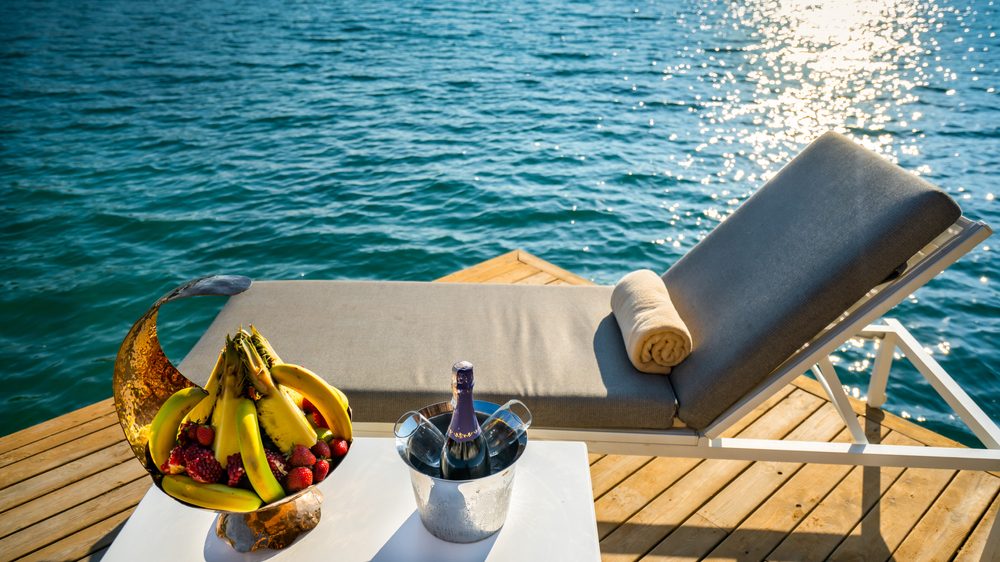
Summer travel is the most popular type of travel due to the perfect timing of free time and great weather. Almost all considerable travel happens during the summer or the ‘peak season’ as called by tour operators.
This is the ideal time to travel in groups or with children. Summer travel can involve a holiday of at least 1 week and a maximum of 4 weeks on average. It involves going to a seaside resort or a mountain camp.
Summer travel can also incorporate all other forms of travel as most destinations become easier to see, even those in remote locations.
One of the biggest drawbacks of summer travel is the high prices. You pay more for airplane tickets and accommodation whenever the demand is the highest for these, such as in the summer. On the other hand, the warm sunny weather is ideal for all types of outdoor activities.
- Suitable for groups and families
- Ideal for long-distance traveling
- It can last up to a few weeks
- It tends to cost more than traveling outside the tourist season
23. Weekend travel

Those who don’t have the time to travel for a few weeks can look into weekend travel. This can be anything from a short road trip to a full 2-day city break. Weekend gateway travel is ideal for those who want multiple travel holidays throughout the year.
Most of these weekend holidays are limited by the space you can cover traveling. You can even fly to your destination but the flight should typically be short. 1 or 2-hour flights are ideal when you’re limited on time so that a few free hours remain to visit and to enjoy your destination.
- Compatible with busy lifestyles
- They aren’t as expensive as a full travel experience that lasts weeks
- Ideal for solo travelers, couples, and small groups
- Limited by the proximity of the destinations
24. Winter travel

All of those who love the winter season can’t wait for the perfect opportunity to travel even during snowfall. Winter travel is ideal for skiing and snowboarding fans.
This is the time to look into ski resort holidays and for the opportunities to spend time outdoors enjoying other winter sports.
Winter travel has its drawbacks, such as its reliance on perfect flying weather. Airplane departure delays are frequent during the wintertime when too much snow can cause travel chaos. On the other hand, wintertime travel can also come with lower prices for certain destinations.
- Perfect for skiing fans
- Plenty of great destinations to choose from
- It can be a bit more affordable than summertime traveling
- High risk of bad weather
25. Work and travel

Work and travel is a special experience that offers a limited-time opportunity to work in a given country that would otherwise be inaccessible. The US runs the most popular work and travel program which sees students and youth work in the country on a visa for up to a year.
During this time, most of those on the program work in the hospitality industry where they earn a full wage. Those in the program also get a few weeks after their job is over to visit the country before the visa expires.
Ideal for the young who want to earn and still go abroad, work and travel programs are the primary type of travel to consider when on a limited budget.
While the jobs on offer on such programs are labor-intensive, it’s the best time to consider these jobs as a way to learn basic skills such as managing a monthly wage.
- Simplified visa process
- Plenty of hospitality jobs to choose from
- The opportunity to earn while traveling
- Reduced chances of securing a high-paying job
Related posts:


13 Types of Tourism That You Need to Know
- August 7, 2023
Table of Contents
Welcome, wanderlust seekers and adventure enthusiasts, to a thrilling exploration of the world’s diverse tapestry of tourism! Embark on a captivating journey as we unveil the tantalising realm of travel, introducing you to the mesmerising array of types of tourism that will ignite your wanderlust. From the adrenaline-pumping escapades of adventure tourism to the enriching experiences of cultural and heritage tourism, we delve deep into each captivating category, revealing the hidden gems, unique opportunities, and travel solutions that await you.
Whether you’re a passionate foodie yearning for culinary delights or an eco-conscious traveller seeking sustainable adventures, our comprehensive guide will unlock the secrets to immersing yourself in the rich tapestry of travel. So pack your bags, unleash your curiosity, and join Qoni Travel as we unravel the thrilling world of 13 different types of tourism you need to know about!
13 Types of Tourism
Adventure tourism.
Embarking on an awe-inspiring escapade filled with adrenaline-fueled thrills is the ultimate recipe for infusing your travel adventures with excitement. Adventure tourism, the realm where extraordinary tales are born, encompasses an array of heart-pounding activities. From the intrepid pursuit of conquering majestic peaks through hiking and mountaineering to the audacious ascent of vertical cliffs during rock climbing expeditions, the possibilities for daring exploits are boundless.
For those who possess an insatiable appetite for exhilaration, the heart-stopping leap of faith in bungee jumping or the wild ride down untamed rapids in white-water rafting are exhilarating options that promise to set pulses racing. Adventure tourism, a siren call to intrepid souls, offers the chance to revel in unforgettable experiences amidst breathtaking natural landscapes, satisfying the yearning for extraordinary encounters and leaving an indelible imprint on the adventurous spirit within.
Cultural Tourism
Cultural tourism emerges as an irresistible allure for wanderers seeking to unravel the rich heritage that unfurls before them. This enchanting form of exploration beckons travellers to step into a realm of boundless wonders, where they traverse the hallowed halls of museums, trace the footprints of history at ancient sites, marvel at the brushstrokes of artistic genius within vibrant galleries, and partake in the rhythmic dance of time-honoured festivals that awaken the senses.
Eco-Tourism
In the past few years, a remarkable surge in consciousness about the significance of sustainable travel practices has emerged. Embracing this movement, eco-tourism has emerged as a captivating way to immerse oneself in the wonders of the natural world while meticulously safeguarding its delicate balance.
Drawing adventurers to breathtaking national parks, serene nature reserves, and hallowed protected areas, eco-tourism enthusiasts enthusiastically partake in eco-friendly activities, such as observing magnificent wildlife, marvelling at feathered wonders, and embarking on enlightening nature walks. With each step, these mindful explorers tread lightly, ensuring that their footprints leave no lasting scars while simultaneously nurturing their connection to the awe-inspiring tapestry of life.
Through this immersive odyssey, cultural tourism serves as a gateway to enlightenment, allowing intrepid souls to embrace the intricacies of local customs, traditions, and the very essence of existence while nurturing a profound cross-cultural empathy and an unwavering appreciation for the beauty that lies within the tapestry of humanity.
Sustainable Tourism
Sustainable tourism goes hand in hand with eco-tourism, significantly emphasising conscientious and mindful travel practices that prioritise environmental preservation, uphold local communities and foster socio-economic growth. By opting for eco-friendly accommodations, supporting locally owned enterprises, and actively participating in community-based tourism projects, sustainable tourism catalyses preserving our invaluable natural wonders and cultural legacies, ensuring their unspoiled existence for generations to come.
Wellness Tourism
Amid our modern, high-speed existence, wellness tourism emerges as a blissful sanctuary, beckoning individuals to rediscover harmony within their minds, bodies, and spirits. Embracing an ethos of tranquillity and self-nurturing, this captivating form of travel encompasses an array of activities designed to alleviate stress, restore vitality, and enhance personal growth.
Encountering a world of possibilities, wellness tourists embark on transformative journeys, seeking solace in serene spa retreats, immersing themselves in the serene embrace of yoga and meditation centres, indulging in the lavish comforts of wellness resorts, and embracing the transformative power of healing retreats. With wellness tourism, holistic well-being becomes a destination and a transformative expedition that transcends the boundaries of time and space.
Culinary Tourism
Indulge your taste buds and embark on a tantalising journey with culinary tourism, an adventure tailored for avid food lovers seeking to immerse themselves in the rich tapestry of flavours and culinary customs across the globe. Prepare for a mouthwatering experience as you partake in captivating food tours, where every bite unlocks the secrets of local cuisines and cooking classes that reveal the artistry behind cherished recipes.
Let your senses dance as you savour regional delicacies, uncover the historical and cultural significance woven into each dish, and witness the transformative power of food as it bridges the gap between diverse communities. With culinary tourism, every destination becomes a delectable playground waiting to be explored, ensuring a truly unforgettable and palate-pleasing voyage.
Historical Tourism
Step back in time and embark on a captivating journey through the annals of the past with historical tourism. This enticing adventure beckons history enthusiasts and inquisitive globetrotters alike. Immerse yourself in the tapestry of bygone eras as you traverse ancient ruins, wander through majestic castles, explore awe-inspiring archaeological sites, and meander through heritage cities that whisper tales of yore.
Unravel the secrets and significance of monumental events and iconic landmarks as every step unveils the captivating stories and the vibrant heritage that have shaped the world we know today. Historical tourism is your gateway to a remarkable fusion of discovery and reverence, offering a chance to unlock the mysteries of history and forge an unbreakable bond with the past.
Wildlife Tourism
Enthrals the hearts of passionate nature lovers and devoted animal enthusiasts, captivating them with the extraordinary allure of the natural realm. Embracing many exhilarating activities, from riveting safaris to stunning whale watching, this immersive experience transports individuals to ethereal bird sanctuaries and enlightening animal conservation centres. Amidst these ventures, one is blessed with the extraordinary privilege of beholding an exquisite tapestry of diverse wildlife species in their untamed habitats, fostering a deep connection and igniting a genuine commitment to the noble cause of conservation.
Religious Tourism
Is a captivating journey that immerses travellers in destinations with spiritual significance. It encompasses diverse experiences, from embarking on pilgrimages to revered holy sites to partaking in profound religious ceremonies. By venturing into these sacred realms, pilgrims and seekers of faith embark on a soul-stirring quest to strengthen their connection to their beliefs. As they traverse the enchanting landscapes, they marvel at awe-inspiring sacred architecture that is a testament to human devotion.
From the majestic Vatican City, home to the spiritual heart of the Catholic world, to the sacred and revered Mecca, drawing millions of devout Muslims every year, or the ancient and captivating Angkor Wat temple complex, religious tourism serves as a gateway to profound encounters with divine history, offering an unforgettable odyssey of faith and spirituality.
Educational Tourism
Embark on an extraordinary journey where the pursuit of knowledge intertwines with the allure of travel. Step beyond the walls of conventional classrooms and delve into the captivating realm of educational tourism. Immerse yourself in a tapestry of enlightening encounters as you traverse the halls of renowned educational institutions, wander amidst the whispers of history at awe-inspiring sites, and unveil the treasures within the hallowed halls of museums. Engage in immersive workshops and cultural exchange programs, fostering a vibrant tapestry of understanding and appreciation. Through educational tourism, watch as your horizons expand, your perspectives deepen, and the fire of lifelong learning is kindled within your soul.
Sports Tourism
This extraordinary form of travel allows passionate sports enthusiasts to fuse their love for athletics with unforgettable journeys. Whether you’re a spectator at thrilling sporting events, a contender in heart-pounding competitions, or an adventurer seeking sports-themed vacations, sports tourism offers an unparalleled opportunity to ignite your passion. Picture yourself bellowing cheers for your beloved team at the grandeur of the World Cup or gracefully gliding down awe-inspiring slopes as you ski through breathtaking landscapes. Get ready for a rollercoaster of exhilaration and exploration as sports tourism unlocks a world of electrifying experiences you won’t miss.
Volunteer Tourism
Discover the remarkable realm of volunteer tourism, a captivating adventure where intrepid explorers can leave a lasting mark while embarking on thrilling journeys to uncharted destinations. This extraordinary endeavour entails actively engaging in awe-inspiring community service projects, conservation endeavours, and humanitarian initiatives. As you immerse yourself in this transformative experience, an enchanting tapestry of cultural exchange unfolds, igniting profound empathy and fostering personal growth. Embark on this global quest to revolutionise lives and empower communities, embracing the boundless possibilities of volunteer tourism to create a brighter future for all.
Medical Tourism
Is an exhilarating blend of healthcare and adventure that entices individuals to embark on an international voyage in pursuit of top-notch medical care and exclusive procedures. It encompasses the exciting concept of jetting off to foreign lands, where one can embrace high-quality medical services without breaking the bank or discovering cutting-edge treatments that remain elusive within their homelands. With medical tourism , the boundaries of healing are surpassed as patients traverse borders, unlocking a world of possibilities for their well-being.
In a world bursting with wanderlust seekers and adventure enthusiasts, our thrilling exploration of the diverse tapestry of tourism has come to an exhilarating conclusion. Throughout this captivating journey, we have unveiled the tantalising realm of travel, introducing you to the mesmerising array of 13 types of tourism that ignite the flames of wanderlust within. From heart-pounding escapades in adventure tourism to the profound immersion in cultural and heritage tourism, each category has taken us deep into a world of hidden gems and unique opportunities.
Whether you’re a passionate foodie yearning for culinary delights or an eco-conscious traveller seeking sustainable adventures, our comprehensive guide has unlocked the secrets to immersing yourself in the rich tapestry of travel. As you pack your bags and unleash your curiosity, remember that the world awaits, ready to unravel the thrilling world of these 13 types of tourism you need to know about. So, embark on this transformative journey, and let the wanderlust within guide you to the extraordinary experiences that await, leaving an indelible imprint on your adventurous spirit. Stay tuned with Qoni Travel for more information.
Get in touch with our sales

In the dynamic realm of modern travel, two key players stand at the forefront, each offering distinct pathways leading to unforgettable journeys: Travel Management Company

Travelling is essential to business, and small businesses often require personalised support and cost-effective solutions. Choosing the right corporate travel agency can help small businesses

As an employee, business travel and trips are often fun and productive. Booking travel can be a hectic task. With numerous routes and fares, it

In the ever-evolving landscape of corporate dynamics, networking remains the linchpin of professional success. This comprehensive guide, titled “7 Ways You Can Effectively Network During

Connect with us
Travel services managed by.
Hype DMC Travel Sdn Bhd Co. Reg: 258404-A | KPL: 6430 No.167A, 1st Floor, Jalan Maharajalela 50150 Kuala Lumpur
S AMASTA TOUR & TRAVEL Jl. Tampak Siring Raya, Daan Mogot Baru, Blok KJ-F/3A, RT.8/RW.12, Kalideres, Kec. Kalideres, Kota Jakarta Barat, Daerah Khusus Ibukota Jakarta 11840, Indonesia
Operated by Travel Ideas Online Sdn Bhd Empowering journeys through innovative technology

The Dana Edition
An adventure-ful lifestyle blog
30 Different Types Of Travel Styles
There are so many purposes and ways of traveling that you may not even have thought of, but that’s what makes it so exciting. There isn’t just one way to travel – it’s what works best for you and the time in your life. To learn more about the types of vacations that you can take throughout your lifetime, here are 30 different types of travel styles that you can choose from. You may find that you veer more towards one category and are even a mix of a few different ones – and that’s great! Because the more you travel, the more you get to learn about yourself and others. Use this list to inspire travel in you, your friends, and your family. Or try them all and check each one off of your travel bucket list!
For Nearby Travel
1 – day trips.
Day trips are probably the easiest kind of trip to take as you don’t necessarily need to take any time off to make one of these happen. It’s also the cheapest way to travel as you can drive to your destination there and back within one day and you won’t need to spend on flights or accommodations. They also make for a very convenient getaway and work well for a quick change of scenery when needed.
You can even Make Local Trips As Exciting As International Adventures For Every Traveler .
2 – Road Trips
A level up from day trips is road trips. Technically a day trip is a road trip, but when I’m thinking of road trips, I’m picturing that I’ll be gone for at least a minimum of 2 days and I can be anywhere within my province or even all the way across the country. You could even be doing road trips in another country as long as you have a way for transportation for your journey. It’s also a great way to travel according to your time and interests and perfect for seeing everything along the way.
Here are 22 Vital Lessons Learned On My Summer Road Trips – you may find this useful as you plan our own.
3 – Weekend Getaways
Other different types of travel styles for nearby travel include weekend getaways. And I find these especially exciting and worth it if you have a long weekend getaway, with a statutory holiday or adding your own personal time off to your regular weekend. I like to take advantage of these kinds of time off and make it into a weekend getaway so that I can insert some adventure into my otherwise boring work week.
For destination inspirations, here are Long Weekend Getaways For Canadians to take.
For The Solitary Wanderers
4 – business travel.
If you’re lucky enough to get to go on business trips and it’s a location you would want to explore, take advantage of the opportunity while you’re abroad! Usually, you’ll either travel on your own or with coworkers. And if your significant other is able to, then you can bring them along with you and you can save on their hotel (and sometimes even food) expenses since it’s covered by your company. But for the most part, you’ll likely be traveling on your own – and to be honest, I rather spend the time alone away from coworkers while I’m on business trips after work hours. I’m already spending all day with them, I really need a break at night! I sometimes extend my business trip by a day or two, pay my own hotel and other expenses and explore the city I’m in. because who knows when or if I’ll ever visit again!
For those trying to take advantage of business travel, here’s How To Work And Travel At The Same Time .
5 – Digital Nomad Travel
For those who are lucky enough to be location-independent and have the flexibility to work remotely at all times, this type of travel can be done anytime and anywhere. You can work and travel at the same time, for months on end and can move about as you please. This makes it so convenient for traveling purposes and exploring the world, and it really saves you time and money of having to take multiple trips when you need to request time off from work in order to get your “yearly vacation”. Of course, you probably need to keep in mind your country’s rules of how long you can be out of the country otherwise there will be tax repercussions or you lose your health benefits and such.
6 – Solo Travel
One of the most popular types of travel styles is to experience traveling on your own. It is a great way to get to know yourself and discover how you can adjust to being outside of your comfort zone. It also allows you to push the boundaries of what you are familiar with, be more present and alert wherever you are, and maybe even come out of your shell. There are so many positives to traveling solo, but of course you’ll need to be wary of your safety as well.
Here are the Best Advice Solo Female Travelers Need To Know .
For Group Travel
7 – couples romantic getaways.
One of the types of travel styles that you may tend to go on more often as you grow a little older and wiser in your years are couples’ romantic getaways. I always find this to be fun as I love traveling with my significant other and seeing the world together and experiencing new activities that we don’t normally do back home. It’s also nice being able to focus on each other with slightly fewer distractions and spend time together and figure out how to travel together or even co-habitat for a short duration. Or if you’re already married, it’s always good to have those romantic times away together rather than just your weekly dates or nights out.
8 – Girls’ Trips
It’s always a good idea to go on a girls’ trip at least once or a few times in your life! It’s a great way to get to know your friends better, do the girly things you want, and go on adventures you’ll talk about for years to come. I’ve been on several of these with different girlfriends and had an amazing time, but I do also want to say that these trips can even make or break a friendship. Depending on how much you are on the same page, the things you want to do, or even how high maintenance someone can be – it’s something to take into consideration. But if you think your friendships are strong enough, these will be some of the best trips you’ll ever take.
Here are 8 Important Lessons I Learned When Traveling .
9 – Boys’ Trips
Just like a girls’ trip, a boys’ trip is occasionally needed as well. Having that guy time is important to let loose and be able to have that social connection that just isn’t the same with the opposite sex. Obviously, there will need to be a certain level of trust here because I know many women are not always okay with these kinds of trips. But I always think it’s healthy and much needed for my man to have his time with his friends. He’ll always appreciate it too.
10 – Family Trips
Another one of the most popular types of travel styles and probably one of the first kinds you’ll go on is none other than a family trip. It’s the perfect way for families to spend time together and have fun outside of their daily routines. The kids can have time away from school and the adults can take time off work to actually enjoy their hard-earned money with their families. It’s even better when you can go on these trips with extended families. My grandma used to take about 16 of us to go on family cruises every year and it was a major vacation we looked forward to all the time.
For Theme-Based Travel
11 – special occasions.
One of the most fun types of travel styles is those for special occasions. This can include birthdays, bachelor/bachelorettes, weddings, honeymoons, anniversaries, graduations, or whatever else occasion that may be important to you. It’s a sure way to celebrate an occasion to the next level and make it even more meaningful and memorable.
12 – Dark Tourism
Dark tourism may be a type of travel style that is not often taken, but it is an interesting one. It is a trip specifically to visit places where some of the darkest histories have taken place. It helps you better understand history as well as gives you an opportunity to immerse yourself in it. This could include war tourism, prison tourism, disaster tourism, ghost tourism, and more.
13 – High-Risk Area Traveler
If you can believe it, there are some people who like to take advantage of cheap flight tickets and travel to high-risk areas. Others who do fly to these high-risk countries may also be there for other reasons including photojournalism, visiting family, or just wanting that experience. Of course, you’ll need to go with a high degree of caution.
For Purposeful Travel
14 – culture tourism.
Traveling for the sake of learning about your or others’ culture and history is a kind of trip that is taken quite often as well. Educating yourself through travel and absorbing a different country’s culture that way is one of the best ways to do it. You can take the time to learn some of the language, traditions and values, foods, and even religion to better understand the country and its people.
15 – Event Travel
A big reason for many people to travel can include an important event like a concert, a sporting game, a convention, a fashion show, or others. Sometimes these events don’t always happen in your hometown and you need to head to the nearest city or country to be able to attend these sorts of things. It’s a great reason to travel and you can even allocate some leisure travel and fun time while you’re going on your trip for these purposes.
16 – Sustainable Travel / Ecotourism
These types of travel styles are based on the principles of sustaining the environment as well as the social, and economic values of a country or place. This kind of responsible travel takes into consideration and prioritization the conservation of the environment, the well-being of the locals, and aims to minimize the negative impacts of traveling to a certain location. Being more eco-conscious and aware of how you can positively or negatively impact a place that you visit during your travels can make a world of a difference to the community there. You can consider staying at hotels that are more eco-friendly, such as those that are committed to carbon-zero existence and those that integrate waste reduction and incorporate elements of nature to reuse water or produce energy.
17 – Nature And Wildlife Tourism
Going on a trip solely for nature and wildlife is a specific type of travel style that may not be everyone’s cup of tea, but it is a great experience to enjoy if you do go on one of these adventures. For example, the Great Migration safari in East Africa is a sight to see and you’ll be able to experience seeing all the herds and millions of animals going across Kenya and Tanzania. Even going gorilla trekking, visiting penguins in Antarctica, and exploring the Amazon are some pretty serious wildlife adventures to go on!
18 – Volunteer Travels
One of the most meaningful types of travel styles is volunteer travel. You’re spending the time, money, and effort to go to a different country and volunteer to help them improve their community, build homes or schools, and even water systems. Mixing humanitarian work with recreational travel is an opportunity that can serve both you and others. I have always wanted to volunteer at Habitat For Humanity to help build houses abroad, and I hope to be able to do so one day. If I am able to find other causes that I am interested in, I will definitely add it to my list!
19 – Religious Tourism
Religious, spiritual, or sacred tourism are types of travel styles with a goal of pilgrimage or education through the exploration of religious artifacts, places, monuments, and sacred sites. One of the most well-known religious journeys is the pilgrimage to Mecca in Saudi Arabia or Israel’s pilgrimage to the Holy Land.
20 – Slow Travel
A type of travel style that is gaining popularity is slow travel. Because of the longer length of time spent, or being more intentional with what you do and where you go when visiting a foreign country, you are able to take the time to explore, self-reflect, and understand the history, culture, and environment of a particular area. You can better connect with the local people and their way of life, which in turn can impact both you and them in a way where you can’t if you were constantly jumping from place to place, only seeing the tourist attractions. Being in the moment and being present to support local businesses and giving yourself time to be a part of it all will provide more meaning to your travels.
Health And Wellness Travel
21 – health and wellness.
For those who are prioritizing their health and wellness, these types of travel styles have the purpose of self-care, relaxation, and finding yourself. Yoga and detox retreats, rejuvenation getaways, and even sports retreats prioritize physical and mental health. With how fast-paced everything is nowadays, sometimes this type of travel will really do you wonders and come back home with a different perspective on taking care of yourself.
22 – Medical Travel
Those who are seeking medical procedures sometimes opt for an out-of-country experience since they either do it better, or the prices are much cheaper than doing it at home. For example, flying to Gangnam, South Korea for facial treatments and even surgery is cheaper than doing it in North America and cost a fraction of the price you would otherwise spend at home. Brazil is also well-known for their body enhancement surgeries and many fly there to get some work done as well. Others also fly to different countries for non-elective procedures and it could be a matter of life or death. But always keep in mind to do your research and to choose a practitioner who is well-known, regulated, and legal! There could be so much that could go wrong especially when you have to do an invasive procedure and you want to make sure this will be a good experience for you.
Relaxing Getaways
23 – ocean lovers.
One of my favorite types of travel styles is for ocean lovers to experience a relaxing getaway in the water. Seeing or being near water rejuvenates the soul and instantly makes me happy and I love diving and exploring the ocean to see all the sea life. It’s also a challenge to the body as well. Beach vacations are one of the most-taken trips when someone decides to travel because it really revitalizes you and it’s all about rest and relaxation.
24 – All-Inclusive Getaways
The easiest type of vacation to take are the all-inclusive getaways. You don’t have to worry about much especially when you pay one price and your flight, accommodations, and food is all included. The most you’ll probably have to think about is what excursion you want to take if you want to escape from the resort property or what you’ll be wanting to eat for your next meal. These are great for first-time travelers or if you are traveling in a large group as everything is mostly already organized for you.
Fun Travel
25 – adventure travel.
For those who love adventure and new experiences, this type of tourism involved some level of risk and potentially needing certain skills and physical strength to do. This could include camping, backpacking, sailing, rock climbing, ziplining, cave diving, and more. It’s about connecting with the new location you’re in while challenging your mind and your body to stay active as well as quench the adventurer thirst in you.
26 – Culinary / Gastronomy Tourism
A very exciting and rewarding type of travel is to go on vacation just for the food! Having your palate guide your adventures and where you go next and fulfilling your food cravings (probably brought on by all the food TV shows) can be very satisfying. You can take cooking classes abroad, try to visit all the night markets and street food stalls, eat at all the best restaurants in a certain country, and participate in local culinary festivals. I don’t necessarily travel for food, but it’s one of my favorite things I look forward to when I’m visiting a new destination. Even in my hometown, I’m constantly looking at new restaurants to visit and my list has grown to over 300 – not sure how I’m going to do it all, but I’m going to try.
Extravagant Travel
27 – gambling tourism.
Gambling tourism is widely growing and these types of trips are for those who can manage their money and have good discipline and self-control – although that is not always the case. Traveling to a location where gambling is legal and popular – such as Las Vegas, Singapore or Macau – is all about the fast, luxurious, and extravagant lifestyle. If your only intention is to gamble, these types of trips are not for the faint of heart. My brother once told me when his friend worked at one of these hotels, he got tipped a luxury car!
28 – Fashion Tourism
For those who are very fashion-oriented, flying to Milan or Paris is just another day. Attending fashion shows around the world and getting custom designs at famous ateliers is the purpose of your travel – it’s something you live and breathe. If you are a boutique owner, it’s also normal to take these frequent trips to different destinations to source your jewelry and meet your suppliers for new designs and stock.
29 – Luxury Travel
Probably one of my favorite types of travel styles is luxury travel. This travel style is all about lavishness, comfort, indulgence, and pampering. It’s always nice to have these kinds of vacations as a way to treat yourself, do something special for your significant other, or have an experience you wouldn’t normally have. As high maintenance as you may think I am (haha!), this type of travel doesn’t always work for me as I am very adventurous and sometimes a little too practical – I worry more about exploring a new country than getting spa treatments there. But when I visit a destination that is for luxury travel, I love to take it all in, relax, and get the treatment I deserve! I know a lot of people only vacation this way since it’s a lifestyle that they’re used to, and I wouldn’t suggest otherwise if it’s how they like to travel!
Other Types Of Travel Styles
30 – budget travel.
Completely opposite of luxury travel is budget traveling. For those who are intent on experiences and visiting as many places as possible , budget travel is what makes sense and can save you a lot of money to do other things. Being cost-conscious and always looking for the next best deal by booking a flight with multiple layovers, staying at low-cost accommodations like hostels, and only paying for budget-friendly foods and experiences can help you go a lot farther if you are comfortable with these choices. The less money you spend at once, the more you can spend for a longer period of time in multiple places – or you can of course allocate this towards other expenses that are important to you.
For those who would rather stay home, here is How To Plan The Perfect Staycation .
Tourism – Definition, Types & Forms, History & Importance of Tourism
Tourism is one of the world’s fastest-growing industries and a major foreign exchange and employment generation for many countries. It is one of the most remarkable economic and social phenomena.
The word ‘tour’ is derived from the Latin word tornus, meaning ‘a tool for making a circle.’ Tourism may be defined as the movement of people from their usual place of residence to another place ( with the intention to return) for a minimum period of twenty-four hours to a maximum of six months for the sole purpose of leisure and pleasure.
According to WTO (1993), ” Tourism encompasses the activities of persons traveling and staying in places outside their usual environment for not more than one consecutive year for leisure, business, and other purposes.”
The Rome conference on tourism in 1963 defined tourism as ‘ a visit to a country other than one’s own or where one usually resides and works. This definition, however, did not take into account domestic tourism, which has become a vital money-spinner and job generator for the hospitality industry.
The UNWTO defines tourists as ‘ people who travel to and stay in place outside their usual environment for not more than one consecutive year for leisure, business and other purposes not related to the exercise of an activity remunerated from within the place visited.
According to the Tourism Society of Britain ,” tourism is the temporary short-period movement of people to destination outside the places where they usually live, work; and activities during their stay at these destinations.” This definition includes the movement of people for all purposes.
The development of technology and transportation infrastructure, such as jumbos jets, low-cost airlines, and more accessible airports, have made tourism affordable and convenient. There have been changes in lifestyle – for example, now retiree-age people sustain tourism around the year. The sale of tourism products on the internet, besides the aggressive marketing of the tour operators and travel agencies , has also contributed to the growth of tourism.
27 September is celebrated as world tourism every year. This date was chosen as on that day in 1970, the Statutes of UNWTO were adopted. The purpose of this day is to raise awareness of the role of tourism within the international community.

History of Travel and Tourism
Inbound tourism, outbound tourism, domestic tourism, forms of tourism, classification of tourism, nature of tourism, importance of tourism, economic impacts, social impacts, cultural impacts, environmental impact, industries related to tourism, tourism products.
Travel is as old as mankind on earth. At the beginning of his existence, man roamed about the planet’s surface in search of food, shelter, security, and better habitat. However, with time, such movements were transformed into wanderlust.
About five thousand years ago, climate changes, dwindling food and shelter conditions hostile invaders made the people leave their homes to seek refuge elsewhere like the Aryans left their homes in Central Asia due to climate changes. Perhaps, this leads to the development of commerce, trade, and industry.
Religion, education, and cultural movement began during the Hindu and Chinese civilizations. Christian missionaries, Buddhist monks, and others traveled far and wide carrying religious messages and returned with fantastic images and opinions about alien people.
For centuries movement of people continued to grow due to the efficiency of transport and the assistance and safety with which the people could travel. By the end of the 15th century, Italy had become Europe’s intellectual and cultural center. It represented the classical heritage both for the intelligentsia and the aristocracy.
During the 16th century, travel came to be considered an essential part of the education of every young Englishman. Travel thus became a means of self-development and education in its broadest sense. The educational travel was known as the ‘ Grand Tour .’
The industrial revolution brought about significant changes in the pattern and structure of British society. Thus, the economy of Britain was greatly responsible for the beginning of modern tourism. It also created a large and prosperous middle class. Because of remarkable improvement in transportation systems in the latter half of the 18th century and the first quarter of the 19th century, an increasing number of people began to travel for pleasure.
Travel was inspired initially by the need for survival (food, shelter, and security), the desire to expand trade, and the quest to conquer. As the transportation system improved, the curiosity for transforming the vast and virgin world into a close neighborhood created a new industry, i.e., Travel and Tourism .
However, the developments of rails, roads, steamships, automobiles, and airplanes helped to spread technology across the globe. Earlier travel was a privilege only for wealthy people, but with the industrial revolution, the scenario altogether changed. Transportation, as well as accommodation, became affordable to middle and working-class citizens.
Essentially, with the development of jet travel, communication, new technology, tourism, and travel became the world’s largest and fastest-growing industry.
Travel and tourism have recently emerged as a dominant economic force on the global scene, accounting for more than 12% of total world trade and growing at 8 percent annually.
Types of Tourism
Tourism has two types and many forms based on the purpose of visit and alternative forms of tourism. Tourism can be categorized as international and domestic tourism .
Tourism has two types and various forms. Based on the movement of people, tourism is categorized into two kinds. These are the following:
International Tourism
When people visit a foreign country, it is referred to as International Tourism . To travel to a foreign country, one needs a valid passport, visa, health documents, foreign exchange, etc.
International tourism is divided into two types; Inbound Tourism & Outbound Tourism.
This refers to tourists of outside origin entering a particular country. Traveling outside their host/native country to another country is called inbound tourism for the country where they are traveling. For example, when a tourist of Indian origin travels to Japan, it is Inbound tourism for Japan because foreign tourists come to Japan.
This refers to tourists traveling from the country of their origin to another country. When tourists travel to a foreign region, it is outbound tourism for their own country because they are going outside their country. For example, when a tourist from India travels to Japan, it is outbound tourism for India and Inbound tourism for Japan.
The tourism activity of the people within their own country is known as domestic tourism . Traveling within the same country is easier because it does not require formal travel documents and tedious formalities like compulsory health checks and foreign exchange. A traveler generally does not face many language problems or currency exchange issues in domestic tourism.
Tourism has various forms based on the purpose of the visit and alternative forms. These are further divided into many types according to their nature. Forms of tourism are the following:
Some most basic forms of tourism are the following:
- Adventure Tourism
- Atomic Tourism
- Bicycle Tours
- Beach Tourism
- Cultural Tourism
- Industrial Tourism
- Medical Tourism
- Religious Tourism
- Rural Tourism
- Sex Tourism
- Space Tourism
- Sports Tourism
- Sustainable Tourism
- Virtual Tourism
- War Tourism
- Wildlife Tourism
Tourism can be classified into six distinct categories according to the purpose of travel. These are the following:
1) Recreational : Recreational or leisure tourism takes a person away from the humdrum of everyday life. In this case, people spend their leisure time in the hills, sea beaches, etc.
2) Cultural tourism satisfies cultural and intellectual curiosity and involves visits to ancient monuments, places of historical or religious importance, etc.
3) Sports/Adventure : Trips taken by people with a view to playing golf, skiing and hiking, fall within this category.
4) Health : Under this category, people travel for medical, treatment or visit places where there are curative possibilities, for example, hot springs, spa yoga, etc.
5) Convention Tourism : It is becoming an increasingly important component of travel. People travel within a country or overseas to attend conventions relating to their business, profession, or interest.
6) Incentive Tourism : Holiday trips are offered as incentives by major companies to dealers and salesmen who achieve high targets in sales. This is a new and expanding phenomenon in tourism, These are in lieu of cash incentives or gifts, Today incentive tourism is a 3 billion dollar business in the USA alone.
Tourism as a socio-economic phenomenon comprises the activities and experiences of tourists and visitors away from their home environment and are serviced by the travel and tourism industry and host destination. The sum total of this activity experience and services can be seen as a tourism product.
The tourism system can be described in terms of supply and demand. Tourism planning should strive for a balance between demands and supply. This requires an understanding not only of market characteristics and trends but also of the planning process to meet the market needs.
Often tourists from core generating markets are identified as the demand side; the supply side includes all facilities, programs, attractions, and land uses designed and managed for the visitors. These supply-side factors may be under the control of private enterprises, non-profit organizations, and the government. New and innovative forms of partnerships are also evolving to ensure the sustainable development and management of tourism-related resources.
The supply and demand side can be seen to be linked by flows of resources such as capital, labor, goods, and tourist expenditures into the destination, and flows of marketing, promotion, tourist artifacts, and experiences from the destination back into the tourist generating region.
In addition, some tourist expenditures may leak back into the visitors generating areas through repatriation of profits of foreign tourism investors and payment for improved goods and services provided to tourists at the destination. Transportation provides an important linkage both to and from the destination.
For planning purposes, the major components that comprise the supply side are:
- Various modes of transportation and other tourism-related infrastructure.
- Tourist information.
- Marketing and promotion.
- The community of communities within the visitor’s destination area.
- The political and institutional frameworks for enabling tourism.
The tourism system is both dynamic and complex due to many factors linked to it and because of the existence of many sectors contributing to its success. These factors and sectors are linked to the provision of the tourist experience and the generation of tourism revenue and markets .
The dynamic nature of the tourism system makes it imperative to scan the external and internal environment of the destinations on a regular basis so as to make changes when necessary to ensure a healthy and viable tourism industry.
Thus, it is now an accepted fact that tourism development can no longer work in isolation of the environment and the local communities, nor can it ignore the social and cultural consequences of tourism.
Tourism and hospitality , which are inextricably linked to each other, are among the major revenue-earning enterprises in the world. They happen to be among the top employers too. There has been an upmarket trend in tourism over the last few decades as travel has become quite common. People travel for business, vacation, pleasure, adventure, or even medical treatments.
Tourism constitutes an important industry today. It has opened up new vistas for the play of economic emancipation. It provides a very potent contribution by strengthening and developing the financial resources of a country. Moreover, it is a process in which mutual material and mental benefits occur. Furthermore,
- Tourism fetches foreign exchange in the form of invisible exports, which results in the manifold progress of the nation.
- Tourism generates jobs. These employments are the main contribution of tourism to generating national income. But one should remember that employment in the tourism industry is often seasonal.
- Tourism often leads to the commercialization of art forms and especially handicrafts. Art items with cultural or religious meaning are sought by tourists as souvenirs. As more and more tourists visit a destination, souvenir production has increased, often leading to mass production. This production also generates income.

With several business-related activities associated with tourism, the industry has a tremendous potential to generate employment as well as earn foreign exchange. Many countries, such as Mauritius, Malaysia, Singapore, Fiji, and the Caribbean, whose economies are primarily driven by tourism. Tourism can contribute to the economic growth of a country in the followings ways:
Employment Generation
It creates a large number of jobs among direct services providers (such as hotels , restaurants, travel agencies , tour operators , guide and tour escorts, etc.) and among indirect services providers (such as suppliers to the hotels and restaurants, supplementary accommodation, etc.)
Infrastructure Development
Tourism spurs infrastructure development. In order to become an important commercial or pleasure destination, any location would require all the necessary infrastructure, like good connectivity via rail, road, and air transport , adequate accommodation, restaurants, a well-developed telecommunication network, and, medical facilities, among others.
Foreign Exchange
The people who travel to other countries spend a large amount of money on accommodation, transportation, sightseeing, shopping, etc. Thus, an inbound tourist is an important source of foreign exchange for any country.
The World Travel and Tourism Council (WTTC) predict in 1997 that the twenty-first-century economy would be dominated by three industries: telecommunications, information technology, and tourism. The travel and tourism industry has grown by 500 percent in the last 25 years.
Now withstanding this bright outlook and prospects, the tourism and hospitality industries are very vulnerable to the fluctuations of national economies and happenings in the world, especially terrorist attacks that have at times dealt severe blows to business.
In recent years, there have been a few setbacks in tourism, such as the terrorist siege of the Taj and Oberoi in Mumbai, India (26 November 2008); the attack on the World Trade Centre in the United States of America (11 September 2001); bombing in a hotel on the Indonesian island of Bali (12 October 2002); tsunami in Southeast Asia and South Asia on 26 December 2004, in which thousands of the lives where lost and consequently tourism was hit. Nonetheless, the sector is now getting back to business.
Impacts of Tourism
Tourism is a multi-dimensional activity. The scope of tourism activities is so wide and varied that it cannot be restricted to any particular field of activity. Tourism has ramifications in almost all sectors and is influenced by the performance of each of these sectors directly or indirectly. Tourism in any country can be an apt reflection of the nation’s economic and social endowment apart from its natural wealth.
Tourism has vast potential to bring about changes in the country’s economic, environmental, societal, and cultural edifice. Tourism has two basics: the supply of facilities and the demand for participation. The twin market forces of supply and demand interact to produce tourism patterns. These patterns are associated with economic, social, cultural, environmental, and ecological impacts.

Establishing or developing a tourism industry involves expenditure, gains, costs, and benefits. If these impacts are considered from the outset of planning, strengths and opportunities can be maximized while weaknesses and threats can be minimized.
Each destination will be different in terms of tourism characteristics . The cost and benefits of tourism will vary in each destination and can change over time, depending on tourism and other activities in a destination’s local and regional context.
Tourism activities impact the economy of the country as well as the local economy of the destination.
Economics Benefits
- Tourism generates local employment, directly in the tourism sector and in the support and resource management sectors.
- Tourism stimulates profitable domestic industries, hotels and other lodging facilities, restaurants and food services, transportation systems, handicrafts, and guide services.
- Tourism generates foreign exchange for the country and injects capital and new money into the local economy.
- Tourism helps to diversify the local economy.
- Improved tourism infrastructure.
- Increase tax revenues from tourism.
Economic Costs
- Higher demand created by tourism activity may increase the price of land, housing, and a range of commodities necessary for daily life.
- Demands for health services provision and police service increase during the tourist seasons at the expense of the local tax base.
Tourism also affects the society of the destination in good as well as bad ways. It benefits and costs the local communities.
Social Benefits
- The quality of a community can be enhanced by economic diversification through tourism.
- Recreational and cultural facilities created for tourism can be used by local communities as well as domestic/international visitors.
- Public space may be developed and enhanced through tourism activity.
- Tourism Enhances the local community’s esteem and provides an opportunity for greater understanding and communication among people of diverse backgrounds.
Social Costs
- Rapid tourism growth can result in the inability of local amenities and institutions to meet service demands.
- Without proper planning and management, litter, vandalism, and crime often accompany tourism development.
- Tourism can bring overcrowding and traffic congestion.
- Visitors bring with them material wealth and apparent freedom. The youths of the host community are particularly susceptible to the economic expectations these tourists bring which can result in complete disruption of traditional community ways of life.
- The community structure may change, e.g. community bonds, demographics, and institutions.
- The authenticity of the social and cultural environment can be changed to meet tourism demands.
Tourism activities also affect the culture of the host country. There are many positive and negative cultural impacts of tourism.
Cultural Benefits
- Tourism can enhance local cultural awareness.
- Tourism can generate revenue to help pay for the preservation of archaeological sites, historic buildings, and districts.
- Despite criticism about the alteration of cultures to unacceptable levels, the sharing of cultural knowledge and experience can be beneficial for hosts and guests of tourism destinations and can result in the revival of local traditions and crafts.
Cultural Costs
- Youth in the community begin to emulate the speech and attire of tourists.
- Historic sites can be damaged through tourism development and pressures.
- There can be long-term damage to cultural traditions and the erosion of cultural values, resulting in cultural change beyond a level acceptable to the host destination.
Tourism impacts the environment in positive as well as negative ways. These impacts are following below.
Environmental Benefits
- Parks and nature preserves may be created and ecological preservation supported as a necessity for nature-based tourism.
- Improved waste management can be achieved.
- Increased awareness and concern for the environment can result from nature-based tourism activities and development.
Environmental Costs
- A negative change in the physical integrity of the area.
- Rapid development, over-development, and overcrowding can forever change the physical environment and ecosystems of an area.
- Degradation of parks and preserves.
Over the years, tourism has become a popular global activity. Depending upon the nature and purpose of their travel, tourists, need and demand certain facilities and services. This has given rise to a wide range of commercial activities that have acquired industry proportions. Thus travel and tourism nowadays represent a broad range of related industries.
Hotels are a commercial establishment that provides accommodation, meals, and other guest services. In the travel and tourism industry, the hotel industry plays a very significant role, as all tourists need a place to stay at their destinations, and require many more services and facilities to suit their specific needs and tastes.
Restaurants
Restaurants are retail establishments that serve prepared food and beverages to customers. In the travel and tourism industry, restaurants and other food and beverage outlets are very important as tourists like to experiment with the local cuisines of the places they are visiting.
Retail and Shopping
The retail industry is very important as tourists shop for their day-to-day necessities as well as look for mementos and souvenirs. In recent years, some cities in the world have been promoted as shopping destinations to attract people with a penchant for shopping by offering various products, such as garments, electronic goods, jewelry, and antiques. New York, Paris, London, and Milan in Italy are famous as fashion havens of the world.
Transportation
It is the movement of people and goods from one place to another. A well-developed transport industry, as well as infrastructure, is integral to the success of any travel and tourism enterprise.
Travel Agencies
A travel agency is a retailing business that sells travel-related products and services, particularly package tours, to customers on the behalf of suppliers such as airlines, car rentals, cruise liners, hotels, railways, and sightseeing.
Travel agencies play a very important role as they plan out the itinerary of their clients and make the necessary arrangements for their travel, stay, and sightseeing, besides facilitating their passport, visa, etc.
Tour Operators
A tour operator assembles the various elements of a tour. It typically combines tour and travel components to create a holiday. Tour operators play an important role in the travel and tourism industry.
Tourist Destinations
A tourist attraction is a place of interest for tourists, typically for its inherent or exhibited cultural value, historical significance, nature or building beauty or amusement opportunities. These are the basic fundamentals of the tourism industry.
Cultural Industries
Cultural or creative industries are responsible for the creation, production, and distribution of goods and services that are cultural in nature and usually protected by intellectual property rights. As tourists like to visit places of cultural significance and soak in the culture of the area, the cultural industry is very important to travel and tourism.
Leisure, Recreation, and Sport
Leisure or free time is a period of time spent out of work and essential domestic activity. Recreation or fun is spending time in a manner designed for therapeutic refreshment of the body or mind. While leisure is more like a form of entertainment or rest, recreation requires active participation in a refreshing and diverting manner.
As people in the world’s wealthier regions lead an increasingly sedentary lifestyle, the need for recreation has increased. These play a significant role in the travel and tourism sector.
A tourism/tourist product can be defined as the sum of the physical and psychological satisfaction it provides to tourists, during their ‘traveling and sojourn’ en route at the destinations.
Since the travel and tourism industry is an agglomeration of too many sectors that promote travel-related services. These sectors are referred to as travel vendors and their services and goods are called ‘travel products’. A tourism product includes five main components such as physical plant, services, hospitality, freedom of choice, and a sense of involvement.
Thus, whatever the natural and man-made resources and services brought about the consumption of tourists are called tourism products .
Charecterstatics Of Tourism Products
By now, you must have understood what a tourism product is. Now let us look at some of its characteristics:-
1) Intangible : Tourism is an intangible product means tourism is such a kind of product that can not be touched or seen and there is no transfer of ownership, But the facilities are available for a specified time and for a specified use. For e.g. a room in the hotel is available for a specified time.
2) Psychological : The main motive to purchase a tourism products is to satisfy the psychological need after using the product, by getting an experience while interacting with a new environment. And experiences also motivate others to purchase that product.
3) Highly Perishable : Tourism product is highly perishable in nature means one can not store the product for a long time. Production and consumption take place while a tourist is available. If the product remains unused, the chances are lost i.e. if tourists do not purchase it.
A travel agent or tour operator who sells a tourism product cannot store it. Production can only take place if the customer is actually present. And once consumption begins, it cannot be stopped, interrupted, or modified. If the product remains unused, the chances are lost i.e. if tourists do not visit a particular place, the opportunity at that time is lost. It is due to tourism reason that heavy discount is offered by hotels and transport-generating organizations during the offseason.
4) Composite Product : Tourist product is a combination of different products. It has not a single entity in itself. In the experience of a visit to a particular place, various service providers contribute like transportation The tourist product cannot be provided by a single enterprise, unlike a manufactured product.
The tourist product covers the complete experience of a visit to a particular place. And many providers contribute to the tourism experience. For instance, the airline supplies seats, a hotel provides rooms and restaurants, travel agents make bookings for stay and sightseeing, etc.
5) Unstable Demand : Tourism demand is influenced by seasonal, economic political, and other factors. There are certain times of the year that see greater demand than others. At these times there is a greater strain on services like hotel bookings, employment, the transport system, etc.

Pros and Cons of Different Types of Travel Styles
- In the City / Outdoors
How you travel can completely change your experience. We could all visit the same destination, but depending on travel style, we could see the same place with a perspective that’s worlds apart.

I know in the travel world, people can get all cocky and turn their nose up at certain types of travel saying that it’s not “real travel” unless you’re traveling like a local. It’s just too bad that the locals will not accept you as a local unless you actually live there for an extended period of time. Some cities will never accept you even if you lived there 10+ years.
Though we agree, it’s hard to experience the world fully if you’re only open to one type of travel, we don’t want to discriminate because there are pros and cons of every type of travel style. We think you should try them all before deciding what’s the right fit for you.
PROS AND CONS OF EACH TRAVEL STYLE
1. backpacker / budget traveler.
Trying to get the most bang for your buck and typically involves staying at hostels, couchsurfing, and finding the cheapest transportation and eats.
Example: My 6-month stint in Germany and Egypt with YWAM, where I lived out of a backpack (still need to blog about this).
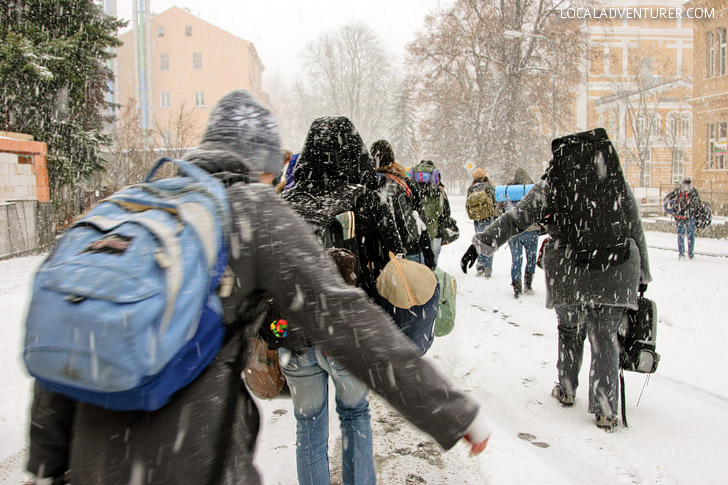
- Not having to save a lot to travel.
- Getting to see more for less $$.
- Hostels typically have a great community built around them.
- To make the most of it, you must have a flexible schedule.
- Risky to travel with a lot of expensive electronics (cameras / laptops).
- Some destinations won’t be conducive to budget travel.
- More planning involved.
- Less personal space.
2. Luxury Traveler
Traveling in comfort and style at the nicest hotels, restaurants, and with first-class flights.
Example: Our stay at the Somerset in Turks and Caicos
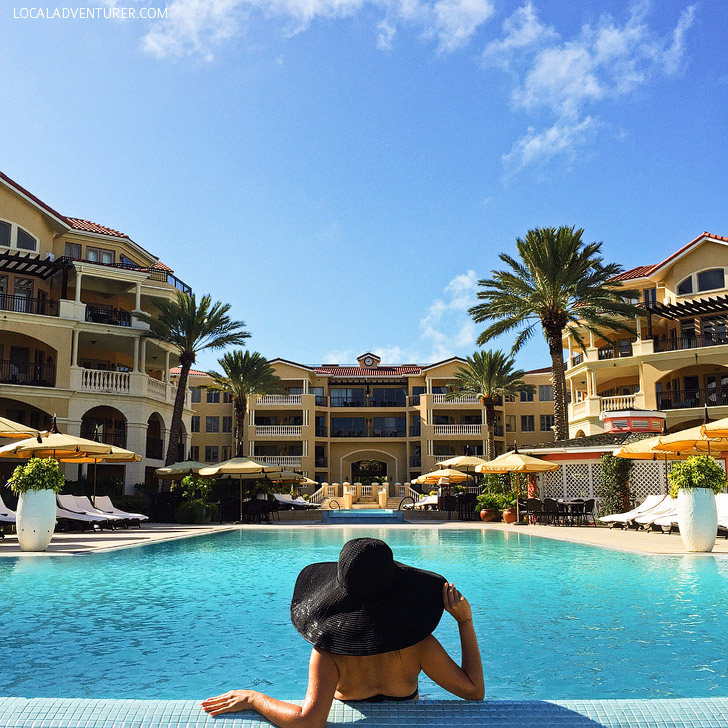
- Comfortable living quarters with plenty of benefits. Who doesn’t like getting pampered?
- Travel when it’s convenient for you.
- Will feel well rested and like a true vacation.
- Less sense of a community – most people like to keep to themselves.
3. Group Tour / Cruise Traveler
Joining a group / bus tour will help you see multiple destinations on one trip.
Example: We recently went to Spain , Portugal, and Morocco with Contiki .
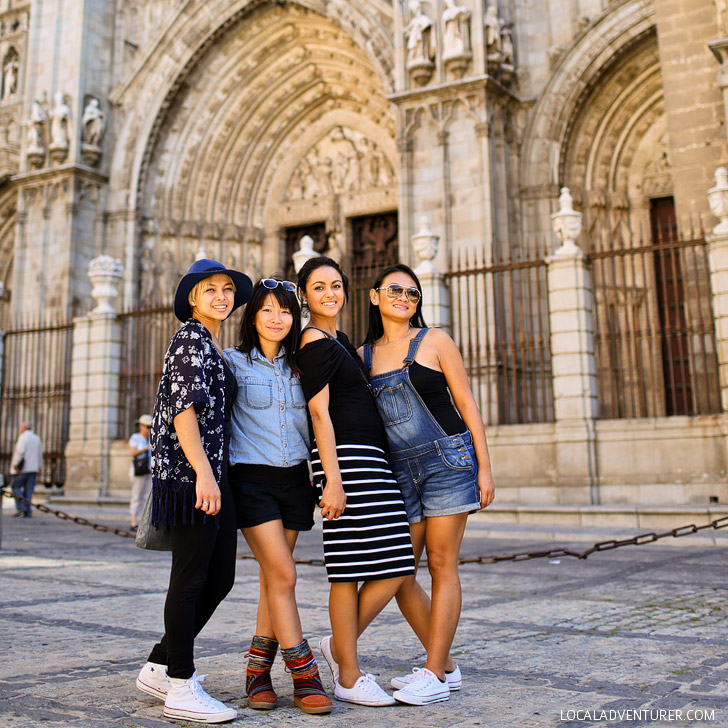
- You don’t have to worry about planning your day-to-day.
- Meet and bond with other travelers from all over the world and sometimes make lifelong friends (we did)!
- Get to see a lot in a short amount of time.
- No sleeping in. You’ll always be on the go.
- Activities are already set so there is less flexibility.
- You may not get to see everything you want to see.
4. Private Tour / Travel Agent Traveler
If you don’t have time to plan, it’s great to use the expertise of a travel agent to help you book your trip. Pick what you want to do, and let them figure out the logistics.
Example: Our trip to Galapagos Islands
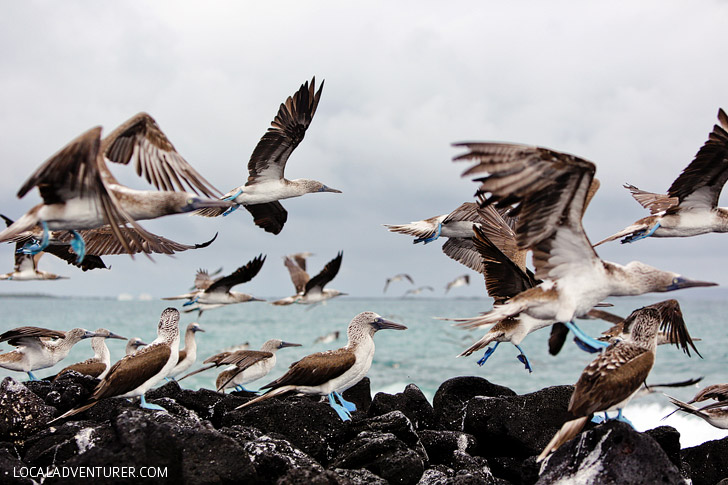
- Customized trips take you exactly where you want to go.
- Perfect for smaller groups.
- Don’t have to worry about transportation / logistics.
- Paying the extra fee to someone to help you book everything.
- You’ll stay within your group and rarely meet others.
- Have to decide what you want to do before you go.
5. Adventure / Active Traveler
This is for thrill-seekers who are up for an adventure and a lot of times involves hiking / backpacking.
Example: Our 4-day Hike on the Inca Trail to Machu Picchu
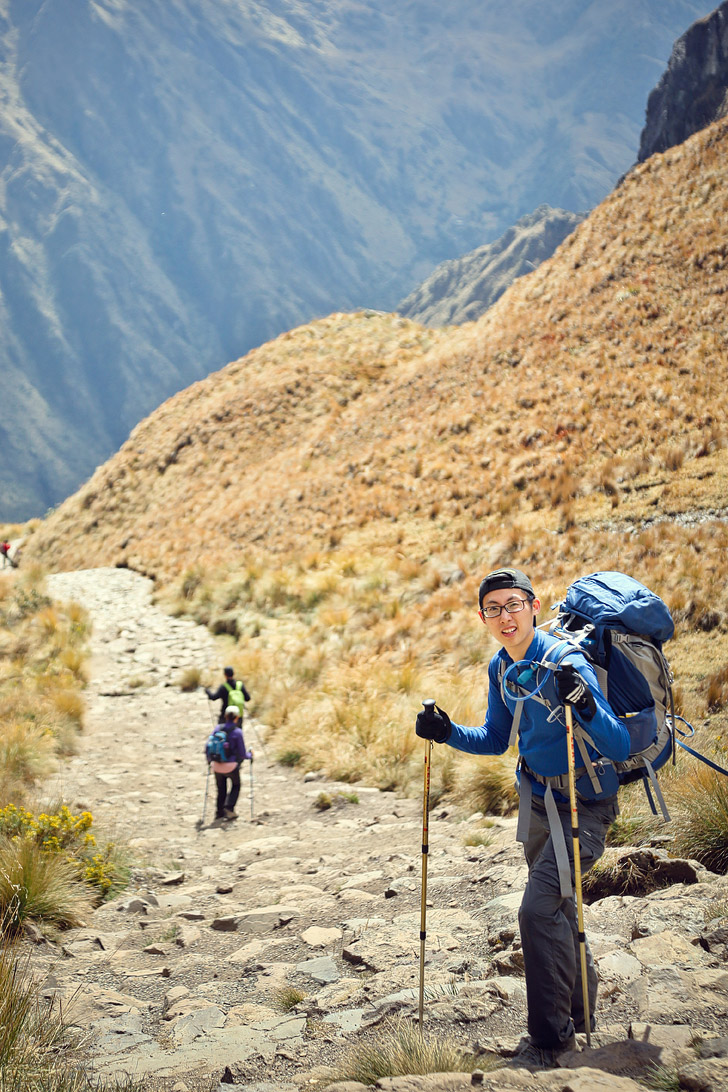
- Visit places, hikes, and areas that the majority of people wouldn’t visit.
- Challenge yourself and earn what you see!
- You get a greater appreciation of a place.
- You’re going to need a vacation after the vacation!
- The destinations can be difficult to get to.
- Can be weather dependent, so you have to be flexible.
6. Slow / Long Term Traveler
Staying in one destination for more than 6 months.
Example: We’ve been moving to a new city every year ( Atlanta >> Los Angeles >> Las Vegas >> San Diego >> Portland >> NYC ) to explore all its hidden gems.
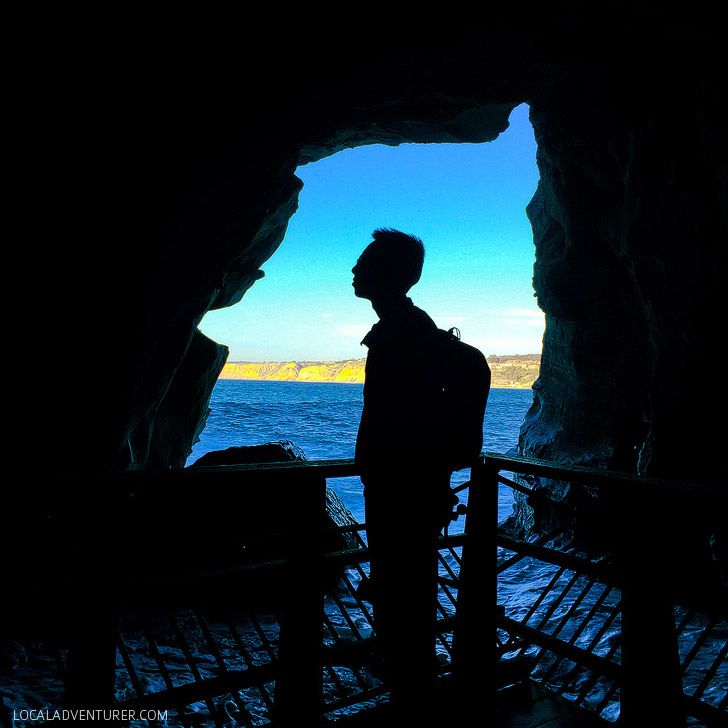
- Dive into to the local culture by becoming a local.
- Can go at a more relaxed pace and not feel rushed to do everything back to back.
- Get the chance to explore more hidden gems.
- Need a flexible job and way to finance a long-term trip.
- You won’t have your friends and community around, so you might get homesick.
- Experiencing different cultures for a short period can be eye-opening and even inspiring, but over time, you will find things that annoy you just like when you’re “at home”. Every place has pros and cons no matter how glamorous it may seem!
We also considered eco-tourism, voluntourism, foodie, and photography based travel, but we felt like most of them could be subcategories to the above. Right now, we lean mostly towards slow or long-term travel, since that’s what Local Adventurer is all about, but when we also go abroad, our travel style is a mix of all of them. We’ll also continue doing all these types of travel depending on the destination or what we want out of the trip. :)
Have you tried all these travel styles? Which one has fit you the best so far? Are there any we didn’t include?

Leave a Reply Cancel reply
This site uses Akismet to reduce spam. Learn how your comment data is processed .

- My Interests
Top Stories

How to Win EVERY Game of Warzone 3 (Call of Duty Tips)

Top 10 Best Casinos in Nairobi Reviewed

Esports Entrepreneurs: Build your Business Empire from Pixels and Passion
Stay connected, 10 types of tourist attractions.
When planning a vacation or exploring a new destination, one of the first things that comes to mind is the tourist attractions you can visit. Tourist attractions are places or sites that draw visitors due to their cultural, historical, natural, or entertainment value. These attractions play a pivotal role in attracting tourists worldwide and contribute significantly to local economies.
In this article, we will explore the top 10 types of tourist attractions that you should consider including in your travel itinerary. Each type offers unique experiences and insights into different aspects of our world, from iconic landmarks and natural wonders to theme parks and museums.
1. Iconic Landmarks
Iconic Landmarks are perhaps some of the most well-known tourist attractions globally. They represent a country or city’s identity and are significant symbols recognized worldwide. These landmarks become focal points for travellers seeking memorable photo opportunities or a chance to connect with history.
The Eiffel Tower – Paris, France
One such iconic landmark is The Eiffel Tower in Paris, France. Standing at an impressive height of 330 meters (1080 ft), this wrought-iron lattice tower attracts millions of visitors annually. The observation decks offer breathtaking views of the French capital’s skyline and have become synonymous with romantic moments captured by tourists from around the globe.
The Great Pyramids – Giza Plateau, Egypt
Another famous example is The Great Pyramids on the Giza Plateau near Cairo, Egypt. This ancient wonder remains an enigma for historians and archeologists alike while continuing to captivate travellers with its towering presence as it has for thousands of years.
2. Natural Wonders
Nature has provided us with awe-inspiring landscapes that leave us marvelling at their grandeur and beauty. Natural wonders offer visitors an opportunity to immerse themselves in the breathtaking landscapes and experience the raw power of nature.
The Grand Canyon – Arizona, United States
The Grand Canyon in Arizona, United States, is a prime example of a natural wonder. Carved by the Colorado River over millions of years, this immense gorge stretches approximately 277 miles (446 km) long and up to 18 miles (29 km) wide. Hiking trails allow visitors to explore different canyon sections and witness its ever-changing colours as the sun casts shadows throughout the day.
Victoria Falls – Zimbabwe/Zambia Border
Victoria Falls is one of Africa’s most famous natural attractions located on the border between Zimbabwe and Zambia. They are known locally as “Mosi-oa-Tunya” or “The Smoke That Thunders,” this waterfall measures an astonishing 355 feet (108 meters) in height and spans more than a mile (1.7 km) across. The sheer force and beauty of Victoria Falls make it a must-visit destination for nature enthusiasts.
3. Historic Sites
For those interested in history, visiting historic sites provides an opportunity to step back in time and gain insights into ancient civilizations, significant events, or milestones that shaped our world.
Machu Picchu – Cusco Region, Peru
One such historic site is Machu Picchu , located high in Peru’s Andes Mountains above the Sacred Valley near Cusco. Built by the Incas around AD 1450 but abandoned during Spanish colonization, this mystical city showcases impressive stone architecture that has stood the test of time. Exploring Machu Picchu’s terraces and buildings allows visitors to appreciate Inca ingenuity while admiring breathtaking mountain views.
Petra – Ma’an Governorate Jordan
Hidden amidst rugged desert canyons lay Petra , an ancient city carved into pink sandstone cliffs within present-day Jordan. Dating back to 300 BCE, this UNESCO World Heritage Site features stunning ruins, including the iconic Treasury and Monastery. Walking through the narrow canyon known as the Siq and witnessing these ancient wonders leaves visitors in awe of Petra’s rich history.
4. Museums and Galleries
Museums and galleries explore art, culture, science, and history. These institutions house collections of artifacts, artwork, scientific exhibits or historical documents that aim to educate and inspire visitors.
The Louvre – Paris, France
The Louvre Museum in Paris, France, is one of the world’s largest art museums. Housed within a former royal palace spanning over 600 years of history, it displays iconic masterpieces such as Leonardo da Vinci’s Mona Lisa and Venus de Milo. Visiting The Louvre allows art enthusiasts to immerse themselves in some of humanity’s most outstanding achievements.
Smithsonian Institution – Washington D.C., United States
The Smithsonian Institution is a collection of museums in Washington, D.C., USA. Comprised of 19 museums ranging from natural history to space exploration to African American history, each museum aims to preserve our heritage while enlightening visitors about various fields of knowledge. The Smithsonian offers an unparalleled learning experience for individuals with diverse interests.
5. Theme Parks
Theme parks are designed with entertainment at their core, offering thrilling rides, attractions for all ages and immersive experiences that transport visitors into different worlds.
Disneyland – Anaheim, California
Founded by Walt Disney himself in 1955, Disneyland remains one of the most famous theme parks globally, in Anaheim, California, USA. With its enchanting castles, intertwining pathways, and famous characters such as Mickey Mouse, this magical kingdom still captures the hearts (and wallets) of families looking to share new memories.
Universal Studios Hollywood – Los Angeles, United States
Another renowned theme park is Universal Studios Hollywood , located in Los Angeles, California. It offers visitors the opportunity to enter the world of movies and television with behind-the-scenes tours, thrilling rides styled after blockbuster films such as Jurassic World and Harry Potter, and live entertainment options that keep guests entertained throughout their visit.
6. Cultural Neighborhoods
Exploring cultural neighbourhoods allows one to immerse oneself in local traditions, architecture, cuisine, and community. These neighbourhoods often offer unique experiences through events or authentic shops where you can purchase locally made crafts or taste traditional dishes.
The Medina of Marrakech – Morocco
The Medina of Marrakech in Morocco is a UNESCO World Heritage Site renowned for its vibrant atmosphere and rich heritage. Visitors can wander through labyrinthine streets with colourful souks selling spices, textiles, and handicrafts. The mesmerizing beauty of riads (traditional Moroccan houses) exemplifies the city’s architectural splendour.
Gamla Stan – Stockholm, Sweden
In the heart of Stockholm lies Gamla Stan , also known as “The Old Town.” This well-preserved medieval neighbourhood offers visitors a glimpse into Sweden’s history with its narrow cobblestone streets, charming cafes, and historic buildings like the Royal Palace. A stroll through Gamla Stan feels like stepping back in time.
7. Adventure Destinations
For adrenaline junkies seeking an action-packed vacation,
Queenstown – New Zealand
Queenstown, in New Zealand, is renowned for offering an array of thrilling activities—from bungee jumping to jet boating to skydiving. Nestled between mountains and surrounded by crystal-clear lakes, this picturesque destination serves up exhilaration alongside spectacular natural scenery that appeals to adventure seekers around the globe.
Kruger National Park – South Africa
If wildlife encounters are your idea of adventure, then Kruger National Park should be on your must-visit list. As South Africa’s largest game reserve, it is home to the Big Five (elephant, lion, leopard, rhino and buffalo ) and many other wildlife species. Exploring the park’s vast landscapes on a safari allows one to witness these majestic creatures in their natural habitat.
8. Architectural Marvels
Architecture enthusiasts will be captivated by magnificent architectural marvels showcasing human imagination and ingenuity.
Taj Mahal – Agra, India
The Taj Mahal in Agra, India, is an exquisite example of Mughal architecture renowned for its white marble facade and intricate carvings. Considered one of the New Seven Wonders of the World, this mausoleum was built by Emperor Shah Jahan in memory of his late wife. The Taj Mahal’s beauty at sunrise or sunset is breathtaking.
Sydney Opera House – Sydney, Australia
Designed by Danish architect Jørn Utzon, Sydney Opera House is an iconic symbol for Sydney and Australia. Its distinctive sail-like roof structure overlooks Sydney Harbour, hosting some of the world’s most acclaimed performances. The complex also houses bars, restaurants, and shops where visitors can enjoy stunning views or explore Australian cultural experiences.
9. Religious Sites
Throughout history, religion has significantly influenced art, architecture, and culture. Religious sites hold spiritual significance for many individuals while offering architectural beauty worth admiring regardless of faith.
Angkor Wat – Siem Reap, Cambodia
In Siem Reap, Cambodia, Angkor Wat is not only the largest religious monument globally but also a UNESCO World Heritage Site. This sprawling temple complex serves as a place of worship and an artistic masterpiece reflecting the Khmer Empire’s achievements between the 9th-15th centuries. Encapsulating intricate carvings towers that rise skyward and a sense of serenity, Angkor Wat simultaneously fascinates both historians and tourists alike.
Vatican City – Rome, Italy
Located within the heart of Rome, Vatican City is an independent city-state known for being the spiritual epicentre of Catholicism. Visitors can marvel at architectural wonders like St.Peter’s Basilica and Michelangelo’s frescoes in the Sistine Chapel. Exploring Vatican City often includes admiring priceless masterpieces in the Vatican Museums while experiencing a deep spiritual awe.
10. Scenic Routes
Sometimes, the journey itself is as important as reaching a destination. Scenic routes provide travelers with breathtaking landscapes, helping them connect with nature while driving, cycling or hiking.
Pacific Coast Highway – California, United States
The Pacific Coast Highway , also known as Highway 1, stretches along California’s coastline, offering stunning ocean views, spectacular cliff drops, and charming coastal towns such as Monterey and Santa Barbara. Explore hidden beach coves, breathe in fresh sea air, and enjoy mesmerizing sunsets during one of world’s most scenic drives.
The Great Ocean Road – Victoria, Australia
Spanning approximately 243 kilometres (151 miles) between Torquay and Allansford, The Great Ocean Road provides travellers with magnificent coastal scenery in Australia. An array of cliffs, windswept beaches, and iconic limestone formations like Twelve Apostles make this road trip adventure genuinely unforgettable.
Visiting tourist attractions worldwide allows us to discover new cultures, appreciate nature’s beauty, unravel history’s mysteries, or create lasting memories filled with laughter and joy. Whether you are seeking adventure, cultural experiences, historical insights or serene moments reconnecting with Mother Nature, It is essential to select destinations that align with your interests and preferences. Utilizing planning tools and resources available online can help shape your itinerary, guaranteeing an unforgettable travel experience.
Sign Up For Daily Newsletter
Be keep up get the latest breaking news delivered straight to your inbox..
Leave a Reply Cancel reply
Your email address will not be published. Required fields are marked *
Save my name, email, and website in this browser for the next time I comment.

Sign in to your account
Username or Email Address
Remember Me
Travel With - The Holiday Story
16 Different Types of Tourism in India
Do you know that India has one of the world’s seven wonders? Yes, It’s the incredible Taj Mahal in Agra, Delhi. In last year’s statistics, India holds 34th out of 140 countries. It’s the pride of Indians. This article explains different types of tourism in India and the best places you can visit.
The tourism industry now become the fastest-growing industry in the world. In India, many types of tourism play major economic importance in rapid development.
India in South Asia has a wide variety of tourism branches. The Ministry of Tourism and the state government have identified many niche products to attract tourists. The industry aims to develop India as the finest tourist destination all over the globe. Let’s find out the important types of tourism in India.
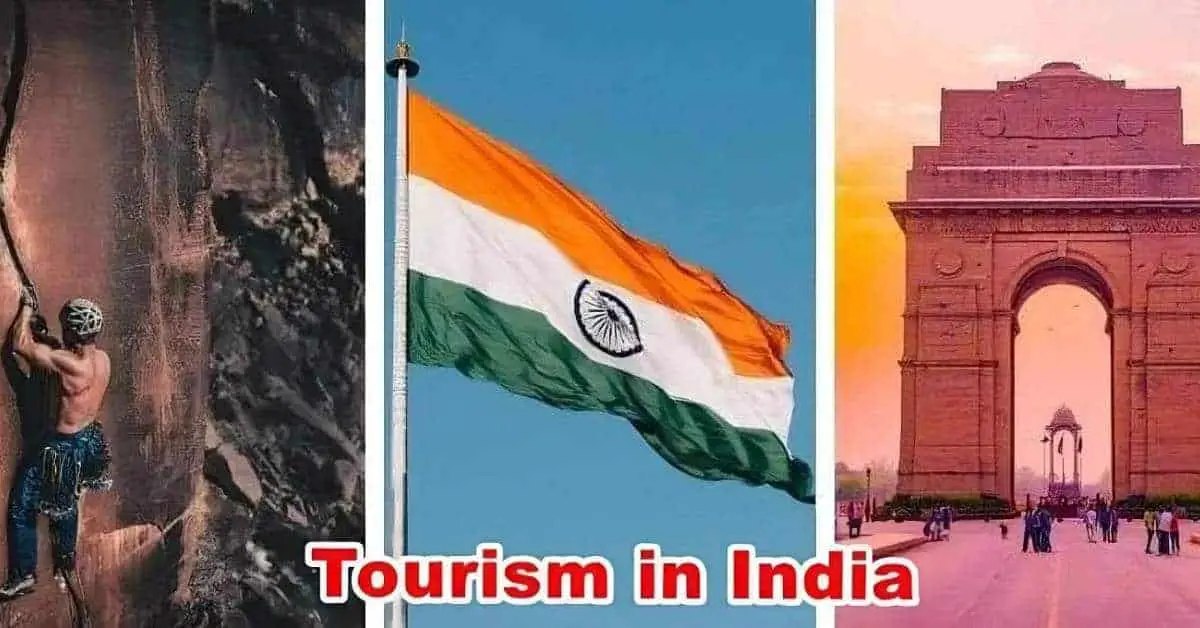
Types of Tourism in India
1. adventure tourism .
There are many types of adventure tourism in India because of the diverse topography. These will help you to cut down on your monotonous urban life. Adventure tourism is one of the major forms of tourism. Many Indian tourism packages are found for these adventurous trips.
Types of Adventure Tourism in India
There are lots of adventure activities available like –
Rafting or Kayaking, Caving, Heli-Skiing, Trekking, Waterfall Rappelling, Skydiving or Scuba diving, Paragliding, Hot Air Ballooning, etc.
Some adventurous tourist places are –
- Wildlife Safari at Jim Corbett National Park , Bandhavgarh, Kanha, and Pench National Park.
- Treks at Ladakh, Uttarakhand, Sikkim, Himachal Pradesh, and Kashmir.
- Motorbike expeditions on the Leh-Manali highway and through South and West India.
- River Rafting in Uttarakhand and the Kolad village.
- Scuba Diving in Port Blair Andaman, Nicobar Islands , Goa, and Murudeshwar Karnataka.
- Hot Air Ballooning ride in Jaipur, Rajasthan and Lonavala in Mumbai.
- Camping in Uttarakhand, West Bengal, Rajasthan, Karnataka, and Himachal Pradesh.
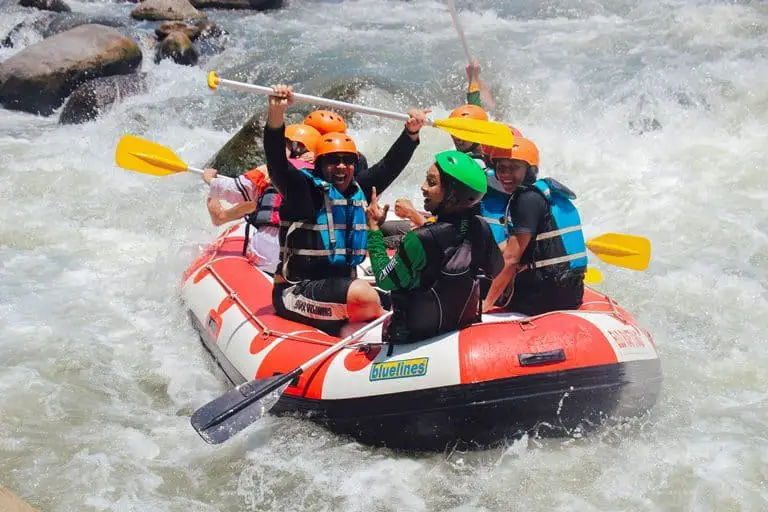
2. Wildlife Tourism
India is not only a diverse country but also a wildlife enthusiast. About 4% of India’s total land, 90 forests are national parks , and 482 are wildlife sanctuaries. As per statistics, India has 60-70% of the world’s biodiversity.
In these forests, you can find Asian elephants, Asiatic lions, Royal Bengal tigers, sloth bears, Indian rhinos and leopards, etc. There are hundreds of bird species found in sanctuaries/ jungles. These places became the best tourist spots for birdwatching. Wildlife tourism areas:-
- Jim Corbett National Park (Uttaranchal),
- Bandhavgarh National Park and Kanha National Park in Madhya Pradesh,
- Kaziranga National Park – Assam
- Gir National Park in Sasan Gir (Gujarat),
- The Great Himalayan National Park – Himachal Pradesh
- Sundarbans National Park – West Bengal
- Ranthambore National Park in Sawai Madhopur, especially for bird species.
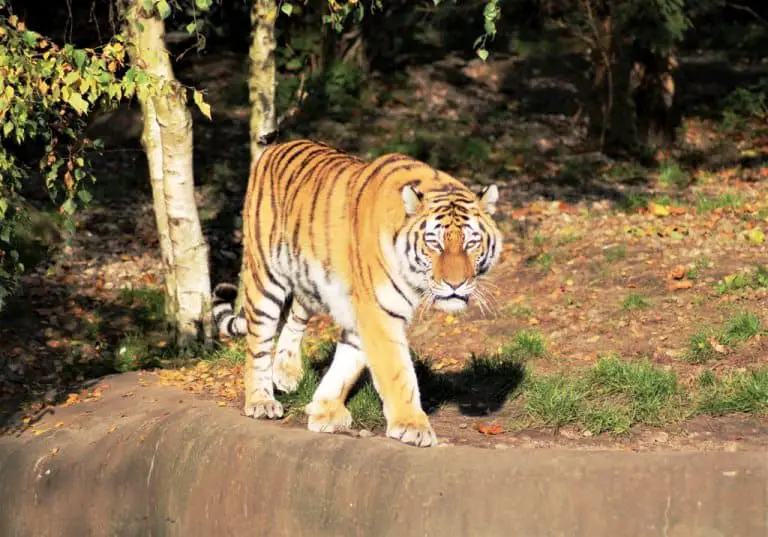
3. Eco-Tourism
India, a country of diverse geography, offers several tourist destinations that relieve stress and revitalize you.
There are many ways to enjoy nature. Places like the Himalayas, North-East India, Kerala, Andaman and Nicobar Islands, and Lakshadweep Islands, where you can enjoy the treasures of nature in spiritual ways. It is called nature-based tourism.
Thenmala in Kerala is India’s first planned ecotourism destination for eco-tourists and nature lovers. There, you can be a part of several adventurous activities. Eco-tourism places are:-
- Kerala Backwaters
- Munnar, Kerala
- Coorg, Karnataka
- Galgibaga Beach, Goa
- Chilika, Odisha
- Khangchendzonga Biosphere Reserve, Sikkim
- Jotsoma village in Kohima, Nagaland
- Tea Gardens, Jalpaiguri and Darjeeling
- Sunderban Tiger Reserve, Sunderban
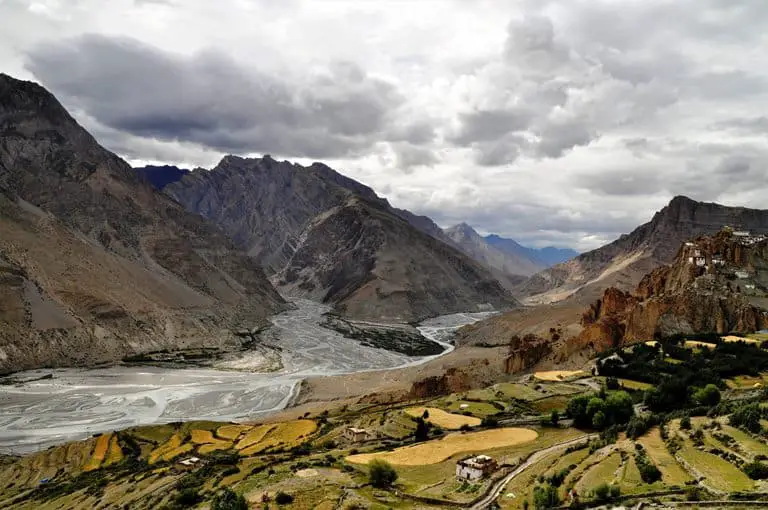
4. Medical Tourism
In Medical tourism, international tourists come to our country for healthcare. In the meantime, they visit tourist places in that city/state. This international tourism is rapidly growing in India.
Recently, private hospitals have gotten a massive boost from medical tourism. Because of this demand, they increase their total employment, transportation, etc. Medical Services requested by travellers, including complex surgeries.
According to a Medical Tourism Market Report, India is the leading tourism destination for the highest quality Medical Treatment at the lowest cost.
Last few years, Indian medical tourism was estimated at 3 billion and is expected to reach $6-7 billion in the upcoming years. According to a CII-Grant Thornton report, 34% of medical tourists are from Bangladesh and Afghanistan, 30% from Russia, and the Commonwealth of Independent States. The rest are from Africa and the Middle East.
The most visited hospitals for Medical tourism are:-
- SRI RAMACHANDRA MEDICAL CENTRE (SRMC) – CHENNAI
- BLK Super Specialty Hospital, Pusa Road, New Delhi
- Fortis La Femme, Greater Kailash, New Delhi
- CHRISTIAN MEDICAL COLLEGE VELLORE CHENNAI
- NARAYANA INSTITUTE OF CARDIAC SCIENCES (NICS) – BANGALORE
- TATA MEMORIAL HOSPITAL Mumbai

5. Wellness Tourism
India is one of the top places in the world known for wellness. Popularity increases as people try to move towards a healthier lifestyle. Yoga, Meditation, and Ayurveda are the oldest and most effective ways of treatment. Both domestic and international tourists explore those methods.

Every year, many tourists from the United Kingdom come here to join these classes. Visitors are very concerned about Visa Policy and Valid Passports because this tourism is a time-consuming course.
If you plan to depress anxiety and revive feeling emotion, we have compiled a list of top wellness destinations in India that you must visit. The places are:-
- Ayurvedagram Heritage Wellness Center, Bengaluru, Karnataka
- Shreyas Yoga Retreat, Bengaluru, Karnataka
- The Leela, Kovalam, Kerala
- Sarovaram Ayurvedic Health Center, Ashtamudi, Kerala
- Vana, Dehradun, Uttarakhand
- Ananda in the Himalayas, Rishikesh, Uttarakhand
- Devaaya, Goa
- Nimba Nature Cure, Mehsana, Gujarat
- Wildflower Hall, Shimla, Himachal Pradesh
- Amarvilas Spa, Agra, Uttar Pradesh
6. Cultural Tourism / Heritage Tourism in India
Cultural and religious India is the motherland of the world. The country is enriched with unique cultural vibrancy with various world heritage sites. It has historical significance as well. Those things attract travellers globally. Our Cultural and Heritage Tourist Attractions are:-
- Taj Mahal New Delhi (One of the seven wonders sites of the world)
- Khajuraho Group of Monuments, Madhya Pradesh
- Mahabodhi Temple Bihar
- Red Fort New Delhi
- Chittorgarh Fort and Kumbhalgarh Fort of Udaipur.
- Hampi Vijayanagara Empire, Karnataka
- Kolkata: The City Of Joy (the capital was during British rule)
- Ajanta Ellora Caves, Maharashtra
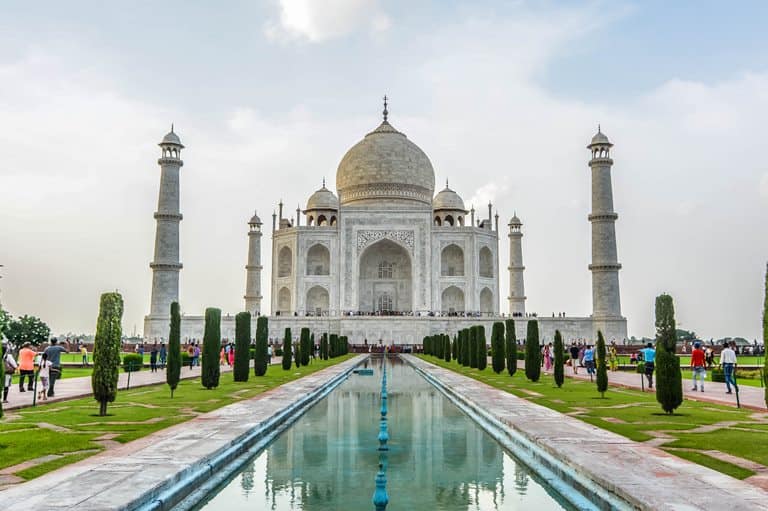
7. Religious Tourism / Pilgrimage Tourism
India is called a ‘country of faith.’ You can find a spiritual environment all over the country. Dharma creates this environment; Karma carries and forgives. India is a secular country with multiple religions. We live here in ultimate peace and adequacy. For that reason, spiritual tourism has a vital role in tourism development.
The presence of many temples, mosques, gurdwaras, churches, and monasteries in India motivates travellers to come here. The most attractive Religious and Pilgrimage Tourism spots are: –
- Golden Temple/Swarn Mandir/Harmandir Sahib in Amritsar
- Velankanni Church
- Amarnath Cave
- Hemkund Sahib
- Sun Temple (Surya Mandir) in Konark
- Dargah Gharib Nawaz in Ajmer
- Vaishno Devi Temple
- Jammu Kashmir
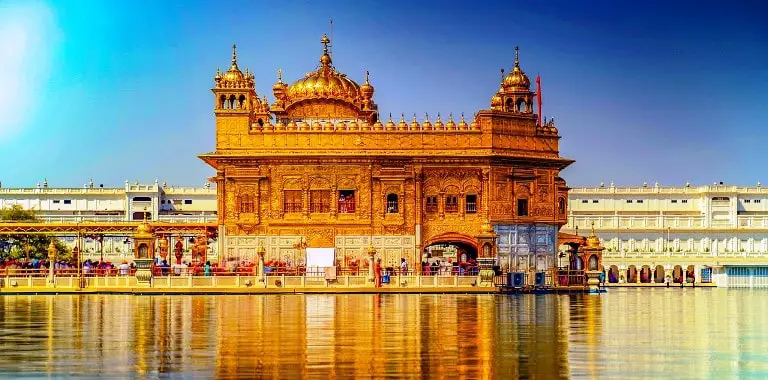
8. Business Tourism
Like other travel destinations in India, business tourism plays a unique role. Nonstop flights from several foreign countries prove the potentiality of Indian business tourism. As a result, companies choose India for growing business and meetings.
International companies want to spread their business in New Delhi, Hyderabad, Kolkata, Gurgaon, Pune, Mumbai, Ahmedabad, Bangalore, etc.

9. Cruise Tourism
In India, Cruise tourism is a growing niche tourism product. It encourages and attracts tourists with a specific interest. The Ministry of Tourism and state governments are developing infrastructure to flourish cruise tourism in India. India’s vast and delightful coastline and virgin forests can be a place of interest for cruise travellers.
- The Golden Triangle Cruise from New Delhi
- Andaman Islands Glass Bottom Cruise
- Brahmaputra River Cruise from Guwahati
- Sunderbans Boat Cruise from Kolkata
- Kerala Backwater Cruise
- Ganges River Cruise from Kolkata
- Chilika Lake Cruise from Orissa
- Kochi Cruise
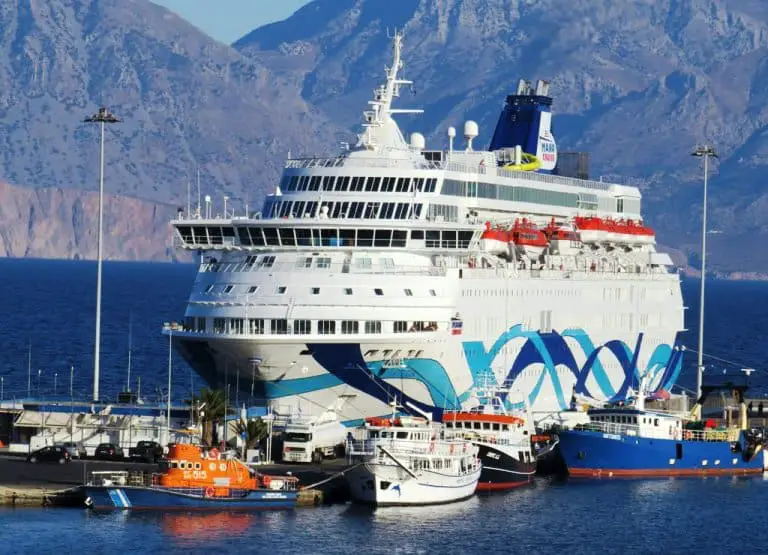
10. Culinary Tourism
A decade ago, culinary travelling was still unknown in the Indian subcontinent. Famous for its distinctive taste and spice, Indian cuisine is now famous worldwide. With the evolution of the tourism sector in India, this is one of the niche tourist products on entry.
In India, cuisine can be divided into North Indian and South Indian food. We can subdivide it into regional sub-groups like Rajasthani, Chettinad, Bengali, Punjabi, Sindhi, Gujarati, Hyderabadi, Mughal, Kashmiri, and Bengali. The best food and beverage in India is:-
Indian thali, Biryani, Stuffed Paratha, Samosa, Masala Dosa, Palak Paneer or Sag Paneer, Chole Batura, Dum Aloo, Chaats, Rasgola, Gulab Jamun, Rasmalai, Jalebi, Gajar ka Halwa, Kulfi and lots more.
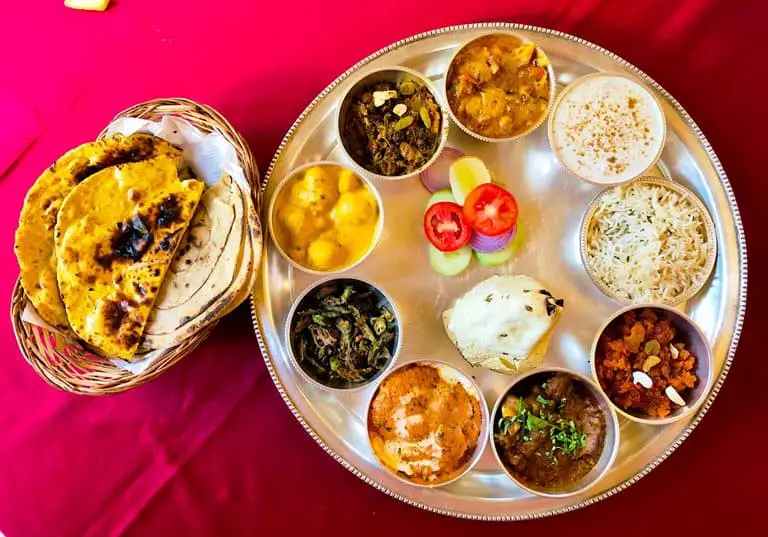
11. Dark Tourism
India has complex history makes it the perfect choice for dark tourists. India’s many travelling spots are included in the “dark tourism.” It is a new type of tourism .
Dark tourism is connected with places that have experienced death, pain, and mystery. It is famous for those interested in history and wanting to discover dark, untold past stories. It might be deadly and terrifying, but the destination becomes popular because of its typical nature and experience. We have a list of several black tourist places in India; they are:-
- Jallianwala Bagh, Amritsar
- Cellular Jail, Kala Pani, Andaman & Nicobar Islands
- Roopkund, Skeleton Lake, Uttarakhand
- Union Carbide subsidiary plant, Gas Tragedy, Bhopal
- Wagah border crossing point and ceremonies
- Taj Palace Hotel, Mumbai

12. Film Tourism
India is famous for its many tourism classifications, including medical tourism, adventure tourism, eco-tourism, cultural tourism, and film tourism. The country has the world’s largest film producer, producing over 1800 films annually. Indian film is known as Bollywood.
We expect India to receive one million film tourists by the coming year. When a viewer is persuaded to visit a particular location after watching a movie, they call it a ‘Filming destination or film tourism.’ Famous places are:-
- Ramoji Film City Hyderabad
- India Gate, Delhi
- Marine Drive, Mumbai
- Fort Aguada, Goa
- Udaipur City Palace, Rajasthan
- Hadimba Mandir, Manali
- Munnar Tea Plantations, Kerala
- Nahargarh Fort, Jaipur
- Rohtang Paas, Himachal Pradesh
- Pangong Lake, Ladakh
- Gulmarg, Kashmir
- Dakshineswar Kali Temple & Howrah Bridge, Kolkata

13. Sports Tourism
India always attracts tourists with its rich cultural heritage, food, and architectural wonders. But, some years ago, no one thought sports could also attract foreign tourists.
All over the world, Sports tourism has come out as the most important tourism service sector. Eventually, it spread all over the country and also made a splash in India.
Adventure sports tourism is currently growing at about 12%, as announced by the Ministry of Tourism. This multi-trillion industry will show a massive bounce in the coming years sports trade analysts predict.
This tourism industry in India became the employment generation sector. They focus on the infrastructure development of different types of tourism in India. Many Internationally famous sports are organized here like:-
- Commonwealth Games 2010
- Cricket World Cup 2011
- Men’s Hockey World Cup, AIBA
- Indian Premier League (IPL)
- Pro Kabaddi League
- Indian Super League
- Badminton World Federation (BWF) Tour Lucknow
- ICC Champions Trophy
Many Internationally famous sports tourism places is
- Rishikesh – White Water Rafting
- Rishikesh – Bungee Jumping
- Auli – Skiing
- Kasauli – Hang Gliding
- Ladakh – Trekking
- Gulmarg – Ice Climbing
- Andamans – Scuba Diving
- Goa – Water Sports
- Pushkar – Hot Air Ballooning
- Mysore – Skydiving
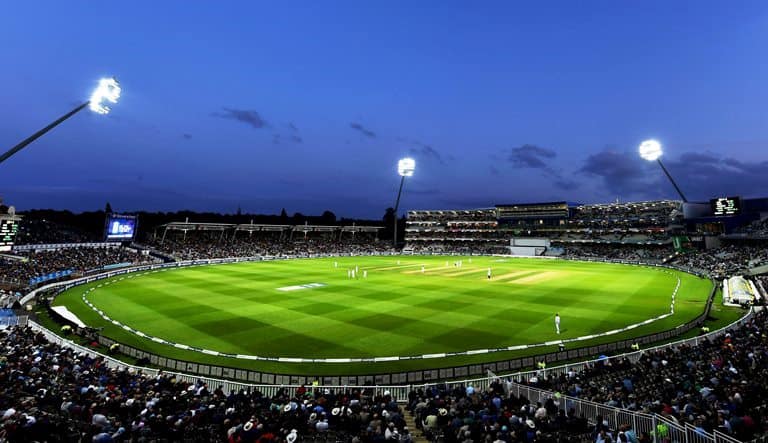
14. Educational Tourism
India is an excellent destination for educational tourism. Our country offers a variety of possibilities and topics for students. Here, travellers can visit many astonishing and breathtaking monuments like the Taj Mahal, forts and palaces of Rajasthan, mausoleums and mosques, beautiful temples related to different religions of India, and old churches.
Similarly, visiting thousands of old rural villages and their houses, castles, palaces, and life stories would be an incredible experience.
So, an education tour in India will surprise students and give them a broad knowledge of the subject.
- Dholavira and Lothal, Gujarat
- Hampi, Karnataka
- Forts and Palaces of Rajasthan
- Rajasthan Tribal Villages Tour
- Treasure of Nature and Heritage Tour
- Medieval Heritage Tour
- Sun Temple Tour
- Mawlynnong, Meghalaya
- Kaziranga National Park, Assam
- Ajanta Ellora Caves Aurangabad
- Nalanda, Bihar
- Kolkata, West Bengal
15. Yoga school and retreat Tourism In India
Yoga is a healthy habit for daily life. Now everybody wants to habit this exercise. Yoga san has been practised in India since ancient times. It’s also mentioned in many Biblical books. So many yoga practitioners travel to India to know and practice it correctly. Some include it at the top of the bucket list.
The southern city of Mysore has accommodation for several schools that teach Kayakalpa yoga , Ashtanga yoga, and yoga ashrams found all over India. Tourists come here for weeks, months, or even years. They also complete a certificate program or a year-long training program. Some famous yoga schools in India are listed below.
- Kayakalpa yoga school in Tamil Nadu
- Ashtanga Institute
- Ramamani Iyengar Memorial Yoga Institute
- Bihar School of Yoga
- Yoga Institute Mumbai
- Parmarth Niketan
- Krishnamacharya Yoga Mandiram
- Sivananda Yoga Vedanta Dhanwantari
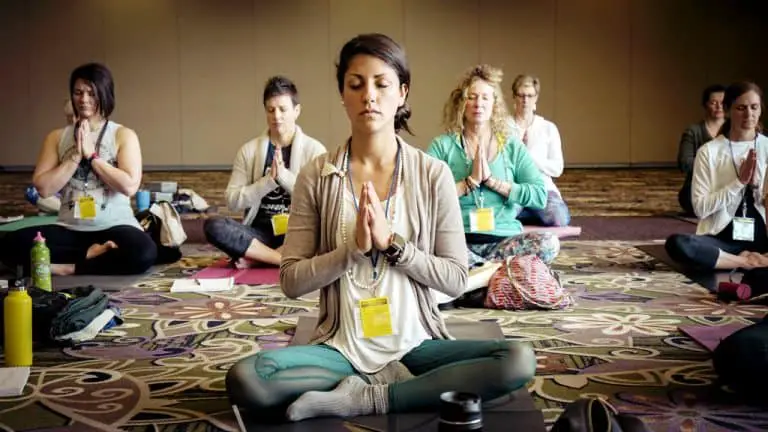
16. Recreation Tourism
One of the main goals of recreation tourism is a physical and intellectual renaissance in humans. Many people spend their vacations on recreational tourism. Tourists include themselves in physical activity, sports, cultural events, visiting castles, museums, wine testing, etc. Some places for recreational tourism in India.
- Goa – Watersports, Flyboarding, fishing, dolphin tours, cruising, island hopping, long walks.
- Sikkim – cable car ride, paragliding, Yack safari, hot springs.
- Munnar – Treehouse, visit a tea plantation, mountain biking, shikara ride.
- Coorg – Elephant Training Camp, Nalknad Palace, Madikeri Fort.
- Ooty – extract honey, sip tea, camping, nightlife.
- Darjeeling – trekking, toy train, eating thukpas and momos, shopping.
- Spiti Valley – fossil hunting, camping, Stargazing, visit Dhandar Lake, visit a monastery.
New Types of Tourism
In this article, we already discussed the verities of tourism in India. However, some tourism sectors have emerged in them, such as Cruise Tourism, Sports Tourism, Film Tourism, Dark Tourism, and Culinary Tourism. Till today, those types of the tourism industry have shown good service under sustainable tourism.
Four main types of tourism in India
We can identify various types of tourism in India, but four main types of tourism are popular: –
- Adventure Tourism
- Medical Tourism
- Cultural Tourism / Heritage Tourism India
- Religious Tourism / Pilgrimage tourism
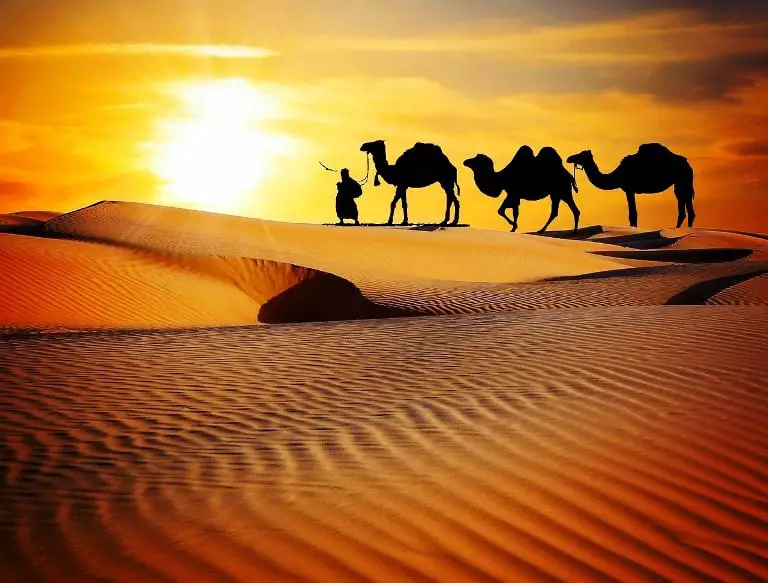
Types of Tourism Resources in India
Over the years, India has become a major tourist destination. India has grown with a tremendous flow of tourists globally. There are many types of tourism resources available in India, such as natural resources, adventure, human culture, pilgrimage, wildlife, etc. Here, we talk about three types of tourism resources as
- Natural resources
- Human resources
- Adventure resources
Natural Resources
India is enriched with huge minerals, coal, iron, manganese, copper, and mica. In addition, we have natural forest resources like – sandalwood trees in Karnataka, wood and wooden products, and Lac (sealing wax) in Bihar, Madhya Pradesh, and Uttar Pradesh. Moreover, many rivers have flowed through India, so it is easy to generate hydroelectric power.
Human Resources
Human resources are important resources because they have reproducible ability. And India has the second-largest population in the world. So every kind of person is here. They have different thinking, creating, and inventing abilities, which is very powerful for a country.
Adventure Resources
India has a diverse landscape; thus, the country has enormous options for adventure tourism, like – Safari, Trekking, Ice Skating, Paragliding, Scuba Diving, Climbing, White Water Rafting, etc.
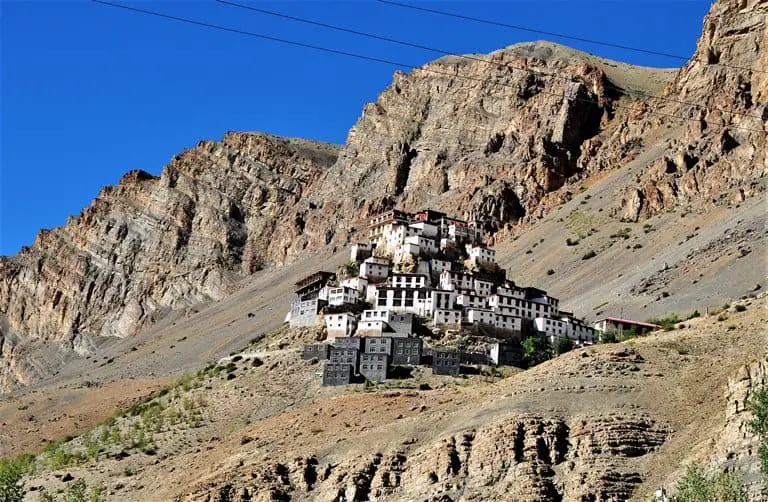
Development of Different Types of Tourism in India
India is a top-rated tourist destination in the whole world. Every year, thousands of travellers come here for different tourism. India has unique types of tourism, and they are constantly developing this industry, goods, and services. As per the statistics, India is an emerging tourism country globally.
The country has taken more security action for the different tourism sectors like – adventure tourism, medical tourism, sports tourism, etc.
India has various niche tourism industries, such as – cruise tourism, culinary tourism, and dark tourism. The Ministry of Tourism in India and state governments are trying to boost all these tourism sectors by giving them world-class facilities.
Importance of Tourism
Tourism is a kind of movement of travellers from one destination to another. Tourists usually visit this place temporarily. The travel destination is mostly away from their living and workplace. In the destination, travellers get almost every service like the hotel, restaurant, transport facility, tour guide, tour operators, etc.
Tourism does not mean travel to a particular place. It also contains all activities conducted during travelling. Tourism is most important to keep us relieved, relaxed, and stress-free.
Tourism in Kerala
Kerala is called “God’s own country”! It is on the alluring Malabar Coast of India. The rich and diverse culture of Kerala is known to all of us. When you come to Kerala, the natural beauty will amaze you. Thriving green wildlife, charming hill station, ancient Ayurveda healthcare method, unique dance forms, music, handicrafts, tourism products, and yummy veggie non-veggie food will surprise you.

The state is one of the ten paradises in the world. The southern states of India have everything they need for travel. Worldwide backwaters of Alappuzha, Kovalam, and Varkala Beaches are lifetime experiences in the Kerala tour.
In Kerala, the best wildlife sanctuaries and mountains in India are found. Moreover, Kerala has similarities between British, Chinese, Arabic, and Portuguese cultures, which you will find nowhere else in India.
Travelling to Kerala will revitalize your body and soul with its unique cultural and geographical features. This type of tourism in India is prevalent throughout the year.
Types of Tourism in Kerala
There are various kinds of Tourism packages found in Kerala India . Such as
- Kerala Hill Station Tourism
- Kerala Beach Tourism
- Kerala Backwater Tourism
- Kerala Culture Tourism
- Kerala Home Stay Tourism
- Kerala Medical Tourism
- Kerala Health Tourism
- Kerala Farm Tourism
- Kerala Ecotourism
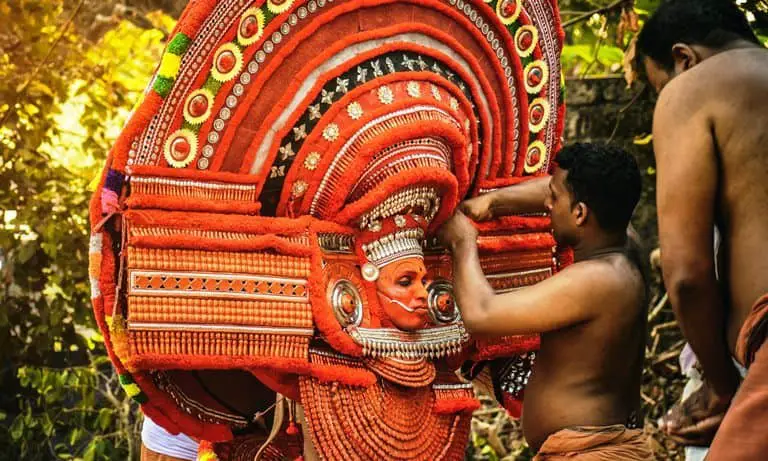
How many Types of Tourism are there in India?
There are many types of tourism in India. In between, 16 types of tourism are the most famous. In the coming days, tourism will become a major part of our economy.
What are the reasons behind Film Tourism?
There are vast classifications of tourists, and some are very much interested in film tourism. Tourists are delighted to recall all the film scenes when they visit the shooting spot. Many big-budget and blockbuster film locations are intact and preserved as they were in the film.
What is the most popular type of tourism?
The most popular type of tourism is healthy tourism. It is Worldwide famous. This tour is for medical patients to feel relaxed. Well-known health tourism countries are Brazil, Mexico, Panama, Costa Rica, India, etc. Tourists can also visit different ashrams and yoga centres during this travel time. Those are also a part of medical tourism.
Which state has the highest tourism in India?
Tamil Nadu has the highest number of tourists in India. According to the statistics of 2018, about 21% of the total tourists visit this state. Nilgiri Mountain, Ooty, Chennai, Yercaud hill stations, Kodaikanal.
After that, Uttar Pradesh is the second most visited place in the country. According to statistics, about 15% of the total tourists visit this state. The most popular sites are Delhi, Taj Mahal, Agra, Varanasi, and Lucknow.
Maharashtra has the third-highest number of tourists in India. The most visited places are – Ajanta Caves, Ellora Caves, Aurangabad, Bollywood and colonial architecture, Elephanta Caves, and Chhatrapati Shivaji Terminus.
What Are the Main Attractions in India?
India is famous for its history, culture, and tradition. The topmost tourist attractions of India are:-
The Taj Mahal, Agra The Holy City of Varanasi Harmandir Sahib: The Golden Temple of Amritsar The Golden City Jaisalmer The Red Fort New Delhi Mumbai, The Gateway Of India Mecca Masjid Hyderabad Amer Fort, Jaipur Beaches of Goa Agra Fort The Ellora Caves, Aurangabad Mysore Palace. Marble Palace/ Victoria Memorial Kolkata
Kindly Stay 5 Seconds More and Share this Article.
HI TRAVELLER …Myself Ruma Dey Baidya. I’ve been backpacking for the last 20+ years. Photography and travelling have been my passion since my childhood. Whenever I got an opportunity, I never missed it. I am not a solo backpacker, so I always try group travel. I prefer budget travel, and it also helps me to save expenses. We know that memories are not constant, so I decided to document them and created this travel diary. This website [ TheHolidayStory ] is dedicated to those who passionate about travel like me. Please feel free for any information related to my blog. I am always happy to reply. Mail id – ruma[@]theholidaystory.com
Leave a Reply Cancel reply
Your email address will not be published. Required fields are marked *
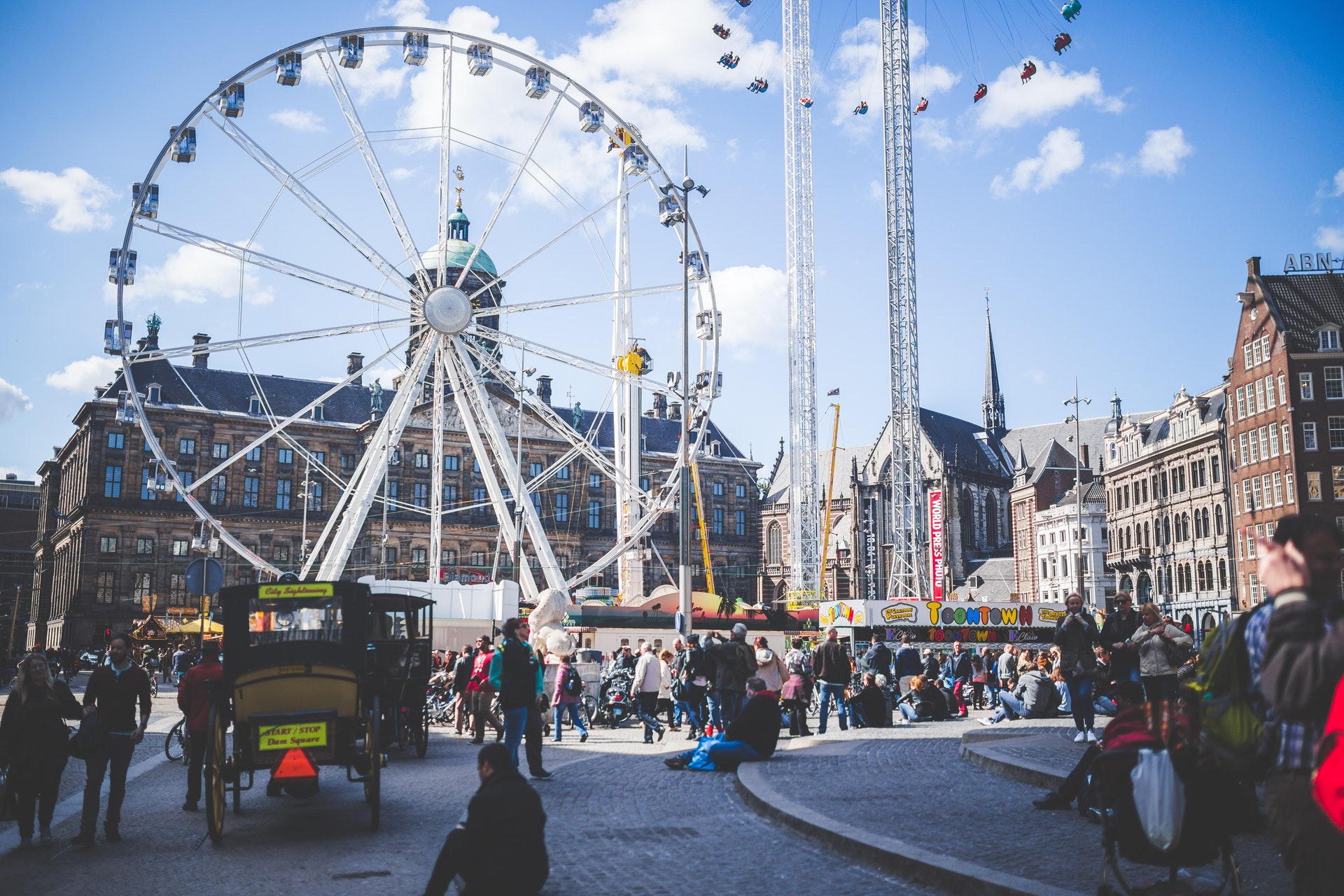
AC 1.2 - Describe characteristics of different types of tourists
Introduction.
For this AC you will need to describe the characteristics of the different types of tourist listed in the content of the specification.
The characteristics of different tourist types that you will need to understand and be able to describe are listed below.
Characteristics
- Purpose of stay – why have individuals or groups of tourists chosen to stay at a particular tourism destination is? Is it for leisure or business purposes?
- Age – are tourist destinations age specific? Why do certain age groups choose one destination over another?
- Cultural – this could include tourists who visit certain destinations because they want to experience the different culture and might include traditions, food or language.
- Socio-economic – are tourists’ decisions affected by their socio-economic situation? If so, how does this affect their choice of destination?
- Interests – where would a tourist choose to go to indulge their interest or take part in something new? Learners need to appreciate that not all tourism destinations offer the same facilities and attractions.
Different types of tourist
- Leisure – these are tourists who travel simply for leisure purposes. A holiday, a short break, a weekend away, whatever it is, it is not related to any work purpose, they are doing it in their own time and for their enjoyment.
- Business – quite the opposite to above. These tourists are away from home on business. They may take part in leisure activities whilst they are away but the primary purpose of their visit is work/business.
- Children – babies, toddlers, older children and teenagers
- adults – young adults, middle-aged adults, senior citizens
- Different cultures – people from different cultures expect to be respected and have their beliefs and behaviours understood. British culture is very different to Chinese culture, e.g. the foods are different, the traditions are different. Culture makes us what we are.
- Back to Menu

Home » BLOG-EN » Beyond travel » Traveler´s life style » Tourist Type: What is yours and what to do?
Tourist Type: What is yours and what to do?
- July , 2019
- Jose Carlos Costa
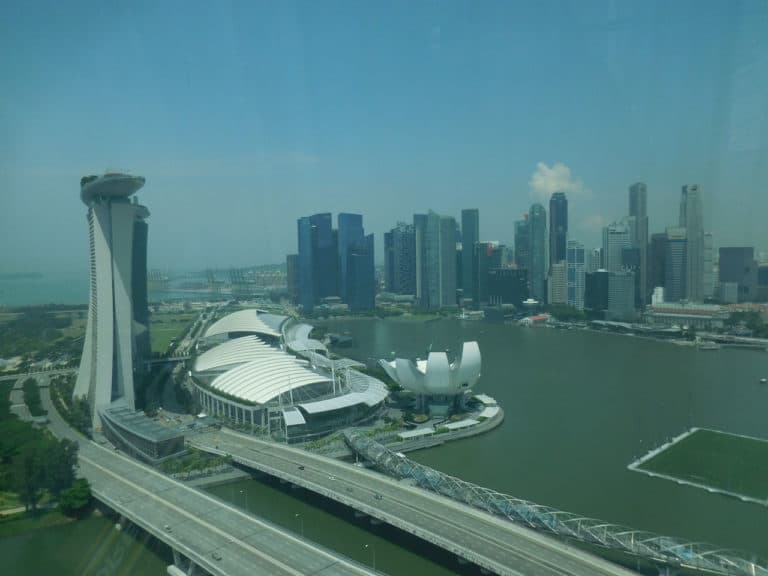
Discovering your tourist type is important for you to have the best travel experience.
There is no better or worse style than the other. Everyone is good, what is important is where you feel best.
You can now be in one and then switch to another as long as you are willing to take on a new posture.
Just to simplify the conversation, I will not distinguish between tourists and travelers here. Here we will call everyone as a tourist.
At this point, the style can be for anyone. The difference will be in the intensity of each characteristic that each one has.
If you have any questions about traveling, see Everything you need to know to travel more and better.
Example: The tourist and / or standard traveler
The first point is they look for ready-made travel packages.
Both the tourists and travelers who are in this category will travel with tour packages, the difference is the tourist standard will seek for travel packages to Disney.
On the other hand, standard traveler will seek for immersion travel packages in the knowledge of yoga in Rishikesh (world yoga capital) in India.
To find out your tourist type, we need to observe two characteristic.
- What tourist type are you?
- What kind of tourism do you like to do?
How to plan your trip around the world of your dreams.
Get the knowledge and tools that will make you an expert in traveling around the world, with
- Total freedom of choice.
- Lower cost because you do not have to pay anyone to do it for you.
- You can change your plans at any time and for any reason.
- You can cancel, change and simply do not pay fines or penalties.
1 – What tourist type are you?
A – the tourist standard:.
The tourist who follows the standards. It has the following characteristics:
- He looks for ready-made travel packages.
- Well formatted tours.
- Come to the restaurant, where everyone is.
- Go on the schedule and standard attractions of each place.
- Traveling the most within the possible standard.
The standard tourist aims to be as comfortable as possible and within what he knows.
They look for the places where your behavior standard fits into the destination or go to the most “famous” places.
Get the structured trip with times and places already well-known.
They like to go where everything looks like their house, eats as close to their taste and avoids anything out of standard.
Tourist seek to know places, food, and people that are in a certain way within a comfort zone.
Also seek the security of always having someone taking care of all the details of the trip.
Advantages of being a tourist standard:
- The tranquility, security and comfort during the trip.
- Lots of tour package options.
- Total travel costs much more affordable.
As they are within your traveling standard the disadvantages in reality can be seen as opportunities to change style.
B – The Tourist explorer:
This is what, although most follow, seeks to find some alternative. Its characteristics are as follows:
- He even goes in the standard places, but tries to find out something more from each place.
- Look for some alternative tours.
- Likes to try new restaurants, shows, etc.
The tourist explorer has the main characteristics of the tourist standard, but is willing to go a little further than what is offered.
It is also open and go in alternative places, but with the comfort and safety of someone taking care of the main details.
It is open to take some “risks” to find new places.
Look for travel packages to places a bit off the main attractions.
Advantages of the tourist explorer.
- It continues in the comfort of the known, but has the possibility to try something new.
- The cost of travel continues at a reasonable level.
- The amount of options may be smaller, but still very easy to find.
C – The Independent Tourist type:
This is the restless type and does not like to follow the pattern, wishing to avoid mass tourism in favor of an individualized and independent approach.
Its characteristics are:
- Rarely does the flow.
- Prefer to explore places without a pattern to follow.
- Usually do not use closed travel packages.
- Avoid to the maximum being in the places and schedule that the other ordinary tourists are.
They tend to explore their destinations, chosen on their own and at their own pace, with an emphasis on enjoying local food, architecture, history and culture.
The main objective is to know the places as close as possible to the residents reality.
He leaves his comfort zone and is not afraid to try.
It seeks to do everything that is not what it knows in its day to day.
They share their passion for discovering unusual places and for adventures.
Advantages of the independent tourist type.
- Total freedom to come and go and when you want.
- Know all possible cultures.
- As you have no restrictions, your options are limitless.
- The costs are as varied as possible
D – Luxury Tourist.
They are tourists who like to feel unique. Its characteristics are:
- Exclusive services / services.
- They do not like to feel in the crowd.
- Beside cam be in the same places, but with personalized treatment.
- Travel with a certain isolation like SPA, all inclusive, cabins etc.
The luxury tourist is looking for unique experiences, even if they are in common places.
Everything revolves around the comfort and exclusivity of food, hotels, shows etc.
They prefer all-inclusive services where sophistication and exclusivity are high.
The luxury traveler wants to go without stress, out of routine, that their needs are met and hopes that their expectations are surpassed.
E – Business tourist.
They are those who are traveling to work. Its characteristics are.
- You have very little time in each place.
- Usually they visit a few places and only the main ones.
- They prefer restaurants, shops, shows where “professionals” attend.
- You must always maintain a position that is consistent with the company where you work.
Beside the business tourist has little time to explore places on his own, he still uses all the means of a tourist, such as hotels, restaurants, etc.
Although new technologies affect the amount of business travel, such as videoconferencing, it is still one of the most important types in the tourism industry.
The business tourist is looking for ease as they do not have the time to look around.
Beyond of course they need to maintain a more professional posture.

Become a smart Traveler
Subscribe now to receive my tips, knowledge and tools. It will let you travel more and better
2 – What kind of tourism do you like to do?
Find below some of the most common types of tourism:
Cultural tourism
People travel with the focus on knowing the main historical, artistic and cultural points.
Concentrating on the big cities, famous historical places, including festivals or any kind of traditional celebration / party of a region etc.
- Ruins of temples and other buildings of Ancient Greece.
- Historical cities of Minas Gerais.
- Palaces and museums of Paris.
Consumer tourism.
Basically they are short trips, on excursions or even individual trips to acquire products of the place.
Usually they are made by the products being of lower cost, exclusive manufacturing and / or reduction of taxes.
Many people from the interior come to São Paulo (Capital) to buy products on the street March 25th.
Cities in the state of São Paulo and its specialties:
- City of Cunha, the city of ceramics
- Embu das Artes, the city of artisans.
- São Bento do Sapucaí, the city of wood sculptures.
- Serra Negra, the city of knits and winter clothes
Study tourism
Tourism with the aim of carrying out some course.
The courses can be on the most varied subjects (like gastronomy, arts and languages) and have various durations.
Certainly the best known are studying languages and exchanging in another country.
Business tourism
Certainly the best known. It is defined as tourism made with a professional purpose.
It can be from a meeting, workshop, sales promotion etc.
The main thing is that the reason for the trip is related to the work of each one.
Gastronomic Tourism
Gastronomic tourism has as main objective to try the traditional gastronomy of the place.
- Visit the various gastronomic festivals of São Paulo.
- Stroll through the municipal market of São Paulo.
- Indulge in traditional Bixiga canteens
- 13 bars to enjoy happy hour with delicious skewers in São Paulo
Eco tourism
Here the tourist is interested in having contact with the local nature. Usually people are concerned with the ecological preservation of places
Adventure Tourism
It is a tourist type that is always looking for “adrenaline”. Looking for opportunities to carry out activities that involves a little risk, seeking to overcome their limits.
A good example is going to New Zealand, considered the world capital of extreme sports.
See here my 23 day trip through New Zealand with MotorHome
Religious Tourism
Religious tourism aims to visit places with meaning in religion or personal beliefs.
In Brazil we have:
- Caravans for Aparecida de Norte.
- Wash the stairs of the church of Senhor do Bonfim in Bahia.
- Círio de Nazaré in Belém do Pará.
- Juazeiro do Norte (Father Cicero) in Ceará.
My type of traveler
I am an independent traveler and explorer who likes adventure tourism, ecological and cultural.
So I do not like travel packages, follow the flow. I like to go to nature and have some better challenge.
How about you? What is your traveler type?
Leave your comment. You can send me an email I will be happy to answer.

The wander traveler
I’m José Carlos Costa, an adventurer who decided to wander the world in search of meeting people, places and cultures.
Join me on this journey of discovery, where I will share many photos, events and tips to help you also venture into this world..
Other subjects that may interest you.
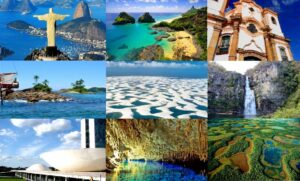
Discover the Best Places to Travel in Brazil
Choosing the best places to travel is a big goal and life dream for many people. As an adventurer, I decided to wander the world

Best Time to Visit the Main Cities in the World
Which time is best is difficult to answer, as it depends on a lot of information, but these cities are certainly on any list of

17 best things to do in Rio de Janeiro
Rio de Janeiro is certainly the best-known tourist destination in Brazil. However, most come with the image of the beaches of Ipanema and Copacabana, Christ

Exploring Everglades National Park: Top Must-See Attractions
Everglades National Park is the largest subtropical wilderness in the United States. Being the third largest national park, it is full of mangroves and swamps.
Send a message
Planing your travel tips and tricks.
Here are tips and tools to make the journey more enjoyable.
If you still have doubt.
Check the blog area with the materials that will help you on your trip as:
Book your flight.
Finding cheap air tickets can be difficult and stressful, but with my blog’s tips and using Skyscanner or Momondo the task can be even fun. Today are the most complete tools on the market . In my experience I have seen that even using others these two end up having the best prices.
Book your accommodation.
If you prefer Hostel a great tool is Hostelwold , If you want besides hostels, other options use the Booking.com . I have used both very often and always find the best prices.
Travel insurance.
Insurance is what we never want to use, but it is traumatic if we need and not have it. It will cover the costs of any eventuality of illness, injury, theft and / or ticket cancellations, etc. It is extremely important to have as you never know what can happen. I have used the WorldNomads , which always have the insurance coverage that travelers need, in addition to having coverage worldwide.
Table of Contents

GET MY BEST TIPS DIRECTLY IN YOUR EMAIL!
Copyright 2024 © all rights reserved. the wander traveler, leave a reply cancel reply.

What Are the Types of Attractions in Tourism?
By Alice Nichols
Tourism is one of the most significant industries worldwide, with millions of people traveling every year to explore new places, cultures, and experiences. As a tourist destination, it’s essential to understand the different types of attractions that visitors seek.
Attractions are the primary motivators for tourism, and understanding them can help destinations develop marketing strategies to attract more visitors. In this article, we’ll explore the various types of attractions in tourism.
Natural Attractions
Natural attractions are some of the most popular tourist destinations, drawing millions of visitors each year. These are natural sites that showcase the beauty and diversity of nature.
Examples include beaches, mountains, waterfalls, forests, national parks, and wildlife reserves. Natural attractions provide opportunities for tourists to engage in outdoor activities such as hiking, camping, swimming or simply enjoying scenic views.
Cultural Attractions
Cultural attractions offer visitors a glimpse into a country’s history and heritage. These sites include museums, art galleries, historical monuments and landmarks such as temples or churches. Cultural attractions allow tourists to learn about a country’s traditions and customs while also providing opportunities to interact with locals.
Entertainment Attractions
Entertainment attractions offer visitors exciting experiences that provide fun and entertainment. Examples include theme parks, water parks or amusement parks where visitors can enjoy thrilling rides or shows. Entertainment attractions are suitable for families with children who want to have fun together.
Adventure Attractions
Adventure attractions provide tourists with adrenaline-pumping experiences that test their limits. Examples include bungee jumping, skydiving or white-water rafting. These activities are perfect for thrill-seekers who want to challenge themselves physically and mentally.
Shopping Attractions
Shopping is one of the top activities for tourists all around the world. Shopping centers or markets offer a variety of products ranging from souvenirs, handicrafts, and luxury items. Shopping attractions are perfect for those who want to indulge in retail therapy while exploring new places.
Culinary Attractions
Culinary attractions offer tourists a chance to explore a country’s cuisine and culinary traditions. Food tours, cooking classes or restaurant hopping are some of the activities that tourists can enjoy. Culinary attractions provide an immersive experience for visitors who want to taste local dishes and learn about the cultural significance of food.
In conclusion, there are various types of attractions that draw tourists to different destinations worldwide. Natural attractions offer breathtaking views and outdoor activities.
10 Related Question Answers Found
What are the four types of attraction in tourism, what are the types of events in tourism, what are the types and characteristics of tourism, what are primary attractions in tourism, what is tourism and types of tourism, what is human attraction in tourism, what are the different segments of tourism, what are different types of tourism, what are the different types of tourism, what is attraction in tourism and its types, backpacking - budget travel - business travel - cruise ship - vacation - tourism - resort - cruise - road trip - destination wedding - tourist destination - best places, london - madrid - paris - prague - dubai - barcelona - rome.
© 2024 LuxuryTraveldiva

What is Tourism Product? Definition, Types, Characteristics
- Post last modified: 3 October 2021
- Reading time: 14 mins read
- Post category: Uncategorized
What is Tourism Product?
Tourism Products are a combination of goods and services demanded by a tourist during travel to and stay at a destination. These include natural, cultural and manmade attractions and facilities such as hotels, transport and ancillary services.
In this process, tourists derive an experience which varies from individual to individual. From a broader perspective, the sum total of experiences derived by the tourists during the entire trip can be considered as the product.
Table of Content
- 1 What is Tourism Product?
- 2 Definition of Tourism Product
- 3.1 Natural Tourism Product
- 3.2 Man-Made Tourism Product
- 3.3 Symbiotic Tourism Product
- 3.4 Event Based Tourism
- 3.5 Site Based Tourism Product
- 4.1 Intangibility
- 4.2 Inseperatability
- 4.3 Perishability
- 4.4 Heterogeneity
- 4.5 Essentially of Users Presence
- 4.6 Complexity in Marketing
- 4.7 Absence of Ownership
Definition of Tourism Product
Burkat and Medlik say tourism products to an array of integrated products, which consist of objects and attractions, transportation, accommodation and entertainment, where each element of the tourism product is prepared by individual companies and are offered separately to consumers (tourist/tourist).
The tourism “product” is not the destination, but it is about the experiences of that place and what happens there. – Chris Ryan
Economist M. Sinclair and Mike Stabler define the tourism product as a “composite product involving transport, accommodation, catering, natural resources, entertainment and other facilities and services, such as shops and banks, travel agents and tour operators.”
According to Suswantoro (2007:75) on substantially the understanding of tourism products “is obtained and the overall service felt or enjoyed by tourists since he left his residence to the tourist destination of his choice and to return home where she originally departed”.
Types of Tourism Products
Following figure describes the classification of Tourism Product:
Natural Tourism Product
Man-made tourism product, symbiotic tourism product, event based tourism, site based tourism product.
These are the products connected to the natural environment. Natural environment that constitutes natural resources which is related to area, climate and its settings, and the landscapes. These natural resources are the most important elements in a destination’s attraction. Such as countryside, climate, natural beauty, water, flora and fauna, wildlife, beaches, deserts, islands or any scenic attraction.
Some examples of natural tourism products in India are Marina beach- Chennai, Darjeeling hill station-West Bengal, Islands of Andaman & Nicobar- Andaman & Nicobar, Deserts of Thar-Rajasthan, etc
Something which is not natural, found in the destinations to attract the tourists. These are man-made creations. As per the tourism point of view they are made for pleasure, leisure or business.
Man-made tourism products are further divided into three subtypes:
- Sites and areas of archaeological interest
- Historical buildings and monuments
- Places of historical significance l museums and art galleries
- Political and educational institutions
- Religious institutions
- Fairs and festivals
- Arts and handicrafts
- Folklore l native life and customs
- Amusement and recreation parks
- Sporting events
- Zoos and oceanariums
- Cinemas and theatres
- Night life l cuisines
Examples of Man-made tourism products are Ajanta and Ellora cave-Maharashtra (Cultural), Surajkund Craft Mela-Haryana (Traditional), Essel World-Mumbai, etc
This type of tourism product do not fall in any particular category because they are a blend of nature and man but the core attraction is nature. These are the natural resource that has been converted into a tourism product by maintaining and managing them.
In other words man has taken initiative to preserve the natural aspects of earth and also managed in a way to provide best possible services to the tourists who come for the visit, for example, accommodation, parking facilities, etc. Some examples are National Park or Wildlife Sanctuaries, Flower Festival, Marine Park, Aero and Water Sports, Botanical Garden etc.
In India, there are many national parks like Ranthambhore-Rajasthan, where tigers and many animals are preserved and tourists are given facilities like a jungle safari.
Product Here event is the main source of attraction. Tourist comes to observe and participate in the events. Events are temporary in nature and are often mounted in order to increase the number of tourists to a particular destination.
Some events are for a short time scale while other last for longer days. Sometimes events are mounted in those places where the tourist’s eye usually don’t reach such as unusual exhibitions.
Some examples of event-based tourism product include Camel Polo at Jaisalmer- Rajasthan, Kite flying in Ahmedabad-Gujarat, where tourists also participate and observes. In Snake boat race-Kerela, one can enjoy witnessing it. Short time scale event includes Republic day parade-New Delhi and long days event include Khajuraho dance festival-Madhya Pradesh.
It is a particular site or a place, permanent in nature which is the main source of attraction for the tourists. In India examples are like Taj Mahal, Beaches of Goa, Sunset at Kanyakumari, Temples of Khajuraho, etc.
Characteristics of Tourism Product
Following are the main characteristics of tourism products:
Intangibility
Inseperatability, perishability, heterogeneity, essentially of users presence, complexity in marketing, absence of ownership.
As discussed earlier in this chapter, tourism products are actually the services that are being sold to the tourists, and it’s not the goods. Services can’t be seen, smelled, felt or touched, it can only be experienced. What can be seen is their effect.
For example, a guide’s comments can be heard. A travel agents books a ticket from place A to B. The ticket is just a piece of paper, an entry pass for using the service. An airline provides the service of transportation, comfort and leisure. A thorough evaluation of the service before buying it is therefore impossible and leads customers to use other cues to help them assess the service like the interior of the restaurant, the appearance of the hotel entrance or the behaviour of the receptionist.
A service of a tourism product cannot be separated from the provider of the service. For most services, the producer and the seller are the same people. Services are manufactured and consumed at the same time. In the case of products, consumption takes place after production and often far away from the factory.
In the case of tourism products for example a guide has to be present to explain the attraction. A pilot has to be present to fly a plane. Both service providers and the service user have to be physically present for mutually satisfying the exchange of service. The visitor to a national park cannot experience counter service if the receptionist is not present, nor can the receptionist render the service is the visitor is absent.
The tourism product is highly perishable, which means it cannot be stored. For example, a hotel room or an aeroplane seat that is not sold on a particular day, is a lost sale. If the tourists don’t visit a particular place, the opportunity is lost. If the opportunity is lost, the moment is lost. This adversely affects the tourism business.
The demand has to be managed by the marketer in such a way as to ensure that as little capacity as possible is lost. The problem is unique for the tourism industry. Due to these reason sometimes heavy discount is offered by hotels or transport generating organization.
Services offered by most people are never the same. There is some degree of variability present in almost all types of services. This may be due to the extensive involvement of people in the production of service. This issue is not present when a machine dominates. Depending on the mood, behaviour, working style, efficiency and knowledge of the people variability exist.
For example, all air hostesses cannot provide the same quality service like the other. Yet again the same individual air hostess may not perform the same uniform service both in the morning as well as in the evening.
Even the tour package and the aircraft can’t be consistent of equal standards because an aircraft can de-shape the travelling pleasure into a nightmare and a holiday seaside is ruined by the prolonged rainy spell.
Another reason for variability of service is the involvement of customers in the process of product delivery and consumption system. For example, a musician performing at a program may not perform with uniformity. His performance will depend on the response and appreciation of the audience. Hence service varies from person to person, time to time and from situation to situation.
In travel and tourism businesses, service quality depends on uncontrollable factors and there is no sure way of knowing whether the service delivered matched what was planned or promoted, or what was expected by the customer.
Presence of the user is necessary to avail the service. The customer or the guest has to be personally present on the spot. It can’t be brought to the user. As in the case of other tangible goods, the buyer can avail the service from anywhere or from his home. But in the case of tourism products, it is not at all possible. The tourist has to go to the tourist attraction to experience the tour.
However the marketers here need an in-depth study of users behaviour, tastes, preferences, likes and dislikes so that expectations and realities coincide and satisfaction is made possible.
Tourism product involves complexity in marketing. It requires a lot of effort to convince a buyer. As in the case of travel agents. In order to sell their tour package they need to convince the customer by introducing various facilities, discounts and services. Product demonstration is bit difficult in the case of tourism product.
As in the case of tangible goods like television. As soon as we buy it, we become the owner of it. But this is not the case with tourism products. A tourism product when sold to the customer or tourist, he can only avail the service but can’t be its owner.
For example, while buying a hotel room, while buying a seat in an aircraft or a luxurious train, you can only take the facilities of the service for a certain time. You can’t be its owner for lifelong.
Please Share This Share this content
- Opens in a new window X
- Opens in a new window Facebook
- Opens in a new window Pinterest
- Opens in a new window LinkedIn
- Opens in a new window Reddit
- Opens in a new window WhatsApp
You Might Also Like
Supplementary accommodation, buffet flower arrangement, pilgrimage places in india, what is breakfast types, table setting, cover, order of service, cooking materials: ingredients, fats, oils, raising agents, liquids, flavourings and seasonings, sweetenings, thickening agents, home stays in india, leave a reply cancel reply.
Save my name, email, and website in this browser for the next time I comment.
- Airport Transfers
- Attractions & Tours
- Flight + Hotel
- Destinations
- Trip.com Rewards
Paris 2024: Let Trip.com Take You Around Paris
Paris 2024 Venue 1: Grand Palais
Louvre museum, paris 2024 venue 2: paris la défense arena, champs-elysées, montmartre and sacré-cœur basilica, seine river, eiffel tower, hôtel des invalides, champ de mars, paris 2024 venue 9: stade de france, paris 2024 venue 10: bercy arena, 2) paris 2024: transport, 3) paris 2024: transport in host cities, 4) paris 2024: app checklist, 5) paris 2024: practical travel tips.
Show More
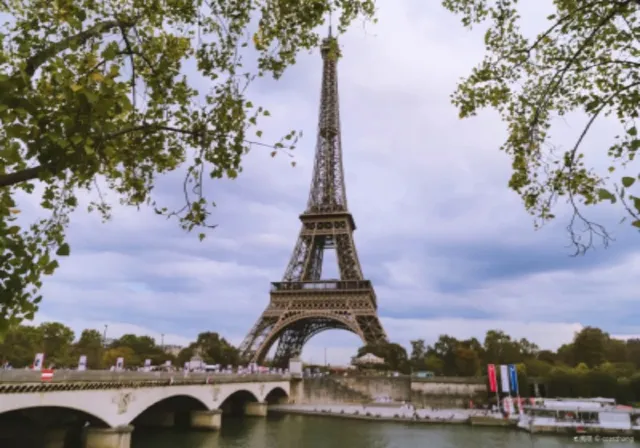
All eyes will be on Paris this summer with over 15 million tourists coming in from around the world and athletes, presenting different countries and regions, competing against each other for the coveted Olympic gold medal. Competition venues are spread out across the whole city of Paris, from the majestic Stade de France to the historic square in front of Notre Dame de Paris and to the picturesque banks of the Seine. Every corner of the city will become a stage for this sports extravaganza. As Paris 2024 approaches, many have already started booking their tickets to France. Beyond the sports competitions, this is also a perfect opportunity to experience the charm of Paris. Don't worry. I've got you covered. Just read on.
1. Paris 2024: Competition Venues and Surrounding Attractions
2. Paris 2024: Transport
3. Paris 2024: Transport in Host Cities
4. Paris 2024: App Checklist
5. Paris 2024: Practical Travel Tips
1) Paris 2024: Competition Venues and Surrounding Attractions
From July 26 to August 11, a series of exciting Olympics events will be held at 35 different venues across France, 25 of them being inside the Paris region. The following is a list of the main Paris 2024 Summer Olympics venues and their surrounding must-see attractions :
Competitions:
Fencing ( Olympic Fencing Schedule | Paris 2024 (olympics.com) )
Taekwondo ( Olympic Taekwondo Schedule | Paris 2024 (olympics.com) )
Area: 8th arrondissement
Stations: Franklin D. Roosevelt station (Metro Line 1) and Invalides (RER C, Metro Line 8 and 13)
Nearby Olympic venues: Invalides, Eiffel Tower Stadium, Champ de Mars Arena, La Concorde
Must-see attractions:
The Louvre Museum is not only a sacred place for art but also a treasure value of human civilization. Here, you can traverse through time and space and converse with famous ancient and contemporary artists to gain a greater appreciation for the brilliance of human wisdom. Whether you are an art lover or a history enthusiast, you will find endless surprises and touching moments at the Louvre Museum. As you step into the Louvre Museum, you are not just entering a world of art but embarking on a journey to uncover moving stories of the past.
Other nearby attractions: Arc de Triomphe, Champs-Elysées, Petit Palais, Place de la Concorde, Pont Alexandre III
Water Polo ( Olympic Water Polo Schedule | Paris 2024 (olympics.com) )
Swimming ( Olympic Swimming Schedule | Paris 2024 (olympics.com) )
Area: Hauts-de-Seine (92)
Stations: Nanterre Préfecture (RER A)
Nearby Olympic venues: Champs-Elysées, Yves-du-Manoir Stadium
Arc de Triomphe
More than just a landmark of Paris, the Arc de Triomphe is also a historical monument with many stories and emotions behind it. Marvel at its magnificence from below or climb up to the viewing platform to see the beautiful Paris skyline. Every moment here feels like a triumph. Over the years, the Arc de Triomphe has stood in the heart of Partis against the test of time, witnessing the city's glory and dreams.
Champs-Elysées is not just a simple commercial street but an artery of Paris, in which the city's passion and aspirations flow. The street has hosted many important events, including large-scale celebrations, parades, and the annual Tour de France. As a symbol of the city, Champs-Elysées is a fusion of romance and prosperity and is a Paris attraction that cannot be missed.
Other nearby attractions: Arche de La Défense
Paris 2024 Venue 3: Olympic Aquatics Centre
Diving ( Olympic Diving Schedule | Paris 2024 (olympics.com) )
Artistic Swimming ( Olympic Artistic Swimming Schedule | Paris 2024 (olympics.com) )
Area: Seine-Saint-Denis (93)
Stations: Saint-Denis - Porte de Paris (Metro Line 13)
Nearby Olympic venues: Stade de France, La Chapelle Arena, Olympic and Paralympic Village, La Courneuve Shooting Range, Le Bourget Sport Climbing Venue
Montmartre is the shining pearl of Paris. Located in the northern region, it overlooks the entire city like an elegant lady. The many tales of this legendary hill provide the inspiration for many colorful paintings.
Other nearby attractions: Sacré Cœur Basilica, Saint-Denis Basilica, Saint-Ouen flea market
Paris 2024 Venue 4: Porte de la Chapelle Arena
Badminton ( Olympic Badminton Schedule | Paris 2024 (olympics.com) )
Rhythmic Gymnastics ( Olympic Rhythmic Gymnastics Schedule | Paris 2024 (olympics.com) )
Area: 18th arrondissement
Stations: Porte de La Chapelle (Tramway T3b), Porte de La Chapelle (bus)
Nearby Olympic venues: Stade de France, Olympic Aquatics Centre
The Montmartre and Sacré-Cœur Basilica are full of charm and magic. They present gorgeous panoramic views of the city, a rich artistic atmosphere, diverse history and culture, and a romantic way of life. Whether you are an art lover, a history enthusiast, or simply a romantic, there will be something for you at Montmartre.
Other nearby attractions: Saint-Denis Basilica, Saint-Ouen flea market
Paris 2024 Venue 5: Pont Alexandre III
Cycling Road ( Olympic Cycling Road Schedule | Paris 2024 (olympics.com) )
Triathlon ( Olympic Triathlon Schedule | Paris 2024 (olympics.com) )
Marathon Swimming ( Olympic Marathon Swimming Schedule | Paris 2024 (olympics.com) )
Area: 7th arrondissement
Stations: Invalides (RER C, Metro Line 8 and 13), Pont de l'Alma (RER C), Franklin D. Roosevelt (Metro Line 1 and 9)
Nearby Olympic venues: La Concorde, Esplanade des Invalides, Grand Palais, Pont d'Iéna, Arena Champ-de-Mars, Eiffel Tower Stadium
The Seine River is the heart and soul of Paris. It flows quietly through the City of Lights like a silver ribbon that ties the city's glorious past and romanticism together.
Other nearby attractions: Place de la Concorde, Champs-Elysées, Hôtel des Invalides, Eiffel Tower
Paris 2024 Venue 6: Eiffel Tower Stadium
Competitions: Beach Volleyball ( Olympic Beach Volleyball Schedule | Paris 2024 (olympics.com) )
Area: 16th arrondissement
Stations: Bir-Hakeim (Metro Line 6) Trocadéro (Metro Line 6 and 9)
Nearby Olympic venues: Champ de Mars Arena, Pont d'Iéna, Grand Palais, Invalides
The Eiffel Tower, a monumental steel dragon that soars into the clouds, overlooks this romantic city in all its majesty.This architectural wonder is also widely regarded as a symbol of romance by everyone around the world. As the venue for the Paris 2024 beach volleyball competition, it creates a new level of splendor by bringing the excitement of sports and the elegance of architectural design together.
Other nearby attractions: Ecole Militaire, Hôtel des Invalides, Rodin Museum, Quai Branly Museum
Paris 2024 Venue 7: Champ de Mars Arena
Judo ( Olympic Judo Schedule | Paris 2024 (olympics.com) )
Wrestling ( Olympic Wrestling Schedule | Paris 2024 (olympics.com) )
Stations: La Motte-Picquet – Grenelle (Metro Line 6, 8 and 10), École Militaire (Metro Line 8), Champ de Mars – Tour Eiffel (RER C)
Nearby Olympic venues: Eiffel Tower Stadium, Pont d'Iéna
Located in the heart of Paris and on the left bank of the Seine River, Hôtel des Invalides is a magnificent architecture with a rich history. Not only is it home to the French Military Museum, but it is also the famous mausoleum of Napoleon I.
Other nearby attractions: Eiffel Tower, Ecole Militaire, Trocadéro
Paris 2024 Venue 8: South Paris Arena
Weightlifting Olympic Weightlifting Schedule | Paris 2024 (olympics.com)
Table Tennis Olympic Table Tennis Schedule | Paris 2024 (olympics.com)
Volleyball ( Olympic Volleyball Schedule | Paris 2024 (olympics.com) )
Handball ( Olympic Handball Schedule | Paris 2024 (olympics.com) )
Area: 15th arrondissement
Stations: Massy-Palaiseau (RER B and RER C)
Nearby Olympic venues: Roland Garros, Parc des Princes, Pierre de Coubertin Stadium, Eiffel Tower Stadium, Champ de Mars Arena
Champ de Mars is a wide green space located at the foot of the marvelous Eiffel Tower. As a sanctuary of tranquility away from the bustles of the city filled with culture and history, it provides the perfect setting for those looking for a private, intimate moment or a quiet, relaxing break.
Other nearby attractions: Bois de Boulogne, Eiffel Tower
Athletics ( Olympic Athletics Schedule | Paris 2024 (olympics.com) )
Rugby Sevens ( Olympic Rugby Sevens Schedule | Paris 2024 (olympics.com) )
Stations: Saint-Denis – Porte de Paris (Metro Line 13), La Plaine – Stade de France (RER B), Stade de France – Saint-Denis (RER D)
Nearby Olympic venues: Olympic Aquatics Centre, La Courneuve Shooting Range, La Chapelle Arena, Le Bourget Climbing Venue
Other nearby attractions: Saint-Ouen flea market, Saint-Denis Basilica
Artistic Gymnastics ( Olympic Artistic Gymnastics Schedule | Paris 2024 (olympics.com) )
Basketball ( Olympic Basketball Schedule | Paris 2024 (olympics.com) )
Trampoline Gymnastics ( Olympic Trampoline Gymnastics Schedule | Paris 2024 (olympics.com) )
Area: 12th arrondissement
Stations: Bercy (Metro Line 6 and 14), Gare de Lyon (RER A and RER D)
Other nearby attractions: Bois de Vincennes, Latin Quarter, Notre-Dame Cathedral, Hôtel de Ville de Paris
For more information, visit Olympic Schedule | Paris 2024 (olympics.com)
- Buying Metro and Bus Tickets
Method 1: Buy metro and bus tickets at metro ticketing machines
Method 2: Mobile wallets
(1) Open your mobile wallet app and tap the "+" icon in the upper right of the screen. Select "Travel Card."
(2) Select "France" as the region, and you will see the "Navigo" option.
(3) Tap that, and you will see a variety of ticket card options. Choose the one that is most suitable for your travel needs.
Method 3: Through the official transport app (Transport Public Paris 2024) during the Olympic Games
- Traffic Restrictions During Paris 2024
Metro and RER station closures: Certain stations on RER C and Metro Line 1, 4, 5, 6, 7, 8, 9, 12, and 13 will be temporarily closed before Paris 2024.
Tramway station closures: Certain stations on Tramway T2, T3a, and T3b will be out of service during the Paris 2024 Summer Olympics and Paralympic Games.
Areas affected by traffic restrictions: Place de la Concorde, Champ de Mars, Quai Jacques Chirac, Trocadero, Hôtel des Invalides, Grand Palais - Pont Alexandre III, Champs-Elysées and Port des Invalides (left bank), Hotel de Ville area, etc.
Train Stations and Airports
(Source: Paris 2024 official website)
Paris Airport Transport
Charles de Gaulle Airport (CDG)
RER B: There are two stations: Charles de Gaulle Airport 1 and Charles de Gaulle Airport 2. Charles de Gaulle Airport 1 is used for Terminals 1 and 3, while Charles de Gaulle Airport 2 is used for Terminals 2A, 2B, 2C, 2E, and 2F. The journey between downtown Paris and the airport takes around 45 minutes.
CDGVal: Free shuttle buses connecting Terminal 1, 2A, 2C, 2D, 2E, 2F, 2G, and 3. The entire journey takes just 8 minutes.
RoissyBus: 60-minute journey direct from the Paris Opera to Charles de Gaulle Airport. The bus departs every 30 minutes.
Paris-Orly Airport (ORY)
RER B + Orlyval: Tranfer to Orlyval at Antony station.
OrlyBus: Direct bus to downtown Paris.
Tramway T7: Connects Paris-Orly Airport with downtown Paris.
Paris 2024 Apps
Paris 2024 app : The official app of Paris 2024 that is now available in the English language. Users can access real-time Olympic Games news and watch video highlights. The app also has an online mall that lets you purchase unique Olympic Games commemorative products and merchandise with your fingertip.
Paris 2024 Tickets : The official ticketing app for Paris 2024 that allows you to purchase tickets for your favorite events and check the tickets that you have bought.
Transport Public Paris 2024 : A smart navigation app tailor-made for Paris 2024 spectators. It offers extremely helpful route planning services. The app can give you smart recommendations on the nearest bus, metro, and other public transport stops based on your current location. Users can also find useful location information about Olympic venues, major train stations, taxi service points, and bicycle parking spots. In addition, the app contains a comprehensive list of all Paris 2024 venues and nearby attractions. Besides finding the best route to Olympic venues, the app also shows other practical information, such as real-time passenger traffic and waiting time. On top of that, you can also use the app to buy train and bus tickets directly, making travel easier and more accessible.
- Entertainment Apps
Google Maps: A must-have travel navigation app. Not only does it help with route planning, but it also provides useful information such as user ratings and reviews.
SNCF Connect: If you plan to travel by train or high-speed railway from France to neighboring countries such as Switzerland and the United Kingdom, this app will help you buy the tickets.
Bolt, Uber: These ride-hailing apps give you access to nearby drivers quickly, whether for the daily commute or in case of emergencies.
Bonjour RATP: A navigation app for Paris that provides accurate routes and arrival times.
Trip.com: An app that provides one-stop booking services, including flight tickets, hotels, car rentals, attraction tickets, and many more.
Food Delivery:
Waysia : An app with a focus on Southeast Asian cuisines. If you are craving some Thai, Vietnamese, or other Southeast Asian food, this will be your go-to app.
HungaryPanda : Another app for Southeast Asian food. It allows you to have a taste of Asia while in Paris.
Uber Eats : This app is one of the food delivery service platforms that are commonly used by the locals. It offers a variety of local and international food options to meet different tastes.
Deliveroo : Another popular food delivery app that offers a wide variety of food options.
TheFork : This app provides restaurant reservation services. In addition, you can also check out reviews and ratings from other diners to learn more about the restaurant's ambience, food quality, and service standard.
Guide Michelin : This app is known for its good restaurant recommendations and claims to have the lowest "failure rate."
Baggage: Please check the terms and conditions of your airline regarding baggage size and weight restrictions before travel.
Paris airport information: You can use the Paris Airport WeChat mini-program and official account to obtain relevant information on airport transport, shopping, and services. For more information, please visit Paris Airports official website .
Transport tickets during Paris 2024: When buying transport tickets using the Paris 2024 official transport app, please note that the "On my iPhone" option is only available for iOS 17.5 and above.
Dining: For the best dining experience, we strongly recommend booking a table in advance using Google Maps or TheFork.
Trip planning: Visit the Je t'aime Paris official tourism website to get the latest information on traffic restrictions and attractions' opening hours.
Olympic Pass: During Paris 2024, you have to show your Olympic Pass to access areas around competition venues. You can present the QR code on your mobile phone or have it printed on a piece of paper. You can apply for the pass via the Olympic Pass official application website
Free shuttle buses : For the convenience of Paris 2024 spectators, free shuttle buses will be provided between competition venues. Free shuttle service is available 2.5 hours before an event and will end 2 hours after the conclusion of the event.
Bicycle: Paris has introduced around 60 kilometers of new bicycle lanes for the Olympic Games, and there will be temporary parking spaces around major Paris 2024 venues.

Trending Travelogues
Popular travel types, popular attractions, popular ranked lists, popular destinations, recommended attractions at popular destinations.
- Customer Support
- Service Guarantee
- More Service Info
- Website Feedback

- About Trip.com
- Terms & Conditions
- Privacy and Cookies
- About Trip.com Group
Other Services
- Investor Relations
- Affiliate Program
- List Your Property
- Become a Supplier


IMAGES
VIDEO
COMMENTS
The types of tourism destinations . There are different types of tourist destinations around the world. Of course, no two destinations are the same (this is what makes travel so exciting!), but we can generally group destinations together into categories. The most common different categories of tourist destinations are as follows: Beach areas
This is one of the most common types of tourism. Millions of people travel to the beach every year. A few of the top beach tourism destinations include Spain, Thailand, Australia, the United States, Brazil, Mauritius, the Bahamas, the Philippines, and more. There are thousands of spectacular beaches around the world.
There are many different types of tourism based on travelers' motivations and the destination. Find out what are the 8 main tourism types here. ... Fashion tourism is a subset of shopping tourism and among the top tourist destinations for it are cities like Milan, New York, Paris, London, and more. Cultural tourism.
9. Generalists. Generalist tourists are a combination of all types of tourists. These travelers set out to a certain destination with an open mind to experience as much as it has to offer. A generalist tourist can look at a certain style of architecture one day and be interested in the food of a city the next day.
The different types of tourist attractions make up an integral part of the structure of the tourism industry. People travel far and wide to visit a particular tourist attractions. Visiting said attractions could be the reason for their trip, or it could be a byproduct of their trip. There are many different types of tourist attractions.
What are the different types of tourist destinations? Types of tourism and types of tourist destinations may sound synonymous. However, the two have slight conceptual differences. Tourism is a broader concept, including the aspects of tourism and hospitality. At the same time, a tourist destination is a narrower concept applying to places of ...
Not the most glamorous type of travel. 5. Business travel. Business travel is not the time to relax but it's the time to work. People travel for different reasons and in most cases, it's all about the work. This type of travel can last from 1 day up to a few weeks, depending on what you need to take care of.
So pack your bags, unleash your curiosity, and join Qoni Travel as we unravel the thrilling world of 13 different types of tourism you need to know about! 13 Types of Tourism Adventure Tourism. Embarking on an awe-inspiring escapade filled with adrenaline-fueled thrills is the ultimate recipe for infusing your travel adventures with excitement.
6 - Solo Travel. One of the most popular types of travel styles is to experience traveling on your own. It is a great way to get to know yourself and discover how you can adjust to being outside of your comfort zone. It also allows you to push the boundaries of what you are familiar with, be more present and alert wherever you are, and maybe ...
Travelers and tourists alike often seek out different types of tourist destinations when planning a vacation or holiday. Depending on the traveler's preferences, interests, and budget, tourist destinations can range from bustling urban cities to tranquil rural areas. The following are some of the most common types of tourist destination.
Types of Tourism. Tourism has two types and many forms based on the purpose of visit and alternative forms of tourism. ... Each destination will be different in terms of tourism characteristics. The cost and benefits of tourism will vary in each destination and can change over time, depending on tourism and other activities in a destination's ...
2) Countryside tourism. This one is exactly what it says on the tin. Travellers visit remote areas in order to get a taste of something simpler - often for cheaper than anything is available in the big city. This type of tourism isn't as rooted in tours or tourist attractions so much as others.
Pros: Not having to save a lot to travel. Getting to see more for less $$. Hostels typically have a great community built around them. Cons: To make the most of it, you must have a flexible schedule. Risky to travel with a lot of expensive electronics (cameras / laptops). Some destinations won't be conducive to budget travel.
Types of Tourist Destinations. Types of Tourist DestinationsTourist destinations can be divide. into three. broad categories. These are:Coastal areas - where tourists enjoy relaxing on the beaches and other acti. ter sports in mountain areasTourist towns and cities - which may have significant historic or cultural attractions or be impo.
Cultural Neighborhoods 7. Adventure Destinations 8. Architectural Marvels 9. Religious Sites 10. Scenic Routes Conclusion. In this article, we will explore the top 10 types of tourist attractions that you should consider including in your travel itinerary. Each type offers unique experiences and insights into different aspects of our world ...
Tourism is an ever-growing industry that encompasses a wide range of activities and experiences. From adventure tourism to cultural tourism, there are various types of tourism that cater to different interests and preferences. In this article, we'll take a closer look at the five types of tourism that are popular among travelers. 1.
The Caribbean is a region with a plethora of attractions and tourist destinations. It is known for its stunning beaches, crystal-clear waters, lush greenery, and vibrant culture. The diverse geography of the Caribbean allows it to offer numerous types of tourism to its visitors.
Development of Different Types of Tourism in India. India is a top-rated tourist destination in the whole world. Every year, thousands of travellers come here for different tourism. India has unique types of tourism, and they are constantly developing this industry, goods, and services.
There are many different types of tourist destinations; however this report will discuss coastal, urban and rural tourism and give examples of places that appeal to the destination. Main part Coastal tourism. Coastal destination usually associated with the image of seaside resort. Holloway (2006) pointed that it is the most popular appeal of a ...
Different types of tourist. Leisure - these are tourists who travel simply for leisure purposes. A holiday, a short break, a weekend away, whatever it is, it is not related to any work purpose, they are doing it in their own time and for their enjoyment. Business - quite the opposite to above. These tourists are away from home on business.
Look for travel packages to places a bit off the main attractions. Advantages of the tourist explorer. It continues in the comfort of the known, but has the possibility to try something new. The cost of travel continues at a reasonable level. The amount of options may be smaller, but still very easy to find. C - The Independent Tourist type:
As a tourist destination, it's essential to understand the different types of attractions that visitors seek. Attractions are the primary motivators for tourism, and understanding them can help destinations develop marketing strategies to attract more visitors. In this article, we'll explore the various types of attractions in tourism.
Tourism Products are a combination of goods and services demanded by a tourist during travel to and stay at a destination. These include natural, cultural and manmade attractions and facilities such as hotels, transport and ancillary services. In this process, tourists derive an experience which varies from individual to individual.
Trip.com provides tourists with All eyes will be on Paris this summer with over 15 million tourists coming in from around the world and athletes, presenting different countries and regions, competing against each other for the coveted Olympic gold medal. Competition venues are spread out across the whole city of Paris, from the majestic Stade de France to the historic square in front of Notre ...